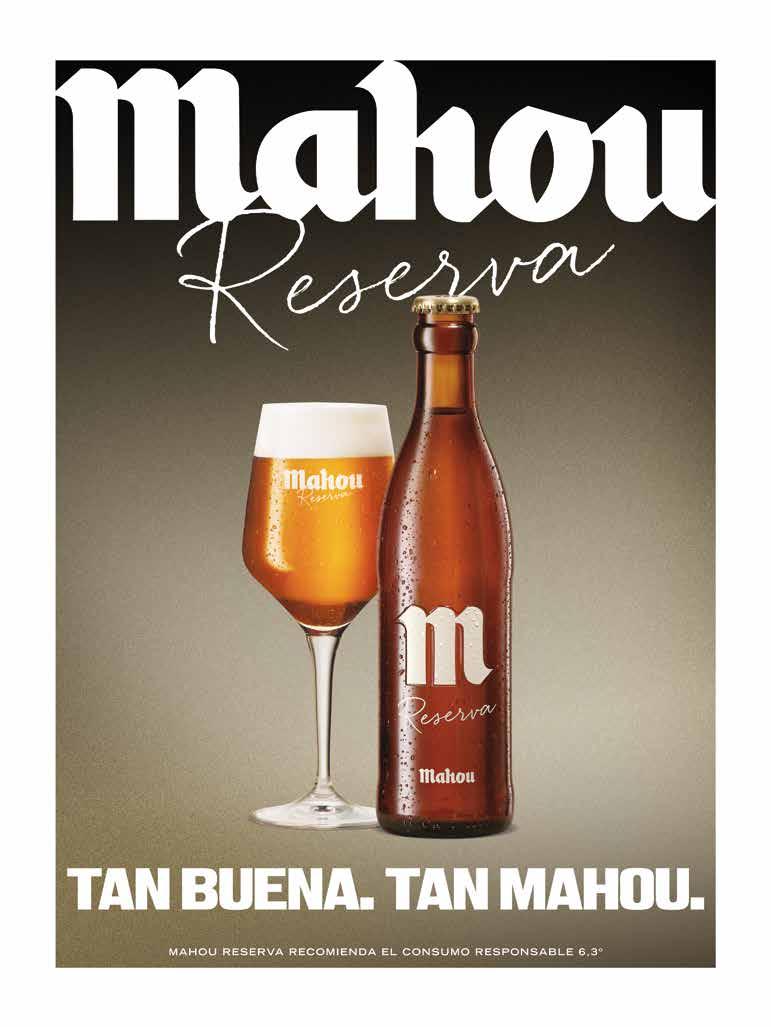AIR NOSTRUM

ANDORRA Rincón exquisito
Exquisite corner
ALBERT LLOVERA, Piloto de rallyes
ALBERT LLOVERA, Paraplegic rally driver
MONTSERRAT, La Montaña de los prodigios
The Mountain of wonders


CARLOS BERTOMEU


ANDORRA Rincón exquisito
Exquisite corner
ALBERT LLOVERA, Piloto de rallyes
ALBERT LLOVERA, Paraplegic rally driver
MONTSERRAT, La Montaña de los prodigios
The Mountain of wonders


CARLOS BERTOMEU
Estimados pasajeros, permitan que en este primer mensaje del año les desee lo mejor para ustedes y sus familias en 2025 y, de forma muy especial, si son residentes en alguno de los 78 municipios que fueron afectados por la DANA el 29 de octubre de 2024.
Quizá, cuando lean estas líneas, estén volando en el reactor CRJ 1000 que el pasado mes de diciembre dedicamos a los voluntarios. Aparte de darles las gracias por su gran labor, panelamos el fuselaje con una estrofa del Himno de Valencia que dice: “Tots a una veu, germans vingau”, Todos a una voz, hermanos venid. Nos pareció que resumía muy bien esa llamada interior que motivó a voluntarios de todas las edades a no cruzarse de brazos ante la tragedia que estaban viendo en los telediarios.
Sin otra motivación que su generosidad y las ganas de ayudar, llegaron de todas las partes del mundo a nuestra tierra para echar una mano a la gente que sufría y muchos han seguido colaborando en las tareas de reconstrucción. Por ello, creo que se han ganado merecidísimamente nuestro respeto. Pienso que los valencianos nunca seremos capaces de expresar suficientemente la in-
mensa gratitud que sentimos por su trabajo y también por el de las Fuerzas y Cuerpos de Seguridad del Estado, los bomberos, los sanitarios, etc.
Tristemente, en Air Nostrum fuimos conscientes de las dimensiones de la catástrofe muy pronto, porque se nos inundaron parcialmente las instalaciones y 46 compañeros que esa noche estaban de turno perdieron sus coches en el parking de la empresa a causa de la riada. Otros 150 trabajadores de la casa que viven en las zonas afectadas también vieron dañados sus hogares y enseres y, lo que es mucho más importante, perdieron algún familiar esa terrible noche. No hay palabras para describir su dolor.
A todos ellos, a los damnificados por la mayor catástrofe natural que hemos vivido en nuestro país, he querido dedicar estas palabras. No les olvidemos. Aunque las imágenes de la tragedia se vayan diluyendo en los medios de comunicación con el paso del tiempo, les aseguro que aún queda mucho que hacer y, con el mismo espíritu de los voluntarios del que les hablaba antes, seguro que todos nosotros podemos encontrar una forma de poner nuestro granito de arena para aliviar su dolor.
Que tengan buen vuelo.
Dear passengers, let this first message of the year convey our best wishes to you and your family in 2025, sending them in a very special way if you are residents of any of the 78 towns that were affected by the DANA on 29 October 2024.
Perhaps when you read these lines you are flying aboard the CRJ1000 jet we dedicated to volunteers in December. In addition to thanking them for their hard work, we added vinyl graphics to the fuselage with a verse from the Valencia anthem that says: Tots a una veu, germans vingau, all in one voice, come along, brothers. We thought it summed up very well that inner call that motivated volunteers of all ages not to sit idly by in the face of the tragedy they were watching on the news.
With no other motivation than their generosity and their desire to help, they came from all over the world to our land to lend a hand to the people who suffered; many have continued to contribute to the reconstruction efforts. That is why I believe that they have really earned our respect. I think that we Valencians will never be able to express enough the immense gratitude we feel for their work and for that of the armed forces, law enforcement, firefighters, first responders, etc.
Sadly, at Air Nostrum we were aware of the scale of the catastrophe very soon because our facilities were partially flooded and 46 colleagues who were on duty that night lost their cars in the company’s parking lot because of the flood. Another 150 of our employees who live in the affected areas also saw their homes and belongings damaged and, more importantly, lost a family member on that dreadful night. There are no words to describe their pain.
To all of them, to those affected by the greatest natural disaster we’ve experienced in our country, I wanted to dedicate these words. Let us not forget them. Even though the images of the tragedy start fading from the media over time, I assure you that there’s still much to do and, in the same spirit of the volunteers I mentioned before, I’m sure that all of us can find a way to do our bit to ease their pain.
Have good flight,

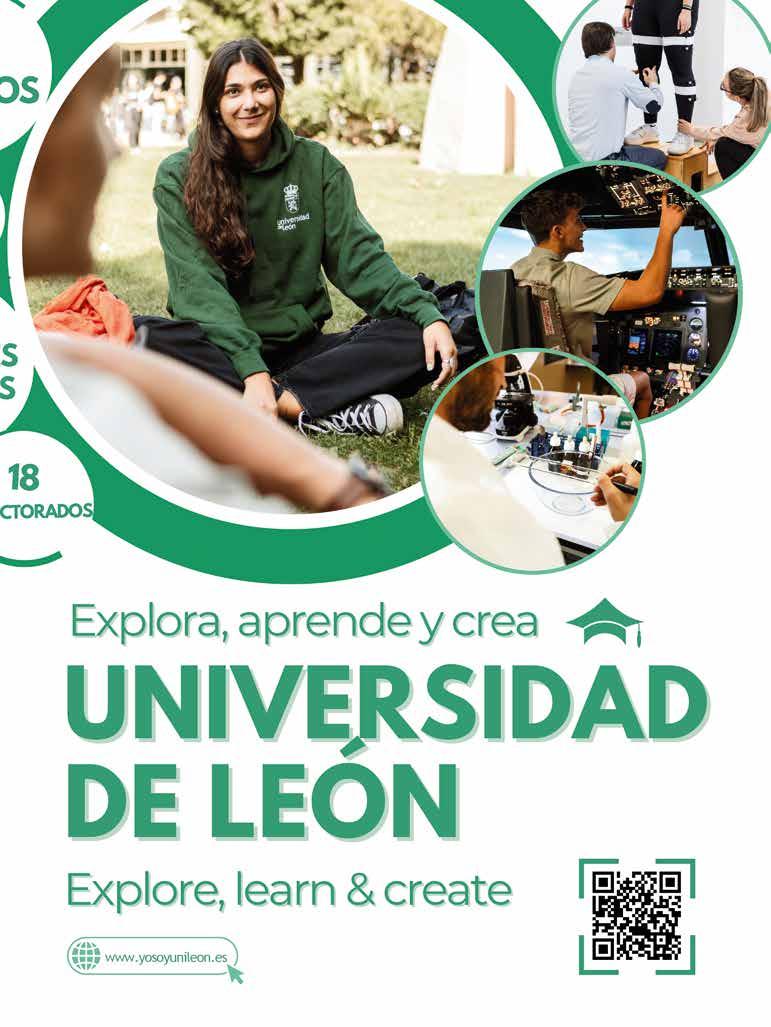

Edita / Publisher
Air Nostrum Líneas Aéreas
Presidente/President Carlos Bertomeu
Director Comunicación Air Nostrum / Communications Director Antonio de Nó
Coordinador Air Nostrum Air Nostrum Coordination
Jorge Aguadé prensa@angs.aero
Dirección ejecutiva / Executive Director
Fernando Santos Vicente
Dirección editorial / Editorial Director
Ana I. Martínez
Dirección de Marketing / Marketing Director
Francisco Robles
Dirección de Publicidad / Advertising Director
Benita Espadas y Virginia Calvo
Redacción / Editors
Gerard Olivares, MJ Prieto, Luis Tejedor, Desiré Alija, Diego Álvarez, Anna Burgstaller, Markel Sierra.
Traducción / Translation
Adriana Pallero Singleton
Firmas invitadas / Guest contributors
Paz Ferrer, Javier Ortega
Diagramación y Diseño
Layout and design
Verónica F. Simón, Carmina Canseco, Marta Menéndez, Irune Méndez, Esperanza Prieto, Cristina Pangua
Fotografía / Photograph
Cristina Bazán, J. C. Barberà
Archivo Editorial MIC, Agencias
Publicidad / Advertising Tel. 646 019 658 – 902 271 902 comunicacion@editorialmic.com
Correspondencia / Contact mic@editorialmic.com



Producción editorial / Editorial production Editorial MIC
www.editorialmic.com
Rincón exquisito Exquisite corner

NANDU JUBANY
Cuando gastronomía y fútbol juegan en el mismo equipo
When gastronomy and football play in the same team Esencia Mediterránea Mediterranean








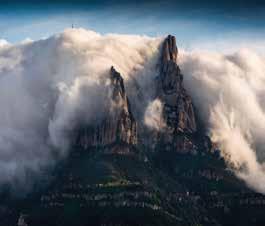
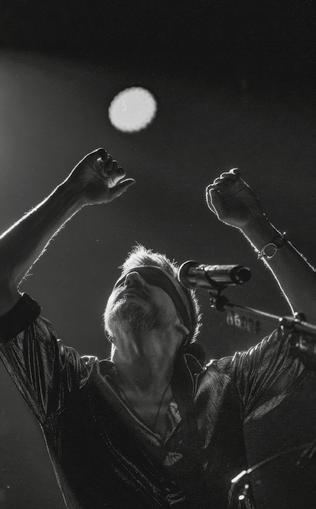
ICONOS ARQUITECTÓNICOS
Tres cosas únicas en Andorra Andorra’s three unique features JAVIER ORTEGA FIGUEIRAL
RELATOS DE VIAJE | TRAVEL MEMORIES

OUTSIDERS
Hasta el final All the way
AIR CARE | PRODUCTOS 74
BEAUTY ADVISOR by PAZ FERRER


ENTREVISTA | INTERVIEW
María Adánez


Francis Drake, incursiones por el mundo raiding the world
114
90
LLEGADAS| SLEEP TIGHT 92
EL LLORENÇ PARC DE LA MAR UN LUGAR PERFECTO PARA CONOCER LAS RAICES DE MALLORCA A PERFECT PLACE TO EXPLORE PALMA’S ROOTS


ENTRE LETRAS | LETTERS 100
MANEL LOUREIRO

RINCONES CON ENCANTO | CHARMING PLACES 108
90 años de leyenda de quienes aman la noche madrileña
90 years of legend of those who love Madrid nightlife


LAB | SCIENCE
CUMPLEAÑOS EN LA CUNA DE LA HUMANIDAD BIRTHDAY IN THE CRADLE OF HUMANKIND
MOTOR | FERRARI 126
911 CUARENTA EDITION

120
Serie limitada para conmemorar el 40º aniversario de Porsche Ibérica Limited Series to Commemorate the 40th Anniversary of Porsche Ibérica
NOTICIAS |
VENTA A BORDO BUY A BORDO
140
NUESTRA COMPAÑIA |
ANA PÉREZ


“El tiempo volando pasa muy rápido” “Time flies when you’re flying”
FIRMA INVITADA
SIMPLEMENTE VIAJAR JUST TRAVELLING Toñy Ramos
150



La frase de Gustave Flaubert sobre la experiencia de viajar no puede ser más acertada: «Viajar te hace ver el pequeño lugar que ocupas en el mundo». Esto es lo que sucede cuando descubres Andorra, un país de poca extensión —468 km2—, pero con una naturaleza de dimensiones colosales. En este destino pirenaico, las montañas se vuelven inabarcables, los valles seducen por su inmensidad y los ríos y lagos adquieren un aire de cuento. El paisaje no escatima en belleza, es mucho en muy poco.
Gustave Flaubert’s saying about the travel experience does ring true: “Travel makes one modest: one sees what a tiny place one occupies in the world.” This is what happens when you discover Andorra, a small-sized country—468 sq km —with a landscape of colossal dimensions. In this Pyrenean destination, the mountains become unfathomable, the valleys captivate with their vastness, and the rivers and lakes look right out of a fairy tale. The landscape does not skimp on beauty; it holds a lot in a very little space.

Vida fuera del asfalto
Los tres parques naturales –valle de Sorteny, valles del Comapedrosa y valle del Madriu-Perafita-Claror, este último declarado Patrimonio de la Humanidad por la Unesco– componen una majestuosa oda a la biodiversidad. Andorra es, sobre todo, vida. Más del 90 % de su extensión es pura naturaleza y abre así las puertas a un particular catálogo de actividades de deporte y ocio que convierten al país en uno de los destinos predilectos de los amantes del aire libre.
Andorra se posiciona como una meca del esquí en Europa con más de 300 km de pistas entre sus grandes estaciones, Grandvalira, Pal-Arinsal y Ordino-Arcalís, que hacen las delicias de los devotos de los deportes de invierno, con una oferta amplia para todos los gustos, edades y niveles.
Pero el esquí no es la única actividad que se practica en las montañas andorranas. Los parajes nevados durante los meses más fríos son perfectos para realizar actividades como el mushing o las travesías con raquetas o motos de nieve. Y cuando el manto blanco se funde, las posibilidades no disminuyen. La primavera y el verano son perfectos para embarcarse en largas caminatas por lagos y valles, explorar algunas de sus dieciocho vías ferratas o aprovechar los remontes y subir a las cotas más altas, esta vez cambiando los esquís por mountain bikes

Ninety per cent of the principality’s territory consists of mountains, lakes and forests.
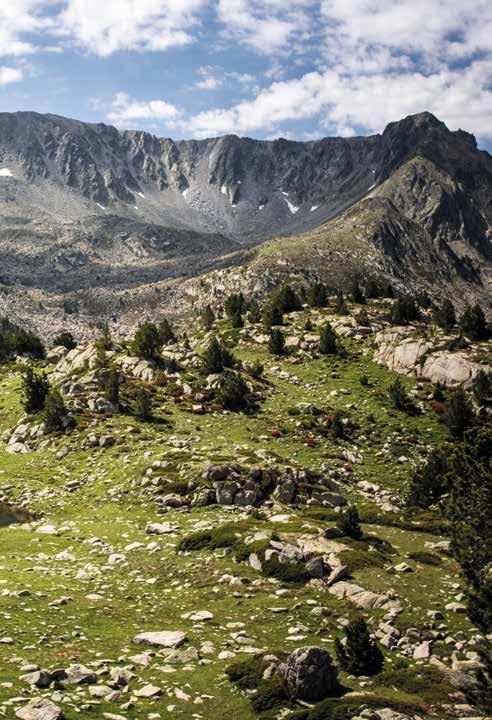
The three natural parks—Sorteny valley, Comapedrosa valleys and Madriu-Perafita-Claror valley, the latter declared a UNESCO World Heritage Site—make up a majestic ode to biodiversity. Andorra is, above all, life. More than 90 % of its area is pure nature and this opens the door to a particular catalogue of sports and leisure activities that make the country one of the favourite destinations for outdoor lovers.
Andorra is positioned as a ski mecca in Europe with more than 300 km of slopes across its great resorts, Grandvalira, Pal-Arinsal and Ordino-Arcalís, which delight winter sports followers with its broad offering for all tastes, ages and levels.
But skiing is not the only activity practised in the Andorran mountains. Snowy landscapes during the colder months are perfect for activities such as mushing, snowshoeing or snowmobiling. When the white mantle melts, the possibilities are still many. Spring and summer are perfect for embarking on long walks through lakes and valleys, exploring some of its eighteen via ferrata routes or taking advantage of the lifts and climbing to the highest levels, this time swapping the skis for mountain bikes.
Un país de récord
Si bien la oferta deportiva andorrana es una carta de presentación más que digna para atraer a miles de personas cada año, este pequeño rincón pirenaico es experto en guardar ases bajo la manga para sorprender a cualquier visitante.
El impresionante puente tibetano de Canillo es una de las estructuras más impactantes de los Pirineos. Cuenta con una altura de 158 m y una longitud de 603 m, dimensiones que lo convierten en uno de los más largos del mundo. La formidable pasarela permite contemplar el espectacular valle del Río a vista de pájaro.
El senderismo, el esquí o la bicicleta no son los únicos medios para explorar los parajes andorranos. El Tobotronc de Naturland es una montaña rusa que atraviesa el idílico bosque de La Rabassa, con medidas espectaculares: 5,3 km de recorrido, un desnivel de 400 m y un descenso de hasta 35 km/h. Sin duda, el tobogán de naturaleza más largo del mundo.
Andorra se consolida también como templo del termalismo. Es uno de los lugares con más fuentes termales de la península, con aguas capaces de alcanzar los 70ºC. La variedad y calidad de los centros wellnes es magnífica. Destaca Caldea, centro termal más grande de Europa, con baños romanos, aztecas, árabes y japoneses.
Andorra es también el país con más museos por metro cuadrado, después del Vaticano, lo que deja buena muestra de su enorme riqueza patrimonial. La huella del Románico es visible en su arquitectura, con austeras iglesias y ermitas de piedra que albergan en su interior valiosos retablos del siglo XI y XII.
Madrid: Todos los viernes y domingos.
Mallorca: Todos los viernes y domingos.
(0ctubre-24 a Marzo-25)
Andorra cuenta con una travesía GRP (Gran Recorrido País)
con la que se puede visitar la región al completo a pie

While the Andorran sports offer is a more than worthy cover letter to attract thousands of people every year, this small Pyrenean corner is an expert on keeping aces up the sleeve to surprise its visitors.
The stunning Tibetan bridge in Canillo is one of the most impressive structures in the Pyrenees. Measuring 158 m high and 603 m long, it is one of the longest in the world. This awesome walkway allows you to take in the spectacular river valley from a bird’s eye view.
Hiking, skiing and cycling are not the only means to explore Andorran landscapes. The Tobotronc de Naturland is a roller coaster that crosses the idyllic La Rabassa forest, boasting spectacular dimensions: a 5.3 km long route,

a 400 m slope and a descent at up to 35 km/h. Undoubtedly, the longest nature slide in the world.
Andorra is also consolidated as the temple of thermalism. It’s one of the places in the peninsula with more hot springs, with waters that can reach 70C. The variety and quality of the wellness centres is outstanding. Caldea stands out as the largest thermal spa in Europe, with Roman, Aztec, Arab and Japanese baths.
Andorra is also the country with the most museums per square metre, after the Vatican, which really shows its enormous heritage wealth. The trace of Romanesque art is visible in its architecture, with austere churches and stone chapels that house valuable 11th and 12th century altarpieces.
Andorra has a GRP (long distance) trail with which you can visit the entire region on foot

Los poetas de Plensa
En la céntrica plaza Lídia Armengol de la capital, sorprenden siete figuras sentadas sobre columnas que al anochecer arrancan en un diálogo de colores. El conjunto escultórico obra de Jaume Plensa –7 poetas– representa las siete parroquias andorranas y pretende ser, según el autor, «una reivindicación de la figura del poeta».
Confort y multiculturalidad en el paladar
A pesar de su pequeña extensión, Andorra cuenta con una localización privilegiada, abrazada por dos países, España y Francia, de los que bebe cultura y, por supuesto, gastronomía. Su cocina atesora un delicioso mestizaje basado en producto de kilómetro 0, como carne de caza, caracoles, nectum — sirope de piña de abeto—,trucha o achicoria. Las elaboraciones son variadas, pero es fácil detectar una predilección por contundentes y reconfortantes guisos, perfectos para enfrentar las bajas temperaturas.
Las bordas, antaño utilizadas para guardar el grano y el ganado, han sido reconvertidas en restaurantes tradicionales que configuran el perfecto escenario en el que deleitarse con un tradicional civet de jabalí, un trinxat o unos caracoles a la llauna.

In the centrally located Plaza Lídia Armengol in the capital, seven figures sitting on columns that at dusk start a dialogue of colours command our attention. The sculptural set by Jaume Plensa (7 poetes) represents the seven Andorran parishes and hopes to be, according to the author, “a vindication of the role of poets”.
Despite its small size, Andorra has a privileged location embraced by two countries, Spain and France, imbibing their culture and, of course, their gastronomy. Its cuisine treasures a delicious mix based on zero-kilometre produce, such as game meat, snails, nectum (fir cone syrup), trout and chicory. The creations are varied, but it’s easy to notice a predilection for hearty and comforting stews, perfect to brave the cold.
The barns, once used to store grain and cattle, have been converted into traditional restaurants that offer the perfect setting in which to enjoy a traditional boar stew, a trinxat or snails a la llauna.

Carnavales, tiempo de disfrute
Los carnavales son una cita importante en el calendario andorrano. Cada año, las parroquias reinterpretan esta fiesta para dar rienda suelta al disfrute antes de la Cuaresma. Los desfiles de comparsas y coreografías, la figura del rey Carnesoltes que representa el desenfreno y la libertad y el robo de las ollas, en el que los jóvenes, ataviados de consejeros generales, piden víveres por los establecimientos, son algunas de las costumbres históricas que mantienen viva la llama de la tradición en el principado.
No hay visita sin souvenir
Andorra también debe su fama a las compras. Su capital es concebida como una milla de oro accesible, con precios libres de IVA. Franceses y españoles acostumbran a visitar el país en busca de productos a precios más competitivos. Los que vienen de más lejos para disfrutar los atractivos del país, tampoco pierden la oportunidad de recorrer la calle Meritxell, corazón comercial de Andorra la Vella, en busca del perfecto souvenir


Carnival, a time to enjoy
Carnival is an important event in the Andorran calendar. Each year, the parishes reinterpret this festivity to enjoy themselves to the fullest before Lent. The comparsa parades and choreographies, King Carnestoltes who represents debauchery and freedom, and the stealing of the pots—when young people dressed as general councillors ask for food in restaurants—are some of the historical customs that keep the flame of tradition in the principality alive.
There’s no visit without a souvenir
Andorra also owes its fame to shopping. Its capital was conceived as an accessible golden mile, with VAT-free prices. French and Spanish people usually visit the country in search of products at more competitive prices. Those who come from further afield to enjoy the attractions of the country don’t miss the opportunity to walk down Meritxell Street, the commercial heart of Andorra la Vella, in search of the perfect souvenir.

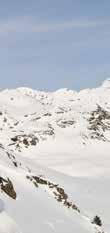


Terra. Museo Bici Lab Andorra: recorrido inmersivo por la historia de la BTT. Hasta el 11 de enero de 2025.
ISMF World Cup (Copa Mundial de Esquí de Montaña): el sector Arinsal de la estación Pal Arinsal de Grandvalira es escenario de la mayor cita anual de esquí de montaña. 25 y 26 de enero de 2025.
Copa de Europa FIS de esquí alpino: Soldeu de Grandvalira acoge dos eslálones gigantes de la Copa de Europa de esquí alpino. 3 y 4 de febrero de 2025.
El autorretrato y su doble, muestra fotográfica de Viviane Maier: un centenar de fotografías en las que la artista norteamericana muestra su enigmática figura de forma íntima y personal. Hasta el 1 de marzo de 2025.
Winter Snow Festival: 18 días de música y esquí en Pas de la Casa. Grandvalira, del 15 de enero al 1 de febrero de 2025.
Trofeo Barrufa de esquí: competición, aprendizaje y diversión para los jóvenes amantes de la nieve. En Ordino Arcalís, del 27 al 30 de enero de 2025.
Canillo Brilla: experiencia para pequeños y adultos con un itinerario inspirado en las estrellas. Entrada gratuita. En Canillo, hasta el 16 de marzo de 2025.
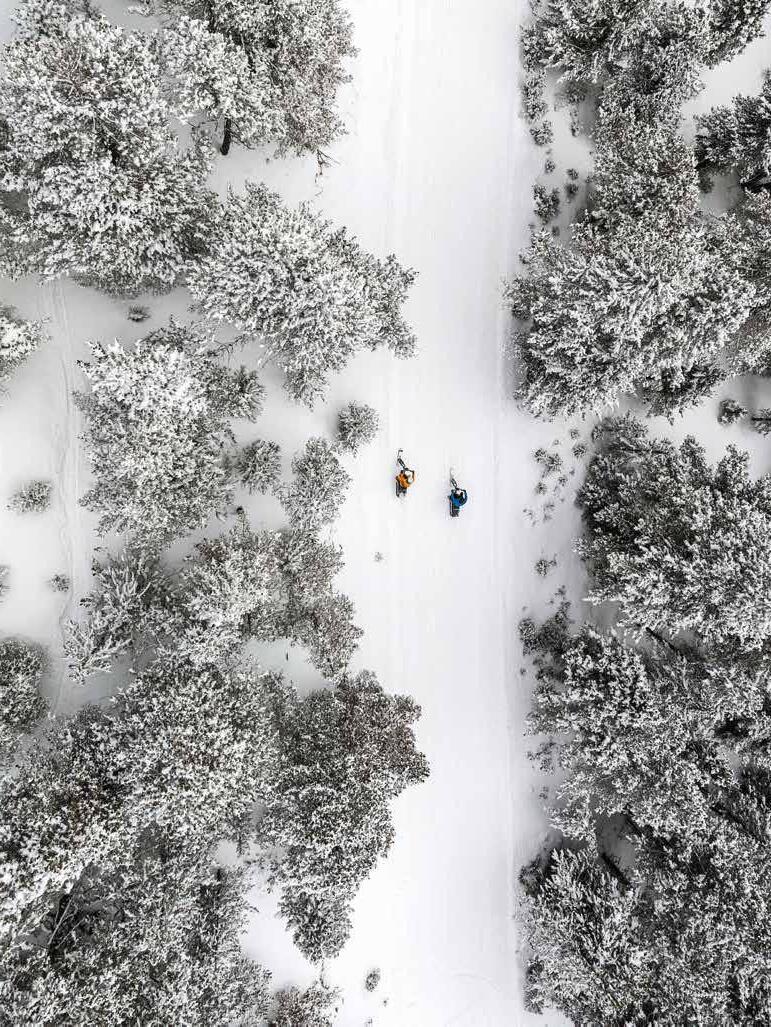
Terra. Museo Bici Lab
Andorra: immersive tour through the history of mountain biking. Until 11 January 2025.
ISMF Ski Mountaineering World Cup: the Arinsal sector of the Grandvalira Pal Arinsal station is the backdrop for the largest annual mountain ski event. 25 and 26 January 2025.
FIS Alpine Ski Europa Cup: Grandvalira’s Soldeu sector will host two giant slaloms of the Alpine Ski Europa Cup. 3 and 4 February 2025.
The self-portrait and its double, photography exhibition by Vivian Maier: a hundred photographs in which the American artist shows her enigmatic figure in an intimate and personal way. Until 1 March 2025.
Winter Snow Festival: eighteen days of music and skiing in Pas de la Casa. Grandvalira, from 15 January to 1 February 2025.
Barrufa Ski Trophy: competition, learning and fun for young snow lovers. In Ordino Arcalís, from 27 to 30 January 2025.
Hibernation Festival: electronic music featuring great artists in the European scene. In Grandvalira, from 14 to 16 March 2025.
Canillo Brilla: experience for children and adults with an itinerary inspired by the stars. Free entrance. In Canillo, until 16 March 2025.


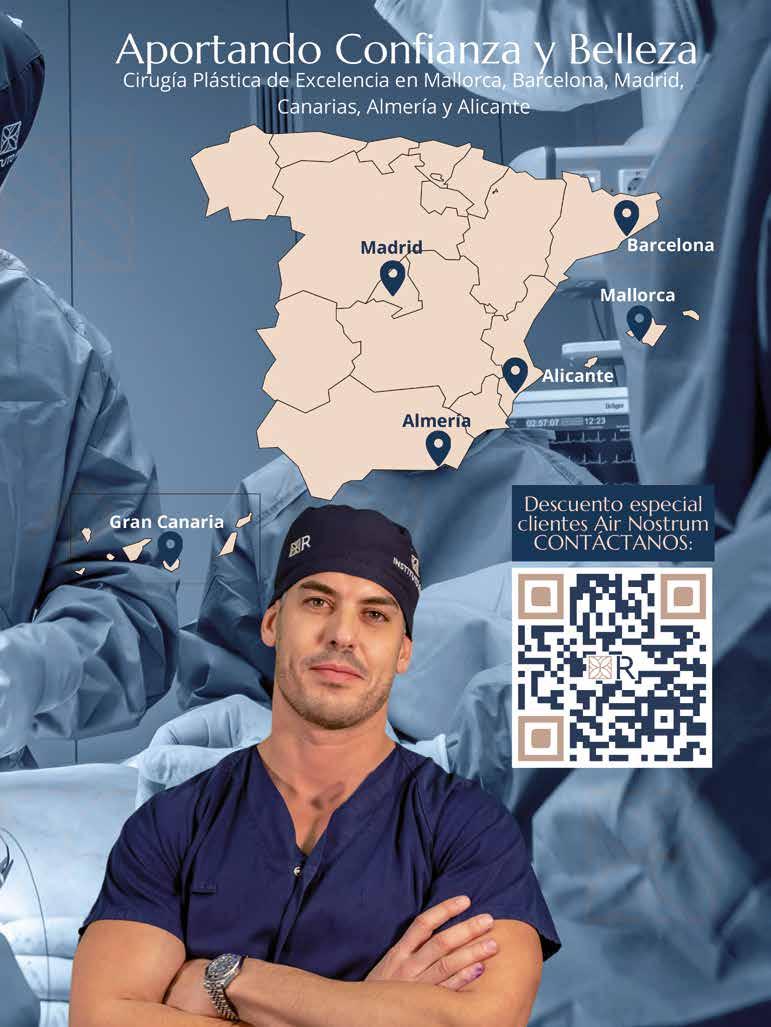
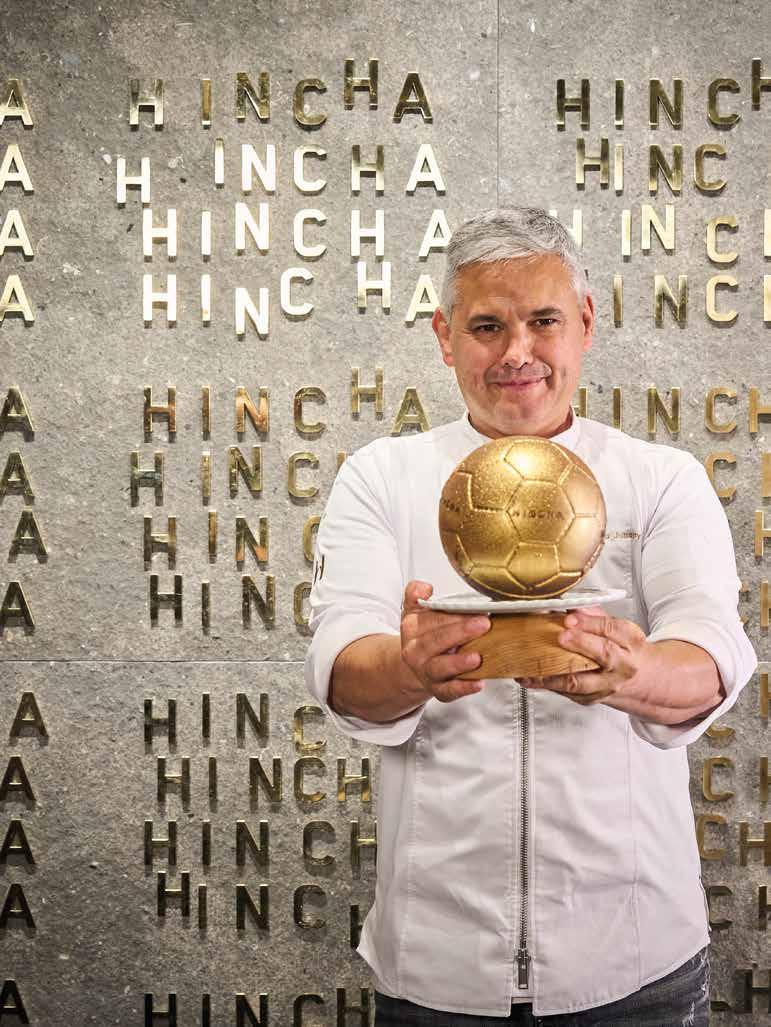

La pasión de Nandu Jubany por la cocina no surgió de la nada; está profundamente arraigada en su historia familiar. Con la serenidad de quien reconoce sus raíces, el chef rememora su lugar en una tercera generación que vive envuelta en el aroma de los fogones, precedido por su madre y su tía. Sin embargo, su incursión en la cocina ocurrió de forma inesperada: un accidente de moto lo llevó a adentrarse y descubrir su auténtico propósito: «Me quedé trabajando en la cocina y, con el tiempo, entendí que no solo me hacía feliz a mí, sino que también era mi forma de alegrar a quienes venían a nuestra casa», confiesa.
Me gusta dar gas, en la cocina y en la vida.
Tener objetivos que te hagan levantarte con ilusión es lo más importante.
Nandu Jubany’s passion for cooking didn’t come out of the blue, it’s deeply rooted in his family history. With the serenity of someone who honours his roots, the chef explains that he belongs to the third generation of a family that lives and breathes the smells of the cooking stoves, preceded by his mother and his aunt. However, his foray into cooking happened unexpectedly. A motorcycle accident made him look inwards and discover his true purpose: “I stayed working in the kitchen and, over time, I understood that not only did it make me happy, but it was also my way of bringing joy to those who came to our house,” he admits.
Sumergido en una vorágine creativa, Nandu Jubany despliega su genio a través de once restaurantes, un hotel, una empresa de catering que marca la pauta en Cataluña, y una fábrica de croquetas y canelones que conquista los paladares en los supermercados más selectos. Entre todos estos proyectos, Hincha brilla con intensidad especial. Este restaurante, donde cocina y deporte convergen en una explosión de contrastes, nace como homenaje a la pasión por el fútbol y la figura de Lionel Messi. No es solo un espacio gastronómico, es un escenario donde la emoción del juego se refleja en cada detalle, desde el diseño del ambiente hasta los matices de los platos. Aquí, lo global y lo cercano se encuentran, creando una experiencia que trasciende fronteras y despierta los sentidos.
Más allá de su estética y propuesta culinaria, el equipo de Hincha se erige sobre un compromiso profundo con la sostenibilidad, entendida en un sentido amplio. Jubany no solo prioriza el reciclaje y la reducción del impacto ambiental, sino que reivindica un modelo humano: «Garantizamos que quienes forman parte del proyecto puedan compaginar mejor trabajar y vivir. Yo entiendo el trabajar y la sostenibilidad como que también se pueda sostener este restaurante y dar trabajo y opciones a la gente».
Hincha, donde la pasión se sirve en el plato
La experiencia de Jubany como chef asesor del grupo Majestic durante más de una década fue clave para que este ambicioso proyecto tomase forma. Diseñado para ser un espacio auténtico y familiar, Hincha incorpora guiños culturales a Argentina, Sudamérica y al universo futbolístico, logrando una conexión inmediata con los comensales. No es solo un restaurante, es una celebración de lo popular y lo sofisticado, para disfrutar
de una experiencia familiar cercana y cosmopolita: «Quería crear un restaurante que pudiera viajar, que fuera auténtico y que gustara a las familias, un lugar donde Messi también pudiera sentirse a gusto». Aquí, desde los macarrones Messi, rellenos de boloñesa y coronados con crema de parmesano, hasta una pizza carbonara «de las mejores que vas a probar en tu vida», como apoda el chef, cada plato tiene su propia historia.
El nombre, inspirado en la figura del apasionado hincha futbolero, encuentra su reflejo en cada detalle: la bota de oro en los platos, un logotipo que evoca el júbilo de las manos alzadas y una atmósfera que equilibra la sofisticación con lo popular.

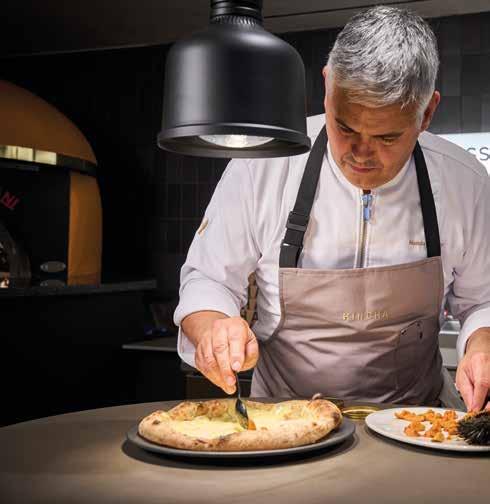
I like going full out, in the kitchen and in life. Having goals that make you wake up with enthusiasm is the most important thing

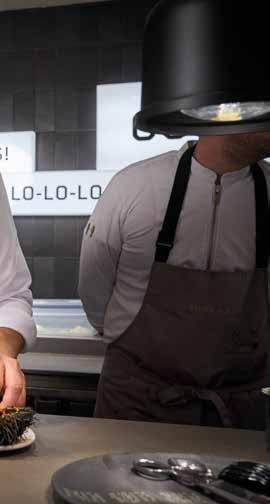

Engrossed in a creative maelstrom, Nandu Jubany unleashes his genius across eleven restaurants, a hotel, a catering company that sets the norm in Catalonia, and a croquette and cannelloni factory that wins over taste buds in the most select supermarkets. Among all these projects, Hincha shines more brightly. This restaurant, where cooking and sports meet in an explosion of contrast, was born as a tribute to the passion for football and Lionel Messi. It’s not just a food venue, but also a stage where the emotion of the game can be found in every detail, from the design of the space to the nuances of the dishes. Here, global meets local, creating an experience that transcends borders and awakens the senses.
Beyond the aesthetics and culinary proposal, the Hincha venture is built around a strong commitment to sustainability in its broader sense. Jubany not only prioritises recycling and reducing his environmental impact, but also calls for a more humane model: “we make sure that those who are part of the project can find a better work-life balance. I understand working and sustainability as also being able to sustain this restaurant and give people jobs and options.”
Hincha, where passion is served on a plate
Jubany’s experience as a consultant chef for the Majestic group for more than a decade was key to this ambitious project taking shape. Designed to be an authentic space for the whole family, Hincha is full of cultural references and nods to
Argentina, South America, and the world of football, making an instant connection with diners. It’s not just a restaurant—it’s a celebration of pop culture and sophistication that offers a close and friendly cosmopolitan experience. “I wanted to create a restaurant that could take you on a journey, that was authentic and that families could enjoy, a place where Messi could also feel at ease.” Here, from the Messi Bolognese-stuffed macaroni crowned with Parmesan cheese cream to “one of the best Carbonara pizzas you will ever taste”, as the chef refers to it, each dish tells its own story.
Its name was inspired by the passionate football fan, which is present in every detail: the golden shoe on the tableware, a logo that brings to mind the joy of raised hands, and an atmosphere that strikes a balance between sophistication and popular culture.
Even though Jubany rejects labels, he defines his craft as “fun cooking”. Here, the balance between trendiness and pop culture is found naturally, resulting in a food offering that everyone can enjoy—from a flawless burger to a ceviche or a tiradito. The secret is his team, he says. He trains his people with the aim of keeping customers happy.
Beyond culinary praise, Jubany’s vision weaves together sustainability and humanity. At Hincha, responsibility goes beyond recycling or reducing environmental impact; it includes caring for the people who are part of the team. “Working and living should be compatible. Sustainability also means that the restaurant can sustain itself, as well as offer jobs and opportunities to people,” he says.
Aunque Jubany evita las etiquetas, define su hacer como «cocina de diversión». Aquí, el equilibrio entre lo contemporáneo y lo popular se logra con naturalidad, y se consigue una cocina que todos pueden disfrutar, desde una hamburguesa impecable hasta un ceviche o un tiradito. El secreto, asegura, está en el equipo. Forma a su gente con el objetivo de que el cliente se vaya feliz.
Más allá de los elogios culinarios, Jubany lidera una visión que entrelaza sostenibilidad y humanidad. En Hincha, la responsabilidad va más allá del reciclaje o la reducción del impacto ambiental; incluye cuidar de las personas que forman parte de su equipo. «Trabajar y vivir deben poder compaginarse. La sostenibilidad también significa que el restaurante pueda sostenerse, dar empleo y oportunidades a la gente», afirma.
Cocina y fútbol, un lenguaje universal Los retos no cesan. Con nuevas aperturas en Andorra y Sotogrande, Jubany sigue explorando formatos que le permitan innovar sin perder su esencia. «En Sotogrande, por ejemplo, cambiaremos las pizzas por arroces y pescados a la brasa. Será otro partido, una manera de entender Hincha como un hermano, pero no gemelo». En su visión, los retos son el motor que impulsa la vida: «Me gusta dar gas, en la cocina y en la vida. Tener objetivos que te hagan levantarte con ilusión es lo más importante».
En definitiva, Hincha es una experiencia que conecta con el corazón. Desde las influencias argentinas en los menús hasta la atmósfera futbolera que lo envuelve, cada detalle lleva el sello de alguien que entiende que la cocina, como el fútbol, es un lenguaje universal. Los fogones son un terreno de juego en el que Nandu Jubany juega a ganar, y lo hace, siempre.

Cooking and football, a universal language
There are more challenges ahead. With new venues opening in Andorra and Sotogrande, Jubany continues to explore ways for innovating without losing his essence. “In Sotogrande, for example, we will replace pizzas with rice dishes and grilled fish. It will be another game, a way of understanding Hincha as a brother, but not a twin.” In his view, challenges are drivers for life: “I like going full out, in the kitchen and in life. Having goals that make you wake up with enthusiasm is the most important thing.”
In short, Hincha is an experience that connects with the heart. From its Argentinian-influenced menu to its football atmosphere, every detail bears the signature of someone who understands that cooking, like football, is a universal language. The stoves are a playing field in which Nandu Jubany plays to win, and he always does.
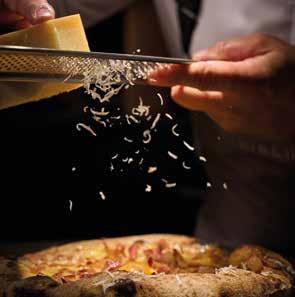
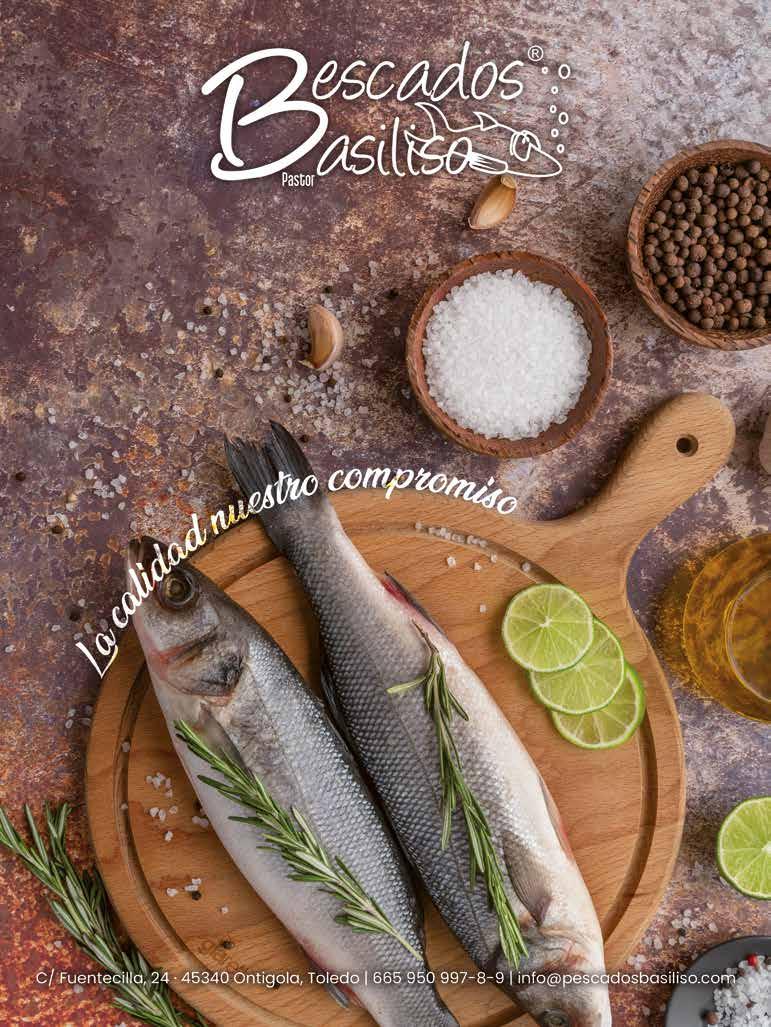


«La clave está en encontrar aquello que te motive y te haga sentir vivo»
«The key is to find what motivates you and makes you feel alive»


Sarajevo, 1984. XIV Juegos Olímpicos de Invierno. Un andorrano de diecisiete años, Albert Llovera, hace su aparición en la élite como promesa del esquí. Un año después, un trágico accidente en la Copa de Europa de esa modalidad pone fin a su carrera y lo deja parapléjico. Llegaron a decirle que viviría poco, pero nada más lejos de la realidad, porque Albert hizo trizas ese mal augurio gracias a su espíritu luchador y a una determinación inquebrantable. Hoy es un piloto de prestigio que ha acabado una prueba tan dura como el Dakar en nada más y nada menos que nueve ediciones. Su historia y su legado quedan reflejados en su libro No Limits (editorial Planeta) y en el documental Las alas del Fénix, nominado a los Premios Goya.
¿Cómo se vuelve al mundo del deporte tras un accidente como el que sufrió?
En el hospital recibí la visita de médicos de la NASA que estaban desarrollando proyectos relacionados con lesiones medulares y me ofrecí voluntario. Estuve unos meses en el prestigioso Instituto Guttmann en Inglaterra, y, después, en Houston, con lo más avanzado de la medicina en ese campo. Mejoré mucho gracias a la electroestimulación y, poco a poco y con mucho esfuerzo, pude volver a practicar deporte adaptado. Conocían mi trayectoria olímpica y me propusieron unirme al equipo Charlosteville Cardinals de Virginia (Canadá) de baloncesto en silla de ruedas.
Pasó del esquí olímpico al baloncesto adaptado, pero ¿cómo acabó en el mundo del motor?
La verdad es que el baloncesto nunca me había gustado especialmente, pero logramos ser subcampeones de la NWBA, en 1989, y reconozco que aquella fue una experiencia maravillosa. Pese a eso, quería estar en Andorra con mi familia y amigos, así que volví y me centré en mi trabajo, sin dejar de lado el deporte. En esa época, mi madre quería todas las opiniones
No hay libros ni varitas mágicas para superar esta situación y cada cual debe encontrar su propio camino

There are no books or magic wands to overcome this situation, and everyone must find their own way
médicas posibles y eso me obligó a viajar en innumerables ocasiones, más de 100 000 kilómetros al año, una barbaridad. Y me di cuenta de que me encantaba conducir y, sobre todo, que me atraía la velocidad. Quería correr, competir, así que puse todo mi empeño en hacer mi sueño realidad, ser piloto de rallyes.
Quería competir en rallyes contra quienes no tienen ninguna discapacidad…
Sí y no fue fácil. Luché durante más de dos años para obtener la licencia, hasta que finalmente, lo logré. Creo que me la dieron por pesado, pensando que me daría cuenta de lo difícil que era y lo dejaría. Ese primer año, no sólo solo no abandoné, sino que gané la Copa Peugeot de Andorra de Rallyes. Las personas con discapacidad solo teníamos la opción de competir en deportes paralímpicos y entre nosotros. Pero me planté y les dije: «No estoy pidiendo una categoría especial; voy a competir contra todos». No había habido ningún precedente, pero lo logré. Actualmente hay unos cuarenta pilotos con movilidad reducida compitiendo en Europa. Este deporte es inclusivo, y ya lo era en los años noventa, mucho antes de que se hablara de inclusión. Fuimos pioneros en ese sentido.


Sarajevo, 1984. XIV Olympic Winter Games. Seventeen-year-old Andorran Albert Llovera is a promising talent making his first appearance in elite skiing. A year later, a tragic accident at the Skiing Europa Cup would put an end to his career, leaving him a paraplegic. He was told then that his life would be short, but nothing further from reality, because Albert crushed those poor prospects thanks to his fighting spirit and unwavering determination. Today he is a prestigious driver who has finished the incredibly tough Dakar race in just nine editions. His story and legacy are captured in his book No Limits (Planeta) and in the documentary Las Alas del Fénix, which has been nominated for the Goya Awards.
How did you return to the world of sports after an accident like the one you suffered?
At the hospital I received a visit from NASA doctors who were developing studies related to spinal cord injuries and I volunteered for their research. I spent a few months at the renowned Institut Guttmann in England and later in Houston, receiving state-of-the-art medical care. I got much better thanks to electrostimulation therapy. Little by little and with much effort, I was able to start practicing parasports. They were aware of my Olympic career and suggested that I joined the Charlottesville Cardinals wheelchair basketball team in Virginia (Canada).
So, you went from Olympic skiing to adapted basketball, but how did you end up in motor racing?
The thing is that I wasn’t really into basketball, but we managed to be runners-up in the WNBA in 1989 and I must admit that it was a wonderful experience. Despite that, I wanted to be in Andorra with my family and friends, so I came back home and focused on my work, without neglecting my passion for sports. At that time, my mother wanted all possible medical opin-
A lo largo de su trayectoria ha tenido la oportunidad de participar en competiciones muy destacadas, incluyendo nueve ediciones del Dakar. Sí, he tenido la suerte de correr en el Campeonato Mundial de Rally, Rallycross o el Dakar. Estoy orgulloso de mi palmarés, tanto en asfalto, tierra, hielo, arena… Disfruto mucho y supongo que ese es el secreto. Mi primera oportunidad en el Dakar llegó en 2007, cuando recibí una llamada de los japoneses de Isuzu proponiéndome participar. Al principio, pensé que era una broma; ya corría en tierra, asfalto y hielo, pero no tenía experiencia en arena. La arena, para mí, solo estaba en la playa. Pero acepté, y, en ese primer Dakar, la experiencia me fascinó. De todas las ediciones en las que he participado, tanto en buggy como en camión, tengo recuerdos muy intensos. Una de las ilusiones añadidas de las últimas ediciones ha sido contar con mi sobrina Margot en mi equipo como copiloto.
En 2025 no ha sido posible verle en el Dakar.…
Este año no ha podido ser. Los cambios en la cúpula de Ford Trucks España no lo han hecho posible. De todos modos, no se acaba el mundo por no participar. Por suerte, hay muchas otras cosas que me hacen muy feliz. Tengo 58 años y es una prueba muy dura, físicamente acabo destrozado. Afortunadamente, cuento con mi osteópata que me acompaña siempre, porque de lo contrario, no sería capaz. Concentro toda la fuerza en los brazos, las manos, los dedos y el cuello, el desgaste es muy elevado. En el Dakar he soportado temperaturas extremas dentro de la cabina del camión, lluvias durmiendo al raso en tiendas de campaña… He forzado mucho, así que, si este año toca descansar de una prueba tan exigente, no pasa nada. De todos modos, no descarto volver a participar en futuras ediciones.
ions and that meant going on countless trips. I did more than 100,000 km a year, which is quite a lot. I then realised that I loved driving and that I was particularly attracted to speed. I wanted to run and compete, so I put all my effort into making my dream come true: becoming a rally driver.
You wanted to compete in rally races against drivers with no disabilities. Yes, and it wasn’t easy. I fought for more than two years to get the license, but I finally got it. They probably gave it to me because I was a pain. They thought that I would soon realise how difficult it was and give up. That first year, not only did I not abandon, but I won the Peugeot Rally Cup in Andorra. People with disabilities only had the option to compete in Paralympic sports and against each other. But I stood firm and told them: “I’m not asking for a special category; I will compete against everyone.” It was unprecedented, but I succeeded. There are currently around 40 drivers with reduced mobility competing in Europe. This sport is inclusive. It already was in the 1990s, long before inclusion was discussed. We were pioneers.
En el hospital recibí la visita de médicos de la NASA que estaban desarrollando proyectos relacionados con lesiones medulares y me ofrecí voluntario
At the hospital I received a visit from NASA doctors who were developing studies related to spinal cord injuries and I volunteered for their research

¿Los coches adaptados de antes eran muy distintos a los de ahora? Han evolucionado, sí, pero la base ya era buena. Siempre he corrido con el vehículo adaptado a mi discapacidad. El fabricante es una empresa española e italiana que se llama Guidosimplex. Empezamos a trabajar juntos hace años y pruebo todos sus prototipos. Aporto mi experiencia para que el diseño de los mandos del volante mejore su adaptabilidad a los diferentes tipos de limitaciones de movilidad, pero mi experiencia no sólo solo es aplicable a la conducción. Junto a Sunrise Medical, trabajamos en el desarrollo y evolución de sillas de ruedas diseñadas para el día a día. Podría decirse que son como los «Porsche» de las sillas de ruedas: tecnología punta, diseño personalizado y máxima calidad. Este trabajo me apasiona. Me llena tanto o incluso más que ganar carreras, porque el impacto que tiene en la vida de las personas es inmenso. Contribuir a mejorar su día a día es algo increíblemente gratificante. Intento ayudar a quienes están en mí misma situación y tratar de hacerles la vida más fácil.
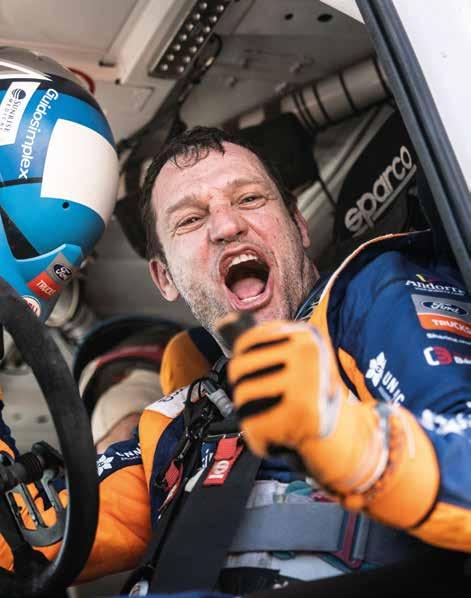
Throughout your career you’ve had the opportunity to participate in major competitions, including nine editions of the Dakar. Yes, I’ve been lucky enough to race in the World Rally Championship, Rallycross, and the Dakar. I’m proud of my achievements on tarmac, dirt, ice and sand racetracks. I enjoy it a lot and I suppose that’s the secret. My first go at the Dakar was in 2007, when I received a call from the Japanese at Isuzu offering me to participate. At first, I thought it was a joke. I was already running on dirt, tarmac and ice, but I had no experience on sand. I thought sand was just on the beach. But I accepted and I found that first Dakar experience fascinating. I treasure vivid memories of all the editions in which I have participated, both in buggy and truck. One of the joys of the last editions has been to have my niece Margot in my team as a co-pilot.
We won’t see you at the 2025 Dakar.
It wasn’t possible this year. Changes in the Ford Trucks Spain leadership meant it wasn’t possible. Anyway, not participating is not the end of the world. Luckily, there are many other things that make me very happy. I am 58 years old, and it’s a very tough race. I always end up knackered. Fortunately, I can rely on my osteopath who is always with me, because otherwise I wouldn’t be able to race. I concentrate all the strength on the arms, hands, fingers and neck; the level of physical wear and tear is high. I have endured extreme temperatures inside the cabin of the truck, the rain while sleeping in tents, etc. I have overstrained myself, so if this year I must rest from such a demanding race, it’s okay. Anyway, I’m not ruling out participating again in future editions.
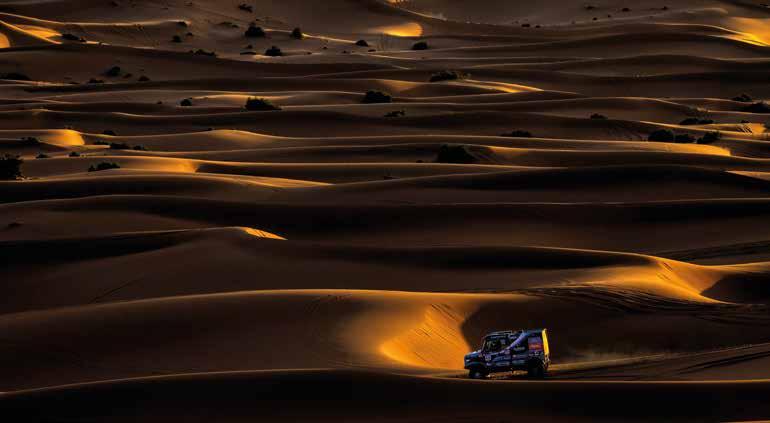
¿Qué le diría a alguien que, como usted, se enfrenta a una lesión medular irreversible? Lo primero y más importante es aceptar la realidad. Te ha tocado y no puedes cambiarlo. Sé que no es fácil, pero entender que esta es ahora tu vida es el primer paso para salir adelante. Al principio, es normal sentir que estás en un túnel oscuro, sin salida, pero hay que buscar la luz, por pequeña que nos parezca. Ese proceso, aunque doloroso, marca el inicio de tu camino hacia una nueva forma de vivir. El apoyo de la familia y los amigos es fundamental para encontrar fuerzas en los momentos más difíciles. No hay libros ni varitas mágicas para superar esta situación y cada cual debe encontrar su propio camino. Al final, la realidad no cambia: seguirás en una silla de ruedas, pero lo que sí puedes cambiar es tu actitud ante la vida. No necesitas demostrarle nada al mundo, ni competir en el mundial de rallyes, ni terminar el Dakar, pero sí mantenerte activo, eso es vital. Para mí, el deporte fue un gran pilar; me ayudó no solo físicamente, sino también mentalmente. La clave está en encontrar aquello que te motive y te haga sentir vivo.
Were the first adapted cars very different from present ones?
They have evolved, but the foundations were already good. I have always raced on a vehicle adapted to my disability. The manufacturer is a Spanish and Italian company called Guidosimplex. We started working together years ago and I test all their prototypes. I bring in my experience so that the design of the steering wheel controls improves its adaptability to different types of mobility limitations, but my experience is not only applicable to driving. Together with Sunrise Medical, we’re working on the development of wheelchairs designed for everyday life. They are arguably the Porsche of wheelchairs: cutting-edge technology, personalised design and top quality. I’m passionate about this work. It fulfils me as much or even more than winning races, because the impact it has on people’s lives is huge. Contributing to improve their daily lives is something incredibly rewarding. I try to help those who are in my situation and try to make their lives easier.
What would you say to someone who, like you, is facing an irreversible spinal cord injury?
The first and most important thing is to accept reality. It’s happened and you can’t change it. I know it’s not easy but understanding that this is now your life is the first step to pushing through. At first, it’s normal to feel that you are inside a dark tunnel, with no exit, but you have to look for the light, however faint it may seem. That process, though painful, marks the beginning of your path to a new way of living. The support from family and friends is essential to find strength in the most difficult times. There are no books or magic wands to overcome this situation, and everyone must find their own way.
In the end, reality will not change, you’ll still be in a wheelchair, but you can change your attitude towards life. You don’t need to prove anything to the world, or compete in the World Rally Championship, or finish the Dakar, but staying active is vital. In my case, sport was a great source of strength; it helped me not only physically, but also mentally. The key is to find what motivates you and makes you feel alive.
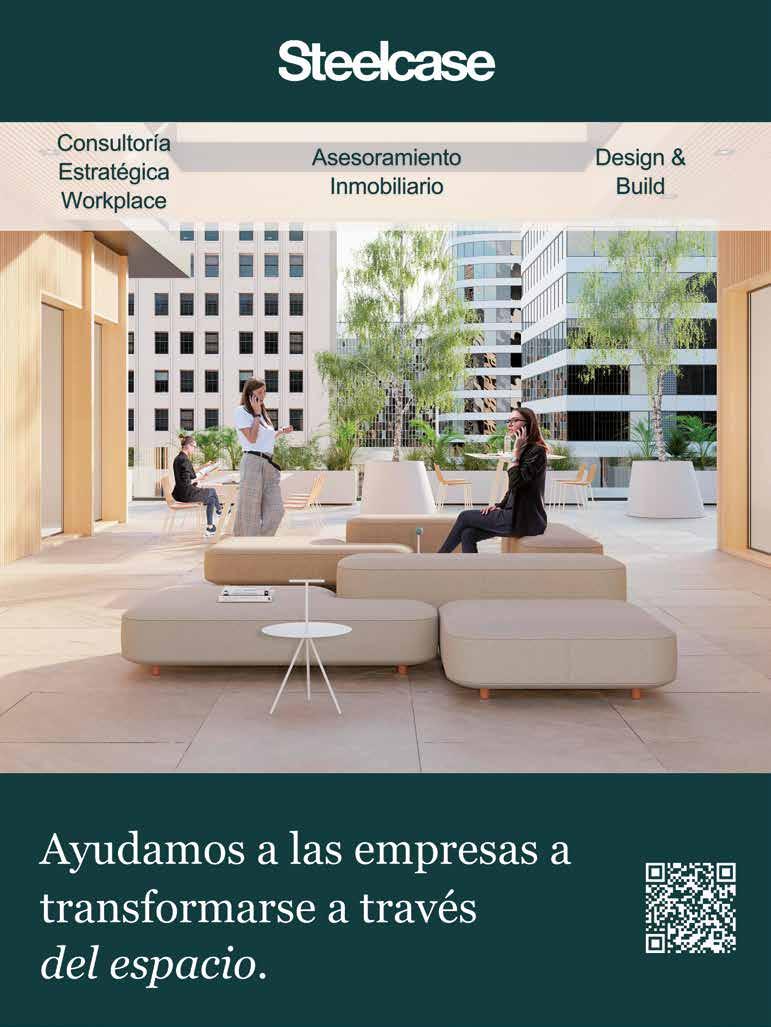
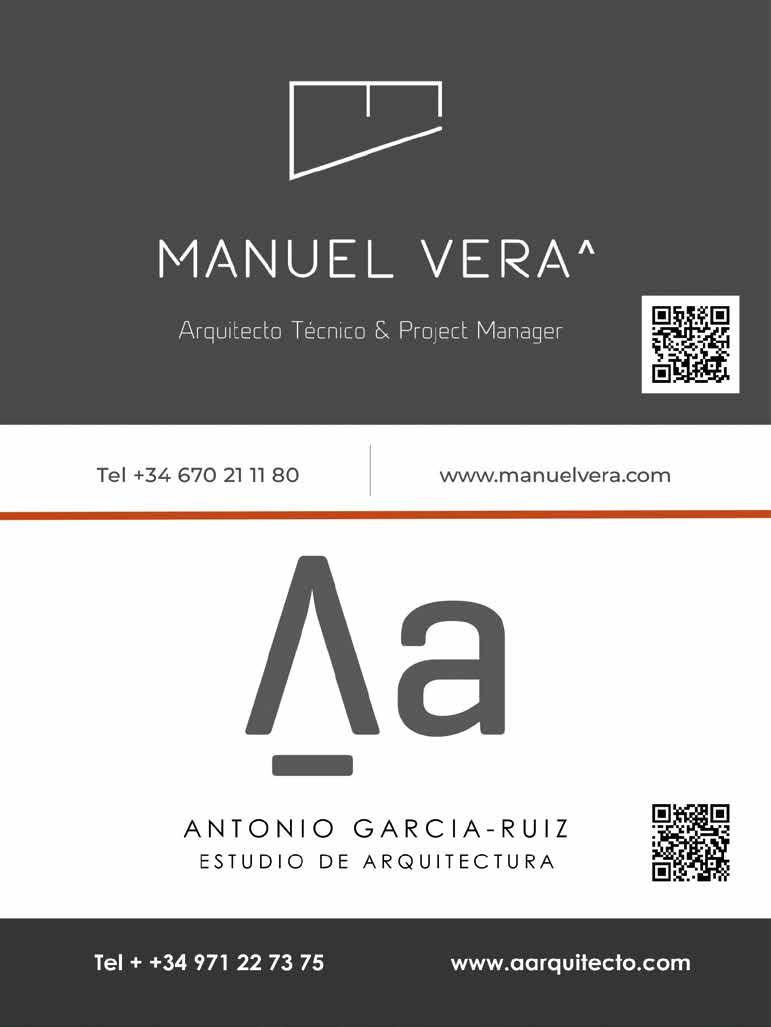

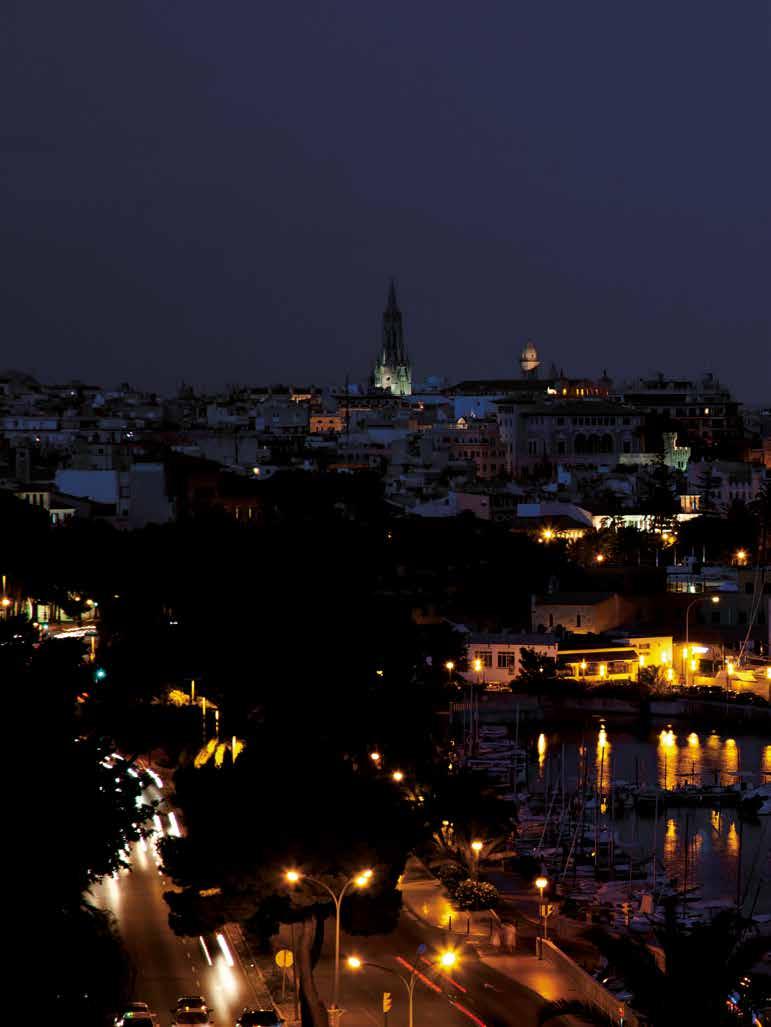
TEXTO: Anna Burgstaller
FOTOS: Envato elements

Mar y montaña. Tradición y modernidad. La capital balear conserva la autenticidad isleña de antaño. Las bondades de un clima templado y alejado del bullicio veraniego, ofrecen hoy una cara distinta para descubrirla con calma y sin aglomeraciones. Paseos tranquilos por el puerto o las calles empedradas del casco antiguo y una deliciosa gastronomía que roza la excelencia son propuestas perfectas para una escapada de tres días.
Sea and mountains. Tradition and modernity. The Balearic capital retains the island’s authenticity of yesteryear. The mildness of its climate away from the summer hustle and bustle offers a different side of the island to be discovered at leisure without the crowds. Strolling around the port or down the old town’s cobbled streets and tasting its delicious and exquisite cuisine are great ideas for a three-day getaway.
DÍA 1 | DAY 1

TESOROS DE LA CAPITAL



Imprescindible visitar la Catedral. Conocida como la Seu, erguida frente al mar, es una auténtica joya arquitectónica de estilo gótico. Su construcción comenzó en el siglo XIII y alberga intervenciones artísticas modernas de renombre, como las de Antoni Gaudí y Miquel Barceló.
Visiting the Cathedral is a must. Known as La Seu, this authentic Gothic architectural masterpiece stands facing the sea. Its construction works began in the 13th century. Renowned modern artworks by Antoni Gaudí and Miquel Barceló can be found inside it.
• Palacio Real de la Almudania, edifico civil que acoge a la familia real durante sus estancias en la isla. A civil building that hosts the Royal Family during their stays on the island.
• Plaza Mayor, Ayuntamiento y Basílica de San Francisco.

• Casco histórico y judería, una delicia para callejear con calma. Perfect to enjoy a leisurely stroll.
• Baños Árabes, uno de los escasos vestigios de arquitectura islámica que aún perduran en la isla, ubicados en los Jardines de Can Fontirroig One of the few vestiges of Islamic architecture that still exist on the island, located in the Fontirroig gardens.
• Castillo de Bellver, del siglo XIV, custodia el Museo de la historia de la ciudad de Palma. Dating back to the 14th century, it houses the Museum of History of Palma.
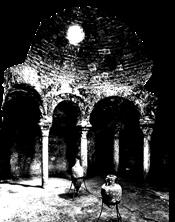










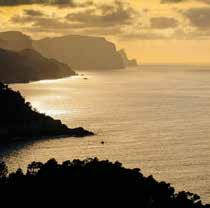
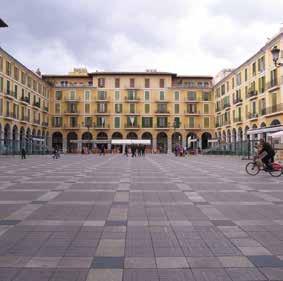


CADA RINCÓN ENAMORA
No solo la capital regala enclaves con encanto. Not only the capital offers charming spots.
• Sierra de la Tramuntana, principal formación montañesa de las Baleares, declarada Patrimonio de la Humanidad por la Unesco. Ideal para los amantes del senderismo y las vistas espectaculares. The main mountain range of the Balearic Islands was declared a World Heritage Site by UNESCO. Ideal for hiking enthusiasts, it delivers spectacular views.
• Valldemossa, de calles estrechas y empinadas, conserva la casa natal de Catalina Thomás. The house where Catalina Thomás was born can be found on its steep and narrow streets.
• Sóller. Imprescindible la visita a la Iglesia modernista de San Bartolomé. The Modernist Church of San Bartolomé is not to be missed.

Deià, Santanyí y Banyalbufar.


BELLEZA NATURAL
• Pollença y Alcúdia.
• Coves del Drach, reclamo turístico destacado de la isla. En Manacor, cerca de Porto Cristo, las cuevas se extienden hasta una profundidad de 25 m y albergan un lago de más de 115 m de longitud. An outstanding tourist attraction on the island. Located in Manacor, near Porto Cristo, these caves are 25 m deep and hide inside a lake over 115 m long.

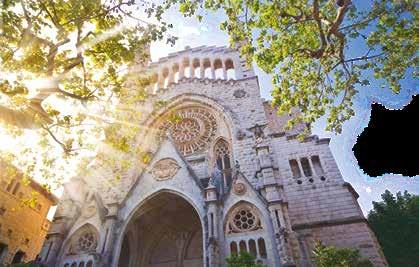

SABOR A PALMA TASTE OF PALMA


Cenar en alguno de sus afamados restaurantes y deleitarse con la auténtica gastronomía local es un placer para los sentidos. No se puede abandonar la isla sin probar el arròs brut, el tumbet , sopas y pescados a la mallorquina, el pa amb oli, las cocas o el escaldums y, por supuesto, su famosísima ensaimada, aunque siempre es mejor disfrutarla a la hora del desayuno. Dining in one of its famous restaurants and enjoying authentic local cuisine is a delight for the senses. You can’t leave the island without tasting arròs brut, tumbet, Mallorca-style soups and fish, pa amb oli, the cocas, escaldums and, of course, its famous ensaimada, better enjoyed during breakfast.
ATARDECERES DE POSTAL PICTURE-PERFECT SUNSETS
Un broche perfecto para un día de turismo. Algunos miradores para disfrutar de ese momento son: The perfect ending to a day of sightseeing. Some viewpoints to enjoy the moment are:
• Mirador Ses Colomers, Pollença
• Sa Foradada, Deià
• Mirador Ricardo Roca, Estellencs

ESTA TEMPORADA DE INVIERNO MALLORCA ESTARÁ CONECTADA CON:
Menorca, con hasta 76 frecuencias semanales.
Ibiza, con hasta 74 frecuencias semanales. Valencia, con ocho frecuencias semanales. Lleida, con tres frecuencias semanales.
Almería, con dos frecuencias semanales.
Vigo, con dos frecuencias semanales. Melilla, con dos frecuencias semanales.
León, con una frecuencia semanal.
Andorra, con una frecuencia semanal.


NOCHES DE RELAX, OCIO O BAJO LAS ESTRELLAS A NIGHT TO RELAX, HAVE FUN OR GAZE AT THE STARS
• Muchos hoteles y centros de bienestar ofrecen tratamientos perfectos para recargar pilas después de un día de intenso turismo. Many hotels and wellness centres offer the best treatments for recharging your batteries after a long day of sightseeing.
• Para los entusiastas de las artes escénicas, asistir a espectáculos de música en vivo o al Teatre Principal puede ser un plan perfecto. For performing arts enthusiasts, attending live music shows and the Teatre Principal can be a perfect plan.
• Una caminata guiada bajo las estrellas es una experiencia singular para admirar el cielo nocturno desde la zona alta de la isla. A guided walk under the stars is a unique experience to admire the night sky from the upper part of the island.

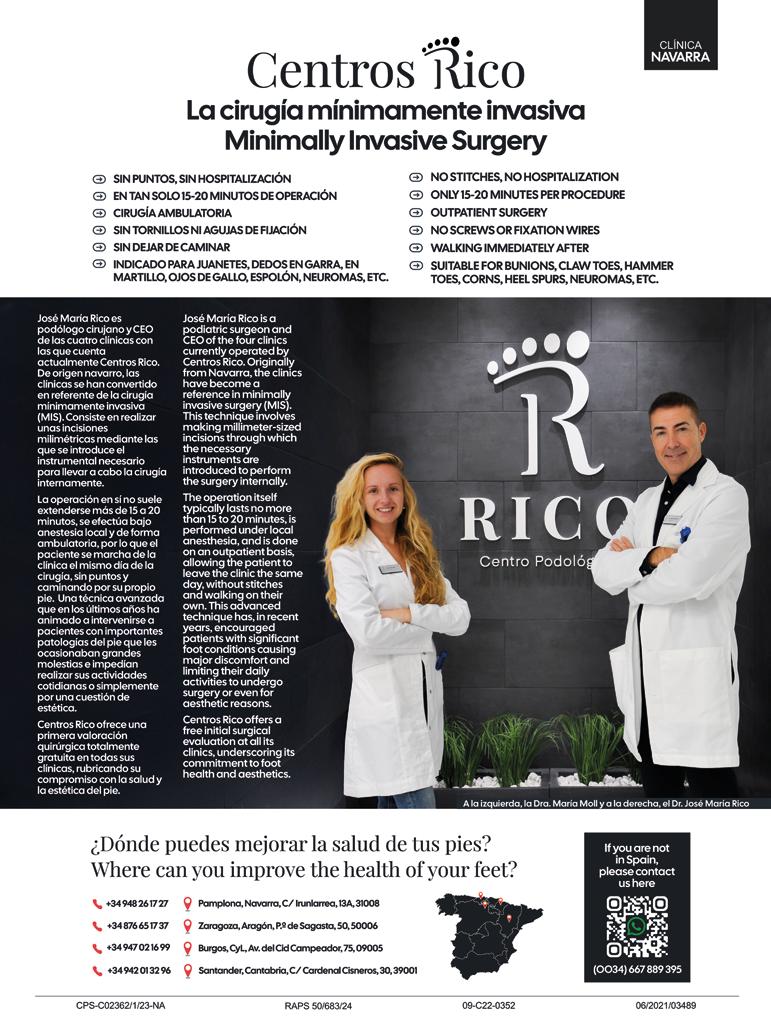
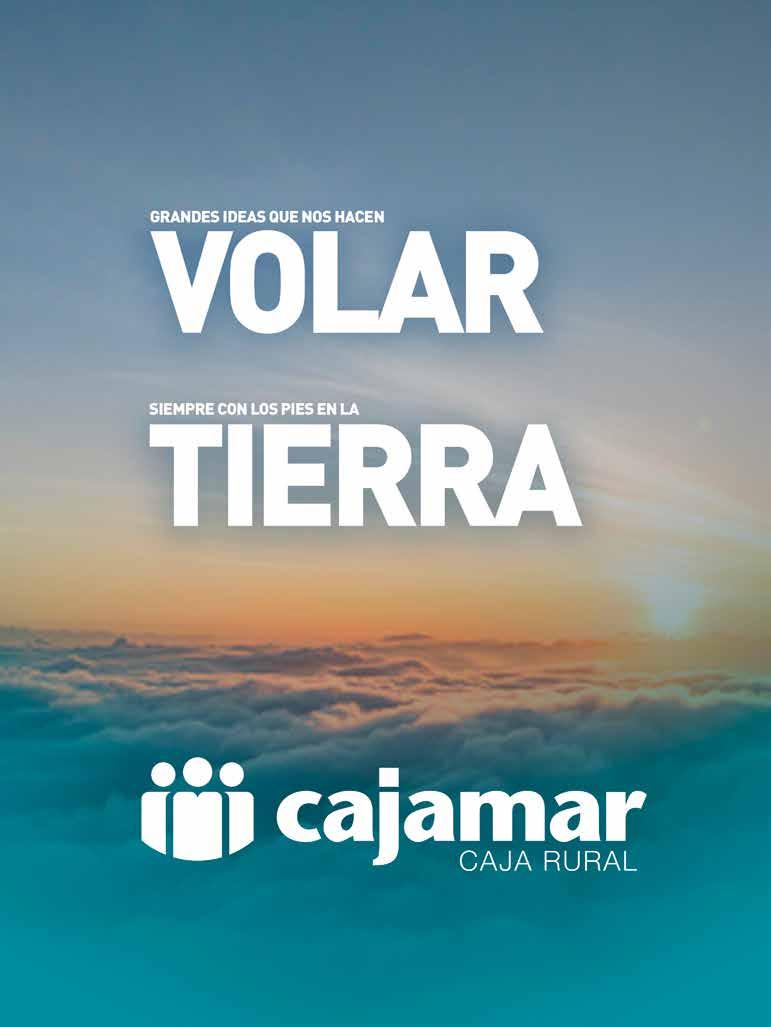


Fecha: del 15 de febrero al 4 de marzo de 2025
Fecha: del 14 al 16 de marzo de 2025
Lugar: Pas de la Casa, Andorra
Más info en: https://festivalhibernation.com/
En su séptima edición, este evento se erige como punto de convergencia entre la música electrónica en sus expresiones más puras de house, techno y underground, y experiencia sensorial envolvente marcada por impresionantes juegos de luces. Más allá de la música, el festival enriquece su propuesta con actividades après-ski, incluyendo exclusivas activaciones en terrazas emblemáticas como las del KSB. Los asistentes tienen la posibilidad de adquirir pases combinados que integran el acceso al evento y forfaits de esquí para disfrutar de las pistas de Grandvalira durante el día.
Now in its seventh edition, this event has become a meeting point for house, techno and underground electronic music in its purest form, and an immersive sensory experience defined by its stunning lighting effects. Besides the music, the festival also offers après-ski activities, including exclusive activations on iconic rooftops such as the KSB. Attendees may purchase tickets that combine access to the event and ski passes to enjoy the Grandvalira slopes during the day.
Lugar: varios lugares, Venecia
Más info en: https://www.carnavalvenecia.com/
La ciudad de los canales se transformará en un escenario mágico, donde máscaras ornamentadas, disfraces extravagantes y eventos culturales cautivarán a visitantes de todo el mundo, invitando a explorar la creatividad y los placeres sensoriales a través de desfiles, conciertos y bailes de máscaras en palacios históricos. Entre los eventos más esperados se encuentran el Vuelo del Ángel, el espectáculo inaugural desde el Campanile y el Gran Baile en el Palazzo Pisani. Con un enfoque en la sostenibilidad, la edición de 2025 también incorporará innovaciones respetuosas con el medio ambiente.
The canal city will transform into a magical realm, where ornate masks, extravagant costumes and cultural events will captivate visitors from all over the world, inviting them to explore creativity and sensory pleasures through parades, concerts and masquerade balls in historic palaces. Among the most anticipated events are the Flight of the Angel—the opening event from the Campanile—and the Grand Ball at Palazzo Pisani. With a focus on sustainability, the 2025 edition will also incorporate environmentally friendly innovations..

Fecha: del 21 al 23 de marzo de 2025
Lugar: Centro de Convenciones de Lyon, Lyon
Más info en: https://www.randonnee.org/
Con más de 27 millones de adeptos, el senderismo se mantiene como la disciplina deportiva más practicada en Francia. Desde hace 17 años, el Salon du Randonneur de Lyon se ha consolidado como el punto de encuentro por excelencia para los aficionados y expertos del senderismo, con una creciente afluencia de público. En su edición de 2024, más de 12.500 visitantes se congregaron para conocer las últimas innovaciones en equipos, destinos y técnicas de esta práctica. La edición actual promete superar las expectativas, con una programación enriquecida de conferencias, talleres y exposiciones.
With more than 27 million followers, hiking remains the most practised sports discipline in France. For the past 17 years, the Salon du Randonneur in Lyon has established itself as the meeting point par excellence for hiking enthusiasts and experts, with a growing number of visitors. In its 2024 edition, more than 12,500 visitors gathered to learn about the latest innovations in hiking equipment, destinations and techniques. The current edition promises to exceed expectations, with a packed agenda of conferences, workshops and exhibitions.
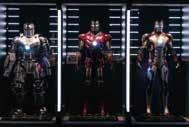
Fecha: hasta abril de 2025
Lugar: IFEMA, Madrid
Más info en: https://www.superhero-exhibition. com/es/
La exposición inmersiva ofrece una experiencia única para los amantes de los superhéroes y el cómic, presentando más de doscientas piezas originales, incluidas páginas de cómics, trajes y accesorios de las películas de Marvel Studios. Con instalaciones interactivas, los visitantes pueden explorar el laboratorio de Tony Stark o adentrarse en la dimensión espejo de Doctor Strange. La muestra destaca por su enfoque en la historia del cómic moderno y la influencia de Marvel en el género, permitiendo una conexión profunda con personajes icónicos como Spider-Man, Black Panther y La Cosa.
This immersive exhibition offers a unique experience for superhero and comic book lovers and features over 200 original pieces, including comic book pages, costumes and props from Marvel Studios films. Thanks to its interactive facilities, visitors will be able to explore Tony Stark’s lab or enter Doctor Strange’s mirror dimension. The exhibition stands out for its focus on modern comic book history and Marvel’s influence on the genre, allowing a deep connection with iconic characters such as Spider-Man, Black Panther and The Thing.

Fecha: del 3 al 6 de marzo de 2025
Lugar: Fira de Barcelona, Barcelona
Más info en: mwcbarcelona.com
Este congreso mundial de móviles en Barcelona se reafirma como el foro principal de las tecnologías móviles, un espacio donde convergen los avances más vanguardistas y los líderes de la innovación. En esta edición, destaca el enfoque en la sostenibilidad y la profunda integración de tecnologías como el 5G, la inteligencia artificial y el metaverso en nuestra vida cotidiana. Con exposiciones de dispositivos de última generación y conferencias de expertos que marcan el rumbo de la industria, el congreso se erige como una cita ineludible para aquellos que desean ser testigos de un futuro que ya se está materializando.
This mobile communications trade show in Barcelona consolidates its position as the main forum for mobile technologies and a space where cutting-edge developments and innovation leaders converge. In this edition, the focus will be on sustainability and the mainstreaming of technologies such as 5G, AI and the Metaverse into our daily lives. With exhibitions of state-of-the-art devices and expert conferences that set the course of the industry, the MWC is an unmissable event for those who wish to witness a future that is already materialising.

Fecha: del 10 de enero al 16 de febrero de 2025
Lugar: varios lugares, Tenerife y Gran Canaria
Más info en: https://www.icdcultural.org/ fimc-2024
Un hito en el panorama cultural europeo, reuniendo a artistas de renombre mundial en una programación que abarca desde la música clásica hasta la contemporánea. Este evento no solo destaca por su excelencia artística, sino también por su capacidad para conectar a la audiencia local con la riqueza cultural global. Cuenta con la participación de orquestas internacionales, directores destacados y solistas virtuosos, además de actividades paralelas como talleres y conciertos al aire libre.
A milestone on the European cultural scene, bringing together world-renowned artists with a music programme ranging from classical to contemporary. This event not only stands out for its artistic excellence, but also for its ability to connect local audiences with the global cultural wealth. It will feature international orchestras, leading directors and virtuoso soloists, as well as side events such as workshops and outdoor concerts.
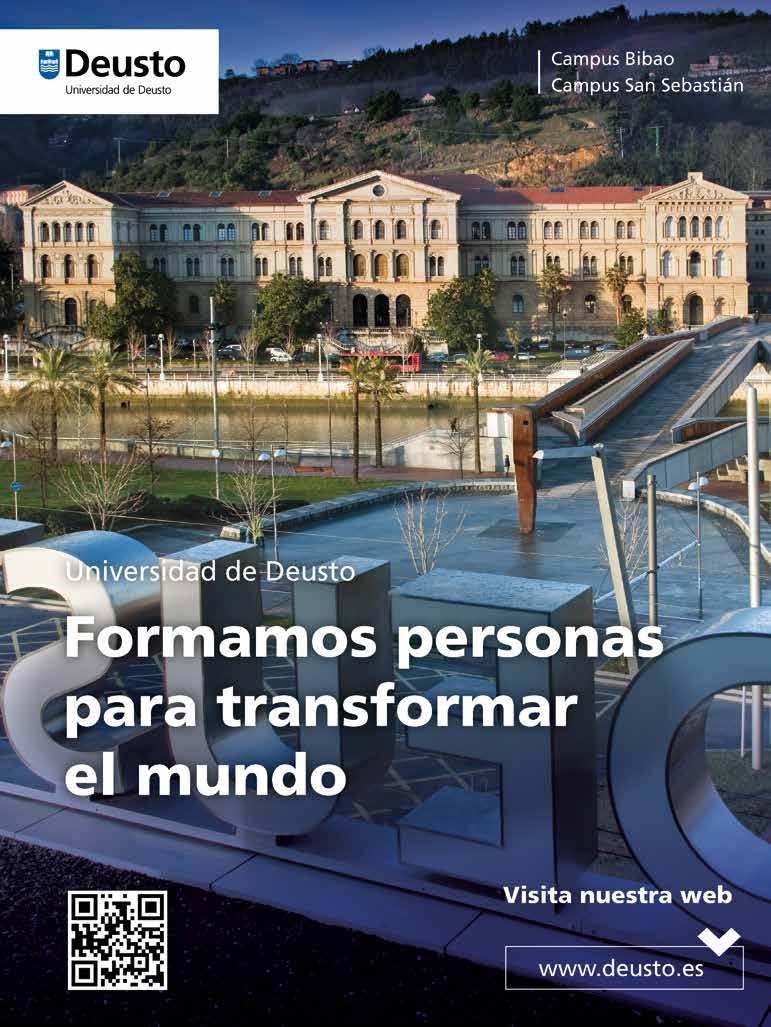

Si piensas en Navidad, piensas en Vigo. La ciudad se ha convertido en un referente para la celebración de estas fechas tan señaladas. Millones de luces LED decoran más de 450 calles, siendo la Porta do Sol con el gran árbol de Navidad su eje central. Miles de personas se reúnen cada día en la
icónica plaza para disfrutar de un ambiente festivo y afable.
La mejor Navidad del mundo se encuentra en la ciudad más grande de Galicia, donde se despliega un espectáculo lumínico y se respira un ambiente acogedor y familiar durante más de mes y medio. El mercado de Navidad en la Plaza Compostela, la noria gigante y mi-

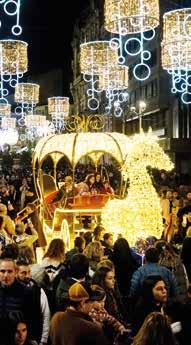
les de motivos decorativos posicionan a Vigo como el destino navideño por excelencia de España.
La Navidad de Vigo ofrece experiencias diferentes para que cada cual pueda disfrutarla como desee. Un verdadero cuento de Navidad en el que cada uno vive su propia historia. El año pasado Vigo registró seis millones de visitas durante la Navidad, unha cifra récord que demuestra que nadie se quiere perder esta cita.
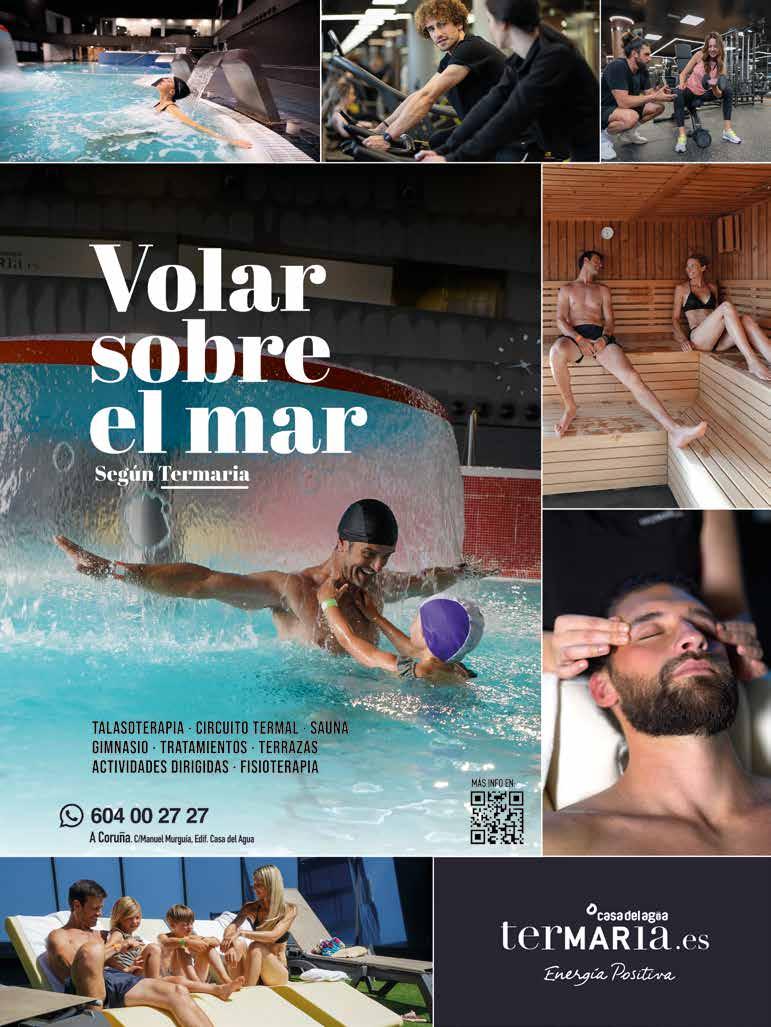

ENTRE NATURALEZA Y ARTE: MONTSERRAT, CRISOL DEL TIEMPO
BETWEEN ART AND NATURE: MONTSERRAT, TIME’S MELTING POT

En el corazón de Cataluña se alza una montaña colosal, esculpida en formas imposibles por moles de piedra: el Parque Natural de la Sierra de Montserrat. Este lienzo natural combina el gris de sus rocas con el verde de robledales y pinares, habitados por una fauna de asombrosa diversidad. El mayor de los misterios de estas montañas, la Moreneta, se encuentra en la milenaria abadía benedictina que es parte inseparable de este paisaje. Aquí, tanto los amantes de la naturaleza como los de la espiritualidad encuentran su recompensa.
TEXTO: Luis Tejedor / FOTOS: Generalitat de Catalunya, Monasterio de Montserrat

Right in the heart of Catalonia stands a colossal massif with mountains sculpted into impossible shapes: the Serra de Montserrat Natural Park. This natural scenery blends together the grey rocks with the green oak and pine forests that are inhabited by an amazing diversity of animal life. The greatest mystery of these mountains—La Moreneta—can be found in the age-old Benedictine abbey, which is an inseparable part of this landscape. This is a place that rewards nature lovers and spiritual devotees alike.
Asolo una hora de la bullanguera Barcelona, el Parque Natural de la Sierra de Montserrat se revela como un portento ante los ojos de sus visitantes. Cualquier intento de explicación lógica resulta improbable frente a un espacio donde la naturaleza, el arte y la devoción coexisten en curiosa armonía. Tras el impacto inicial y la reflexión posterior, surge una conclusión inevitable: Montserrat es un santuario en sí mismo que alberga otro santuario, en el que se venera a la patrona de Cataluña.
Según la tradición, en el año 880 unos pastorcitos, guiados por una poderosa luz, descubrieron la primera talla de la Virgen de Montserrat. Más allá de la veracidad que la fe de cada uno otorgue a esta historia, el paisaje parece digno de toda suerte de manifestaciones divinas. No es de extrañar que estas montañas se hayan convertido en un icono catalán que atrae a multitudes deseosas de honrar tanto a la Moreneta como a la naturaleza exuberante de estos parajes.


Just an hour from Barcelona’s hustle and bustle, the Serra de Montserrat Natural Park emerges magnificently before the eyes of its visitors. Any attempt at logically describing a place where nature, art and devotion coexist in strange harmony is futile. After the initial shock and subsequent reflection, an inevitable conclusion is reached: Montserrat is a sanctuary within a sanctuary, in which the patron saint of Catalonia is worshipped.
According to tradition, in 880 a group of shepherds guided by a powerful light discovered the first carving of the Virgin of Montserrat. Regardless of whether we believe in their account or not depending on our faith, the landscape certainly seems worthy of all sorts of divine revelations. No wonder these mountains have become a Catalan icon that attracts crowds eager to worship both La Moreneta (the little dark-skinned woman) and the lush natural landscape.
The name Montserrat shows the proverbial practicality of the Catalan people. What better way to call this mountain range than “serrated mountain”, given its distinctive saw-toothed outline? After thousands of years of hard rocks eroding softer ones such as clays and sandstones, the massif has been patiently sculpted—a true lesson in perseverance and appetite for eternity.

Gracias a la baja contaminación lumínica de la zona, el observatorio astronómico de Montserrat ofrece experiencias guiadas por personal capacitado que explica la composición y ubicación de numerosas constelaciones, con la posibilidad de observarlas a través del telescopio.
En los apenas 25 kilómetros cuadrados que ocupa Montserrat, se concentra la mitad de las tres mil especies botánicas de Cataluña. Como si esta diversidad no fuera suficiente, las variaciones climáticas dentro del parque permiten la convivencia de especies propias de zonas secas junto a otras de ambientes húmedos. No faltan los robledales, pinares y tejos, ni las madreselvas y las zarzaparrillas. La fauna también es variada en este entorno mediterráneo: las especies más visibles son las cabras salvajes, los jabalíes, los halcones y las palomas torcaces. Un ojo entrenado puede descubrir aún más.


DE
Es un espectáculo formidable. Sobre una de las peñas de la montaña se alza Santa María de Montserrat, un monasterio benedictino situado a 720 metros de altitud, donde vive una comunidad de monjes dedicados a la oración, la hospitalidad y el trabajo. Es un destino habitual para numerosos visitantes deseosos de conocer su templo y rendir culto a la imagen de la Moreneta.
El pasado siete de septiembre dio comienzo la conmemoración del milenario de esta abadía, que terminará el 8 de diciembre de 2025. Para celebrar esta efeméride como se merece, se han organizado un millar de actos religiosos, culturales y sociales.
El nombre de Montserrat refleja el proverbial sentido práctico de los catalanes. ¿Qué mejor que llamar “monte serrado” a esta formación montañosa, con su inconfundible perfil de dientes afilados? Tras miles de años de erosión entre rocas duras y otras más blandas, como arcillas y areniscas, el macizo ha sido esculpido pacientemente, una verdadera lección de perseverancia y apetito de eternidad.
Desde 1987, la declaración de Parque Natural protege cada singularidad de sus contornos. Sus 7.500 hectáreas, una vez superada la impresión inicial, invitan a la práctica del senderismo, la escalada y la espeleología, o, sin mayores ambiciones, a un paseo que permita ventilar los pesares de la vida moderna.
Para apreciar la belleza natural de Montserrat sin restricciones, es recomendable alejarse de las áreas más concurridas del monasterio y aventurarse hacia los puntos más elevados de la sierra. Como la visita no requiere heroicidades, el funicular de Sant Joan permite alcanzar, sin esfuerzo ni complicaciones, los mil metros de altitud. Desde allí, el Pico Sant Jeroni, un pináculo natural de 1.238 metros, queda ya a solo un paso.
In 1987 it was declared a Natural Park, thus protecting its unique silhouette. Once the first impression sets in, its 7,500 hectares are an invitation to enjoy hiking, climbing and caving, or simply to take a walk and air out the sorrows of modern life.
Staying away from the busiest areas of the monastery and venturing towards the highest points of the mountain range is the best way to fully appreciate the natural beauty of Montserrat. Since the visit does not demand heroic deeds, the Sant Joan funicular takes visitors all the way up to 1,000 metres above sea level without effort or complications. From there, Pico Sant Jeroni—a 1,238-metre natural pinnacle—is just one step away.

Half of the 3,000 plant species of Catalonia can be found in just 25 sq km, the area covered by Montserrat. As if such biodiversity was not enough, the climate variability within the park allows for the coexistence of species typical of dry areas with others of humid environments. Oak, pine and yew trees, as well as honeysuckle and prickly ivy, abound here. The fauna is also diverse in this Mediterranean landscape: wild goats, wild boars, hawks and wood pigeons are among the most spotted species. A trained eye can discover even more.
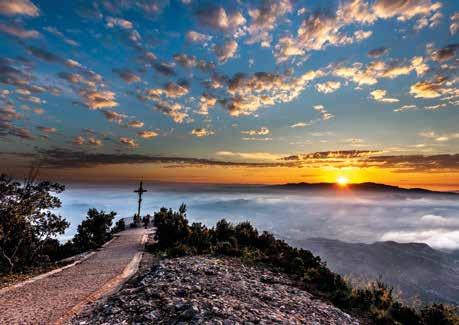
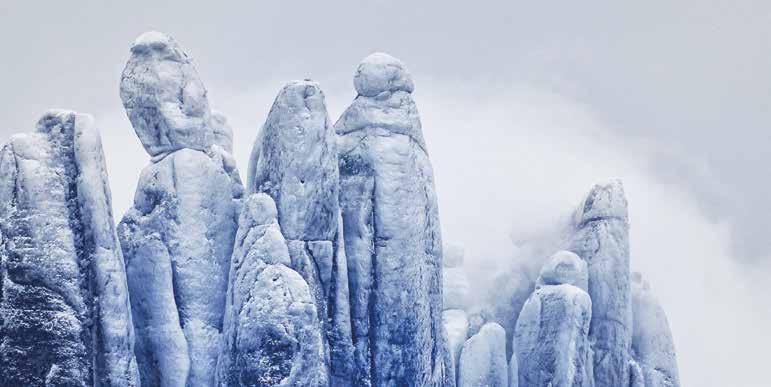
SANTA MARIA DE MONTSERRAT ABBEY
The monastery sets an impressive backdrop. Santa Maria de Montserrat, a Benedictine abbey located 720 metres above sea level, sits on top of one of the mountain crags. Home to a community of monks dedicated to prayer, hospitality and work, it’s a popular destination for many travellers eager to visit its temple and worship the statue of La Moreneta.
The abbey’s millennial anniversary celebrations kicked off on 7 September this year and will end on 8 December 2025. To mark this anniversary fittingly, a thousand religious, cultural and social events have been planned.
Thanks to the low light pollution, there are many stargazing viewpoints in Montserrat. Guided tours by trained staff who explain the pattern and location of many constellations can be booked, with the option of observing the sky through a telescope.
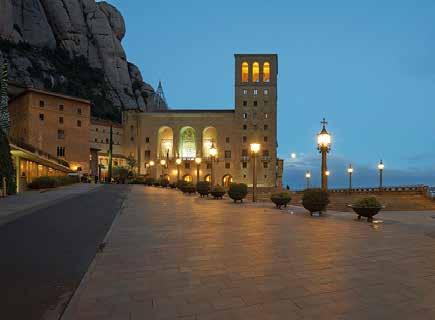
No muy lejos se encuentran las ermitas de Sant Joan y Sant Onofre. Desde esta última, la llamada Escalera de Jacob asciende hasta la Miranda de Santa Magdalena, un monolito que recompensa a los excursionistas con una panorámica excepcional. Con algo de suerte, es posible avistar escaladores echando el bofe mientras suben por las paredes vecinas de este macizo.
Para los que se despertaron ambiciosos, existen dos rutas principales para alcanzar las cumbres de Montserrat sin tomar el funicular. La más accesible comienza en la estación inferior del funicular de Sant Joan, donde, casi al inicio, un sendero señalizado a la derecha conduce a la Miranda de Fra Garí, una impresionante balconada con vistas al monasterio y a las rocas del Elefante y la Momia.
Los que elijan la segunda deben tener una confianza a prueba de bomba en sus capacidades físicas. A través de interminables escalones, el Pas dels Francesos lleva a las antiguas ermitas en el lado norte de la montaña, al refugio de escaladores de Vicenç Barbé, y, un poco más adelante, al final del recorrido, la cumbre de Sant Jeroni.
Not far away are the Sant Joan and Sant Onofre hermitages. From the latter, the so-called Jacob’s Stairway leads up to the Miranda de Santa Magdalena viewpoint, a monolith that rewards hikers with a stunning panoramic view. With some luck, it’s possible to see climbers working their guts out on the neighbouring walls of this massif.
For those who wake up feeling ambitious, there are two main routes to reach the Montserrat summits without getting on the funicular. The most accessible one starts at the lower station of the Sant Joan funicular where, almost at the beginning, a signposted path on the right leads to the Miranda de Fra Garí, an impressive vantage point overlooking the monastery and the Elephant and Mummy rocks.
Those who choose the second route must have bulletproof confidence in their physical abilities. Going up endless steps, the Pas dels Francesos leads to the ancient hermitages on the north side of the mountain, to the Vicenç Barbé climber’s shelter and a little further on, at the end of the route, to the Sant Jeroni summit.
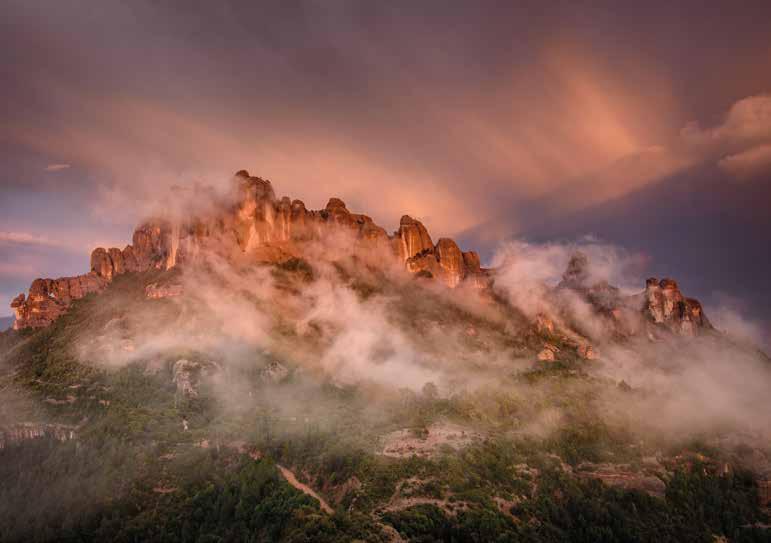



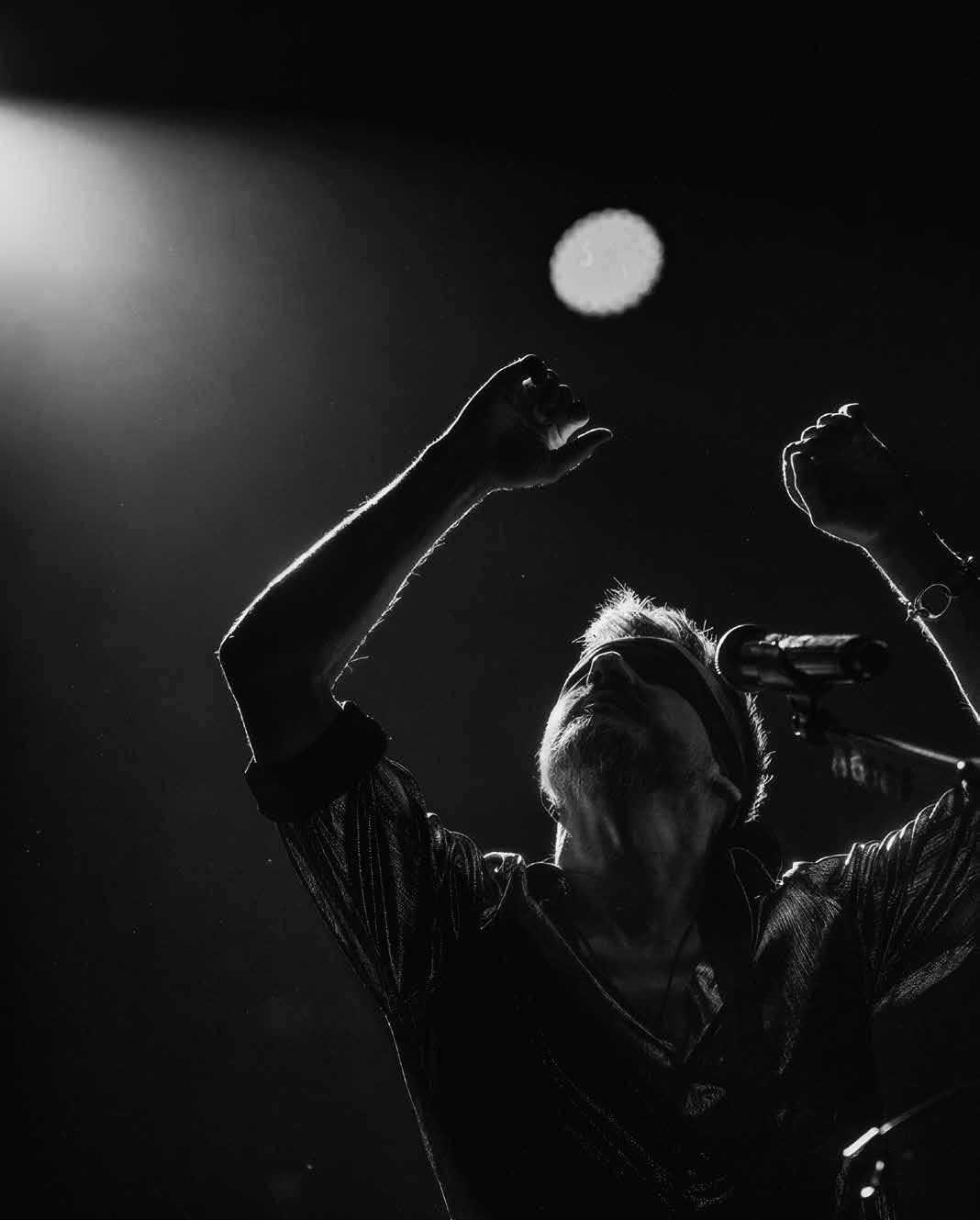
Han pasado cuarenta años desde que cogió la guitarra, pero cuesta encontrarlos en su rostro aniñado. Sigue manteniendo una voz nasal inconfundible. Nada que ver con los solistas de vozarrón abisal con quienes se codeaba en los ochenta. Coque Malla irrumpe con una gira conmemorativa. En su último trabajo llega ungido por Bowie, Radiohead y los fantasmas que habitan en la eternidad del rock.

It’s been forty years since he picked up a guitar, but it’s hard to tell when you look at his childish face. He still has his signature nasal voice—nothing like those soloists with resounding voices with whom he rubbed shoulders in the eighties. Coque Malla is going back on stage with a celebration tour. His last album bears the mark of Bowie, Radiohead, and the ghosts that inhabit the afterlife of rock and roll.
Una anécdota del mundillo musical cuenta que Coque Malla lloró cuando Chuck Berry le prohibió tocar con él. Cuando se considera una posibilidad como esa, es decir, compartir escenario con el padre, o al menos uno de los padres de ese invento llamado rock, se entiende bien lo de las lágrimas. Una suerte así viene a ser como tocar con un dios. Porque si alguien como Chuck Berry te concede un minuto de su existencia, cobra sentido aquello por lo que un día decidiste dejarlo todo por la música.
La cosa sucedió de esta manera. En el escenario: Chuck Berry. Junto al genio: el bajista, el batería y el teclado de Los Ronaldos. En la grada, contemplando la escena como un simple invitado: Coque Malla. Nunca se sabrá si fue la insistencia, el caso es que las súplicas sirvieron para aplacar el gélido corazón de Chuck. Y sí, finalmente pudo subir a tocar; aunque el genio se esfumó y le abandonó en medio de la actuación. Coque Malla tenía veinticinco años. Con dieciséis había fundado la banda Los Ronaldos. La vida pasa muy deprisa en las entrañas del rock. Corría el año 1985 cuando Malla, Luis Martín, Ricardo Moreno y Luis García se enfrascaron en un proyecto musical que bebía las aguas del momento: un poco de sonido punk mezclado con rock and roll
En realidad, una de las explicaciones al meteórico éxito del grupo fue la mezcla de estilos. Había rock, por supuesto, de los Stones y Beatles, pero también influencias del punk, de Vibrators, Clash, Siouxie and the Banshees e incluso del jazz. La cuestión es que ese seductor batiburrillo engendró algunos de los grandes éxitos de su carrera.
En una entrevista concedida a Jot Down, Coque daba forma al estrellato: «Teníamos un sonido auténtico, habíamos nacido de forma auténtica, teníamos cierta seriedad, pero al mismo tiempo éramos jóvenes, con estribillos. […] En nuestros conciertos podías ver fans adolescentes, pero también tíos con chupas de cuero». La irrupción de Los Ronaldos fue esa bocanada de aire fresco que la industria musical necesita cada cierto tiempo.
Al poco de gestarse la banda ya estaban tocando con Gabinete Caligari, Radio Futura, Loquillo y los Trogloditas… los grandes grupos de los ochenta se codeaban con un adolescente. «Pasé de ser fan a compañero. Eso era impresionante. Enseguida sentí que ese era mi sitio», confiesa. Y aparecieron canciones como «Adiós papá» o «Por las noches». Hoy son himnos generacionales. Las letras eran una huida hacia adelante.

There’s an anecdote in music circles about how Coque Malla cried when Chuck Berry wouldn’t let him play with him. When you consider a possibility like that—sharing the stage with the father, or one of the founders, of that invention called rock and roll—you can really understand his tears. Such luck can only be compared to playing with a god. If someone like Chuck Berry grants you a minute of his existence, everything you left behind to devote yourself to music suddenly makes sense.
This is how it happened. On stage: Chuck Berry. Next to the legend: the bassist, the drummer and the keyboardist of Los Ronaldos. Watching from the audience as a regular spectator: Coque Malla. We’ll never know if it was his insistent pleading, but it actually helped to melt Chuck’s icy heart. And, yes, Malla was finally allowed to play on stage, although the genius vanished and abandoned him in the middle of the performance. Coque Malla was 25 years old. He had founded the band Los Ronaldos when he was 16. Life moves fast in the bowels of rock and roll. It was 1985 when Coque Malla, Luis Martín, Ricardo Moreno and Luis García immersed themselves in a musical project that drew from the trends of the time: a bit of rock and roll with punk-style influences.
One way of explaining the band’s meteoric success was that mixture of styles. There was rock and roll, of course (the Stones and Beatles) but also influences from punk (The Vibrators, The Clash, Siouxsie and the Banshees) and even from jazz. This captivating hotchpotch gave rise to some of the biggest hits of his career.
In an interview with Jot Down, Coque defined their stardom: “There was truth in our sound, our origins were authentic. We were quite serious, but at the same time we were young, with refrains. […] The audience in our gigs was made up of teenage fans but also guys in leather jackets.” Los Ronaldos were that breath of fresh air that the music industry needs from time to time.
Early on, the band played with the likes of Gabinete Caligari, Radio Futura, and Loquillo y Los Trogloditas. The big names of the eighties were rubbing shoulders with a teenager.
“I went from being a fan to becoming a colleague. That was impressive. I immediately felt that I had found my place,” he admits. Songs like Adiós papá or Por las noches were released. They became anthems for a generation, with lyrics centred around running away from problems.
31 ENERO:
WIZINK CENTER. MADRID
8 FEBRERO:
PALACIO DE CONGRESOS. VALENCIA
22 FEBRERO:
CARTUJA CENTER. SEVILLA
6 MARZO:
EUSKALDUNA AUDITÓRIUM. BILBAO
27 MARZO:
AUDITORI DEL FÒRUM. BARCELONA
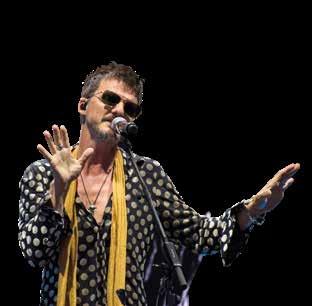
31 JANUARY:
WIZINK CENTER. MADRID
8 FEBRUARY:
PALACIO DE CONGRESOS. VALENCIA
22 FEBRUARY:
CARTUJA CENTER. SEVILLE
6 MARCH:
EUSKALDUNA AUDITORIUM. BILBAO
27 MARCH:
AUDITORI DEL FÒRUM. BARCELONA
En 1988 Los Ronaldos ya habían editado su primer disco. Suficiente para ser teloneros de James Brown en Málaga. En esta ocasión, el rey del funk fue a verlos durante las pruebas de sonido. Mantuvo un tono correcto, sin desprenderse de sus míticas gafas de sol. En cuanto terminaron, se lanzaron a las gradas a disfrutar del concierto. No dejaban de ser unos veinteañeros más contemplando a su ídolo.
Más tarde llegaron discos como Cero y Sabor salado, donde se la jugaron con la experimentación. Quisieron hacer un disco muy bien construido, huir de la etapa anterior, buscar el perfeccionismo, pero no cuajó. Con Árboles cruzados se encerraron de lleno en el estudio para rizar el rizo. Tampoco funcionó.
En 1996 lanzaron su último disco, Quiero que estemos cerca, una grabación en directo que incluía sus grandes éxitos. Dos años después la banda se disolvió.
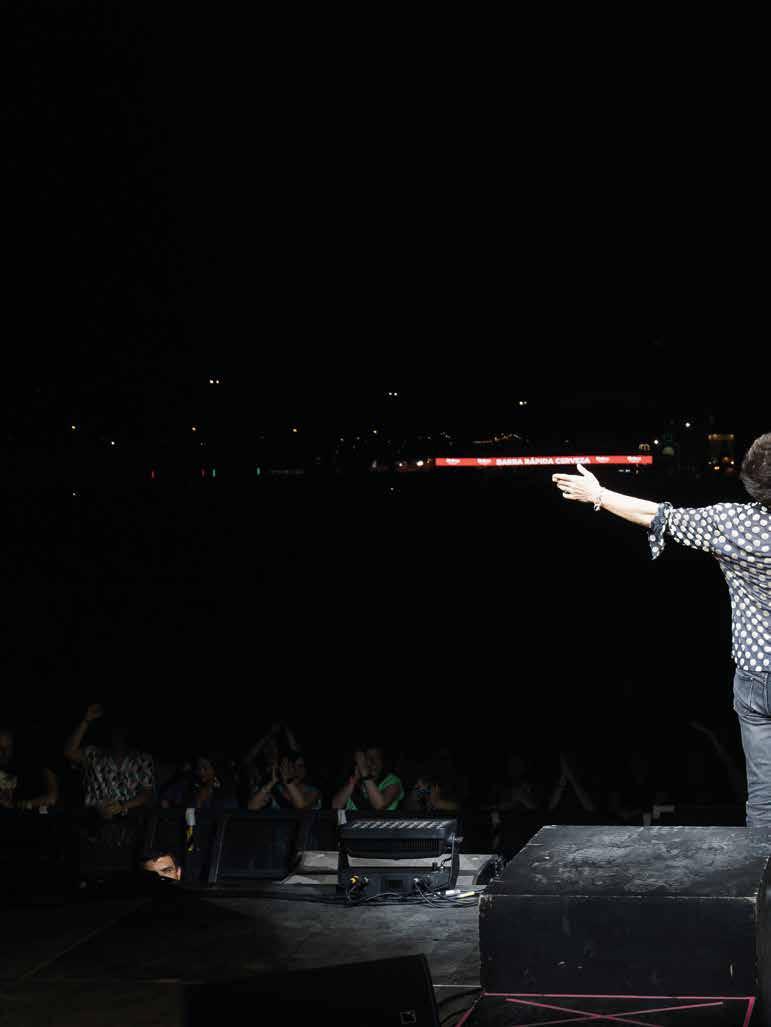
In 1988 Los Ronaldos had already released their first album. That was enough to become the supporting act for James Brown in Málaga. On that occasion, the king of funk went to see them during the sound check. He spoke kindly to them, without removing his statement sunglasses. As soon as they finished, they jumped into the stands to enjoy the show. At the end of the day, they were just some kids in their 20s admiring their idol.
They later released the Cero and Sabor Salado albums, where they took a gamble and experimented. They wanted to create a well-rounded album, leaving behind their previous era and seeking perfection, but it didn’t work out. With Árboles cruzados they locked themselves in the recording studio to take things to the next level, but it didn’t deliver either.
In 1996 they released their last album, Quiero que estemos cerca, a live recording that included their greatest hits. Two years later the band broke up.
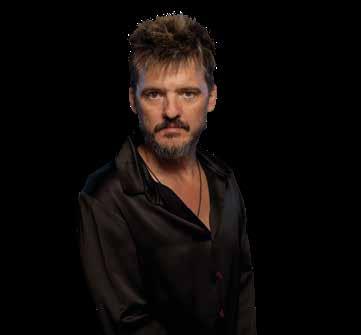
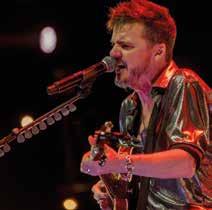

La
irrupción
fue esa bocanada de aire fresco que la industria musical necesita cada cierto tiempo
Los Ronaldos were that breath of fresh air that the music industry needs from time to time.

No puedo vivir sin ti
La permanencia de Coque Malla en la esfera musical es casi una razón de biología. Su padre, Gerardo Malla, era director de escena, y su madre, Amparo Valle, actriz. El hábitat infantil estaba compuesto por artistas, escritores o pintores. En este ecosistema, la dedicación a la música se contemplaba como un paso lógico.
Tras la disolución de la banda, vuelven a reunirse en 2007 para lanzar un nuevo disco titulado 4 Canciones Ese trabajo contenía el tema «No puedo vivir sin ti», un auténtico bombazo que le situó de nuevo en lo más alto.
Con su último álbum en solitario, Aunque Estemos Muertos, arriesga en el sonido. Hay evolución sin perder la identidad. Reconoce que sigue la estela de Radiohead –«probablemente son el grupo con más capacidad de experimentación del rock actual y siempre son perfectamente reconocibles»– y por supuesto de Bowie, al que considera el summum de la creación.
Sus cuarenta años en la música los celebrará en Madrid, Sevilla, Barcelona, Valencia y Bilbao. Una cifra que da pie a seguir, como mínimo, hasta el final.
I can’t live without you
Coque Malla’s presence in the musical scene is almost a matter of biology. His father, Gerardo Malla, was a stage director and his mother, Amparo Valle, was an actress. His childhood habitat consisted of artists, writers and painters. In this ecosystem, pursuing a music career was seen as an obvious step.
After the band broke up, its members met again in 2007 to release a new album entitled 4 Canciones. That record included the song No puedo vivir sin ti, which became a roaring success that sent him back to the top.
With his latest solo album, Aunque estemos muertos, he is taking risks with the sound. He’s evolving without losing his identity. He acknowledges that it follows in the footsteps of Radiohead—“they are probably the most capable band when it comes to current experimental rock and are always easily recognisable”—and of course Bowie, whom he considers the embodiment of creativity.
His forty years in the music industry will be celebrated in Madrid, Sevilla, Barcelona, Valencia and Bilbao. Such a milestone should be an invitation to go all the way.
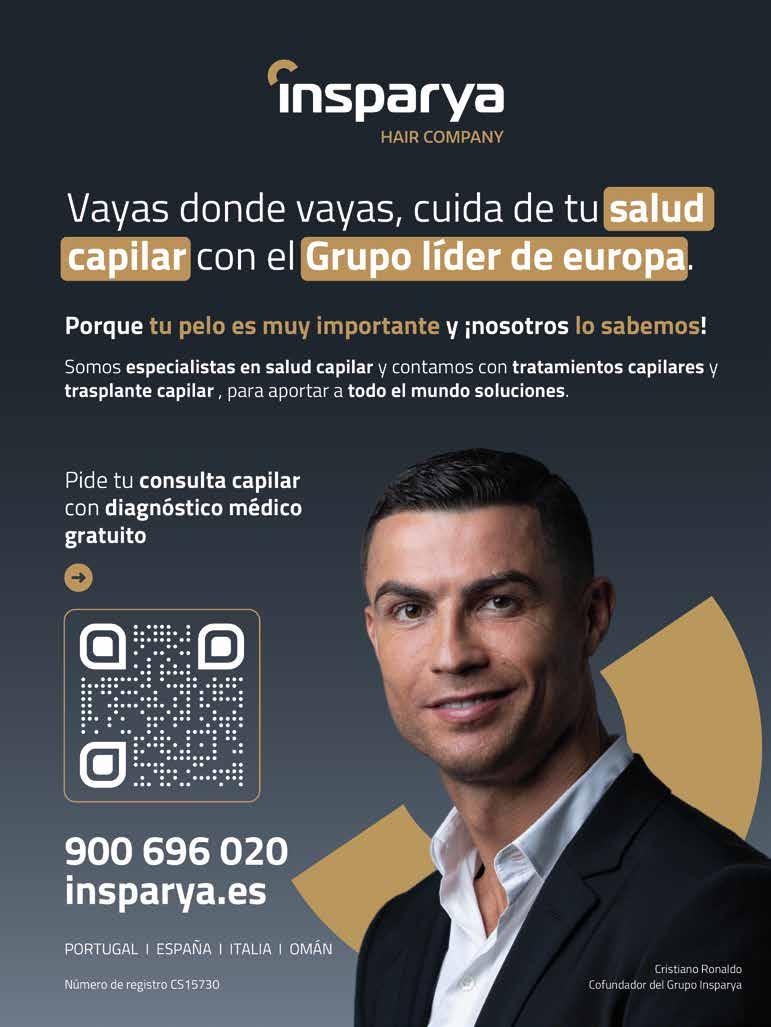

BEAUTY ADVISOR by PAZ FERRER
Tras los estragos de las fiestas y celebraciones varias que acompañan al mes de diciembre, empezamos el año con nuevos deseos para nuestra piel y, para ello, nada mejor que regalarnos un buen peeling para renovar nuestra capa dérmica y que luzca más sana y brillante.
El peeling facial es uno de los métodos de rejuvenecimiento más avanzados y efectivos para el rostro. Consiste en una exfoliación que trata la piel a nivel superficial, medio y profundo, retirando de la superficie todo aquello que la vuelve opaca e imperfecta, y activando el proceso de regeneración natural de las células. Existen peelings mecánicos, químicos o físicos. Aquí se ofrecen diferentes alternativas de peelings químicos de uso doméstico.
After all the December partying and celebrating has taken its toll, we are starting the year with the best possible skincare resolution: treating ourselves to a good peel to renew our skin layer and make it look healthier and brighter.
Face peels are one of the most advanced and effective methods for rejuvenating our face. They exfoliate the skin at the outer, medium and deep levels, removing from its top layer everything that makes it dull and imperfect, as well as activating its natural regeneration process. There are mechanical, chemical and physical peels. Here we list some options for at-home chemical peels.


Especial para piel hiperpigmentada y con tono desigual, incluidas las manchas producidas por los rayos UVA, el melasma, y las marcas de acné. Está formulado con ácido mandélico, glicólico y fítico, mezcla de algas omega 3, ácido tranexámico y niacinamida, que iluminan e igualan el tono de la piel.
Specific for hyperpigmentation and uneven skin, including spots caused by UV radiation, melasma, and acne scars. Formulated with mandelic, glycolic and phytic acids, algal-based Omega-3 oil, tranexamic acid, and niacinamide, which brightens and evens your skin tone.

El ingrediente principal, además del ácido glicólico y el ácido cítrico que combaten las líneas finas, es la miel procedente de Costa Rica. La fórmula de miel de Chanel actúa como un enzimático que cuando se combina con AHA exfolia y regenera la piel sin abrasividad. Uso semanal o cada dos semanas, si la piel es sensible.

Its main ingredient, besides fine line-reducing glycolic acid and citric acid, is honey from Costa Rica. Chanel’s honey formula acts as an enzymatic peel which, when combined with AHAs, exfoliates and regenerates the skin without being abrasive. Use weekly, or every two weeks if the skin is sensitive.



Indicado principalmente para pieles con poros abiertos. Contiene ácido láctico, málico y glicólico y está enriquecido con encimas de frutas, péptidos, miel y extracto de té verde. Es un tratamiento exfoliante y ligero, que permite su uso diario, incluso a personas con piel delicada y con tendencia al enrojecimiento.
Mainly indicated for skin with enlarged pores. It contains lactic, malic and glycolic acids and is enriched with fruit enzymes, peptides, honey, and green tea extract. It’s an exfoliating and gentle treatment that can be used daily, even by those with sensi-
Ideal por sus poderosas fórmulas y precios accesibles. Solución a base de agua que elimina los puntos negros y los poros agrandados. Formulada con ácido glicólico tartárico, salicílico, láctico, hialurónico y vitamina B5, está indicado para la hiperpigmentación y la piel propensa al acné. Es importante no mantenerlo más de diez minutos y no utilizarlo más de dos veces por semana.
A great option thanks to its powerful for mula and affordable price. Water-based solution that removes blackheads and en larged pores. Made with glycolic acid, tartaric acid, salicylic acid, lactic acid, hyaluronic acid, and vitamin B5, it is indicated for hyperpigmen tation and acne-prone skin. It’s important not to leave it on for more than ten minutes and not to use it more than twice a week.

Producto diario en dos pasos para obtener resultados profesionales en casa. Compuesto de cinco tipos de alfa y beta hidróxidos, consigue dejar la tez con aspecto luminoso. La mezcla de ácido láctico, retinol y vitamina C trabaja para suavizar la apariencia del tono y la textura de la piel. Una suave composición a base de de manzanilla, glicerina y extracto de té verde mantienen la piel sin irritaciones.



Indicado para pieles mixtas y grasas, su principio activo estrella es el ácido acetilsalicílico. Solo hace falta usarlo mañana y noche como si fuera un tónico y cumple lo que promete en siete días.
Two-step skincare routine to achieve professional results at home. Packed with five types of AHA/BHAs, it leaves your skin looking radiant. The combination of lactic acid, retinol and vitamin C works by smoothing and evening out skin tone and texture. Its gentle blend of chamomile, glycerin, and green tea extract prevents skin irritation.
Indicated for combination and oily skin, its key active ingredient is acetylsalicylic acid. You only need to use it in the morning and at night as a toner and it delivers in seven days.



“Spain is a country with low self-esteem”
MARÍA ADÁNEZ ES UNA PRESENCIA CONSTANTE EN LAS PANTALLAS ESPAÑOLAS. AHORA CELEBRA CUARENTA AÑOS DE PROFESIÓN EN UN GREMIO MÁS DADO A LOS BRILLOS FUGACES QUE AL GOTEO CONSTANTE. ADÁNEZ ES PURA VERSATILIDAD, DESLUMBRA SU DESTREZA PARA HACER DE TODO Y HACERLO BIEN. ESO SÍ, QUEDA EN EL IMAGINARIO COLECTIVO DE ESTE PAÍS SU INOLVIDABLE PIJA EN AQUÍ NO HAY QUIEN VIVA . MIENTRAS ESTÁ DE GIRA CON LA GRAMÁTICA , UN SORPRENDENTE MONTAJE TEATRAL, CALIENTA MOTORES PARA PARTICIPAR EN LA DECIMOQUINTA TEMPORADA DE POPULAR SERIE. ESTÁ QUE NO PARA.
Se dice pronto, pero usted lleva cuarenta años de profesión y su teléfono no ha dejado de sonar. ¿Cómo se consigue?
Tengo una necesidad imperiosa de actuar y de estar conectada con la creatividad de la interpretación. Los actores somos vocacionales; no es una profesión cualquiera. Leí hace poco que los actores no nos jubilamos. ¿El truco para mantenerse? Que nos encanta lo que hacemos.
“Es un gustazo interpretar personajes que conectan tanto con el público español”
“Playing roles that connect so much with the Spanish public is a real treat”
MARÍA ADÁNEZ IS A CONSTANT PRESENCE ON SPANISH TV SCREENS. SHE IS CELEBRATING A FORTY-YEAR CAREER BUILT IN A PROFESSION KNOWN FOR ITS FLEETINGNESS RATHER THAN ITS STEADINESS. ADÁNEZ IS AN ALL-ROUND PERFORMER, SHINING WITH HER GREAT SKILL TO DO ANYTHING AND DO IT WELL. SHE DEFINITELY HAS A PLACE IN THIS COUNTRY’S COLLECTIVE IMAGINATION AS THE MEMORABLE POSH GIRL IN AQUÍ NO HAY QUIEN VIVA . CURRENTLY TOURING WITH THE SURPRISING THEATRE PRODUCTION LA GRAMÁTICA , SHE IS ALSO GETTING READY TO PARTICIPATE IN THE FIFTEENTH SEASON OF THE POPULAR SERIES. SHE’S WORKING NON-STOP.
You have been working for forty years, no less, and your phone has never stopped ringing. How do you manage that?
I have always been compelled to perform and to be in touch with the creativity of acting. Being an actor is a vocation—it’s very different from other professions. I recently read that actors never retire. The secret to keep on working? We love what we do.
Su primera aparición en el cine fue a los seis años, en la película Mar brava. ¿Tiene recuerdos de ese debut?
Claro, aún me acuerdo. Lo mejor es que allí descubrí mi vocación. Sentí que me encontraba como pez en el agua en un mundo de adultos. Me supe adaptar con mucha facilidad: aprendía mis textos, iba al set de rodaje y no quería que terminara. Trabajábamos ocho horas, y mi madre me decía: «Hija, ya nos tenemos que ir a casa». Lo recuerdo con felicidad. Supe desde muy pequeña que quería ser actriz, una cosa alucinante para una niña de esa edad.
¿Cómo fue el proceso de aprendizaje a lo largo de su carrera?
Absolutamente autodidacta. La gran experiencia laboral que me dio la profesión fue mi preparación. Luego decidí dar un giro de ciento ochenta grados y hacer teatro con directores de prestigio como Miguel Narros, Josep Maria Flotats y, más recientemente, José Carlos Plaza. Quería ponérmelo difícil y buscar personajes dramáticos. Era una forma de crecer como actriz. Llevaba años haciendo comedia en televisión y deseaba seguir aprendiendo. Es una decisión que tomé para convertirme en la actriz que soy ahora.
Durante estos años, la ficción española también ha evolucionado. ¿Qué cambios ha percibido?
Para la audiencia, todos. La gente ahora puede consumir ficción como quiera, sin esperar a que se emitan los capítulos. Es más inmediato; no sé si mejor. Dada la espléndida forma física de la televisión, en gran parte por la llegada de las plataformas digitales, hay tantas series que el género se está igualando al cine. Antes, las series te acompañaban durante años, y los personajes crecían contigo. Ahora son producciones efímeras de unos pocos capítulos, y pasamos a otra cosa.

“La motivación de los actores debe ser entretener y, si es posible, transformar a su público”
“Actors’ motivation should be to entertain and, if possible, to transform their audience”
Your first cinema role was at the age of six in the film Mar brava. Do you have any memories of that debut?
Sure, I still remember it. The best thing was to discover my vocation back then. I was in my element in a world of grown-ups. I learnt how to adapt very easily: I would learn my lines, go to the film set and wish it didn’t have to end. We worked for eight hours, and my mother would say to me: “Come on darling, we have to go home.” I remember it fondly. I knew from a very young age that I wanted to become an actress, which is quite amazing for a little girl.
How was your learning process throughout your career?
I’m entirely self-taught. The broad experience I gained while working in this profession was my training ground. I later decided to make a U-turn and go into theatre with prestigious directors such as Miguel Narros, Josep Maria Flotats and, more recently, José Carlos Plaza. I wanted to set myself a challenge and look for dramatic roles. It was a way to grow as an actress. I had been doing comedy on television for years and wanted to continue learning. It was a decision I made to become the actress I am today.
Over the past few years, Spanish fiction has evolved too. What changes have you noticed? When it comes to the audience, everything has changed. People can now consume fiction on demand, without waiting for the next episode to be aired. It’s more immediate—I’m not sure if it’s better. Television is in great shape, largely due to the rise of digital platforms. There are so many series now that the genre is being equated to cinema. In the past, TV shows were part of your life for years, with the characters growing up with you. Nowadays they are ephemeral productions comprising a few episodes, and we move on to something else quickly.
“Dada la espléndida forma física de la televisión, en gran parte por la llegada de las plataformas digitales, hay tantas series que el género se está igualando al cine”
A propósito de la ficción, vuelve a la decimoquinta temporada de La que se avecina. Estará contenta de su reencuentro con el tándem formado por Alberto y Laura Caballero… No me canso de decir que son unos genios absolutos de la televisión actual. Tienen una visión genuina y un talento inagotable. Llevan veintidós años escribiendo, dirigiendo y produciendo ficción, desde Aquí no hay quien viva hasta Machos Alfa. Ante la propuesta de volver a trabajar con ellos, me dije que sí, porque era como volver a casa. Es un gustazo interpretar personajes que conectan tanto con el público español. Saben lo que quiere la gente y eso no es fácil. Me siguen impresionando.
El éxito de La que se avecina quizá se deba a que retrata muy bien a los españoles, tal vez de manera muy despiadada… Ha conseguido dar en la diana en una España de perdedores con la que todo el mundo se identifica. España es un país con falta de autoestima. Es una fórmula magistral que Alberto y Laura han manejado con mucho talento desde sus inicios.
La Gramática también ha calado a esta sociedad... Es una función muy inteligente, escrita de manera brillante por Ernesto Caballero. Es una comedia sobre una limpiadora de la Real Academia de la Lengua que, tras un accidente, despierta convertida en una mujer ilustrada. Sin embargo, su nuevo nivel de lenguaje la aísla, y se somete a una terapia para desaprender y volver a hablar mal; un Pigmalión al revés. La función reflexiona sobre el deterioro de nuestro idioma. Oímos con frecuencia que da igual cómo se hable, porque lo que cuenta es entenderse. Se pierde el amor por la lengua, y se plantea la reflexión de hasta dónde somos capaces de llegar, siguiendo lo que nos impone la sociedad, para sacrificar la cultura.
¿Hay algo de esquizofrenia en una actriz que disfruta por igual en el teatro, cine y televisión? Los actores tenemos tres grandes amores: el teatro, el cine y la televisión. Si además podemos hacer musicales y doblaje, mejor aún. Cada uno es un amor diferente, y poder desarrollarse en todos estos campos es un lujo. Nuestra carrera es inestable, y siempre queremos trabajar y buscar buenos personajes.


“Television is in great shape, largely due to the rise of digital platforms. There are so many series now that the genre is being equated to cinema”
Speaking of fiction, you’re back on season fifteen of La que se avecina. You must be happy to work again with the Alberto and Laura Caballero tandem.
I never tire of saying that they are absolute geniuses in the television industry. They have an authentic vision and unlimited talent. They have been writing, directing and producing fiction for twenty-two years, from Aquí no hay quien viva to Machos Alfa . When they offered me to work with them again, I said yes because it was like going home. Playing roles that connect so much with the Spanish public is a real treat. They really know what people want and that’s not easy. They never cease to impress me.
The success of La que se avecina might be because it portrays Spanish people very well, although perhaps in a very ruthless way.
It has managed to hit the nail on the head by portraying a Spain of losers which resonates with everyone. Spain is a country with low self-esteem. Alberto and Laura have handled this formula with great skill since the very beginning.
La Gramática has also seen through our society.
It is a very intelligent play, written brilliantly by Ernesto Caballero. It’s a comedy about a cleaner at the Royal Spanish Academy who, after an accident, wakes up turned into an erudite. However, her new language proficiency isolates her, so she undergoes therapy to unlearn and speak poorly again—a Pygmalion reversed. The play is a reflection on the deterioration of our language. We often hear that the way you talk doesn’t matter, because what counts is understanding each other. The love for language is then gone. The piece examines how far we are willing to go, abiding by what society imposes on us, to sacrifice culture.
Is being an actress who enjoys theatre, film and TV in equal parts like having multiple personalities?
Actors have three great loves: theatre, cinema and television. If we can also perform in musicals and do voice overs, all the better. Each one is a different kind of love, and being able to grow in all these fields is a privilege. Our career is unstable, and we always want to work and find good characters.
“La que se avecina ha conseguido dar en la diana en una España de perdedores con la que todo el mundo se identifica”
Recientemente, recibió un galardón en el South Festival de Cádiz que premiaba su trayectoria. ¿Cómo se lleva con los aplausos?
Al final, los aplausos son el reconocimiento a un trabajo bien hecho y es muy gratificante. Los actores trabajamos para el público. Hace poco, en Zamora, recibimos una fuerte ovación tras representar La Gramática, y eso te llena de satisfacción; te dice que estás haciendo algo que interesa. La motivación de los actores debe ser entretener y, si es posible, transformar a su público.
No puede faltar una pregunta… ¿Cuántas veces le dicen eso de «¡qué mona va esta chica siempre!»?
Lo oigo mucho, y con el tiempo me ha empezado a dar nostalgia. Me recuerda a doña Mariví Bilbao, que era un genio. La frase fue idea suya, no estaba en el guion. Formar parte de una serie que está en la historia de la televisión española como Aquí no hay quien viva es algo que ocurre muy pocas veces. Todo lo relacionado con esa serie me llena de orgullo. He sido popular desde muy joven y he integrado esa popularidad de forma natural en mi vida. Es muy bonito que la gente se acerque; antes pedían autógrafos y ahora fotos, pero siempre es una muestra de cariño que no tiene precio.

You have just received an honorary award at the South International Series Festival of Cádiz. How do you get along with praise? Well, applause is a form of appreciation for a job well done and it is very gratifying. Actors work for their audience. Recently, in Zamora, we received a standing ovation after performing La Gramática. That fills you with satisfaction—it tells you that you are doing something that interests people. Actors’ motivation should be to entertain and, if possible, to transform their audience.
I need to ask this: how many people tell you the catchphrase “this girl always looks so stylish!”?
I hear it a lot, and over time it has begun to make me feel nostalgic. It reminds me of Mrs. Mariví Bilbao, who was a genius. The phrase was her idea, it was not on the script. Being part of a series that has made history in Spanish TV such as Aquí no hay quien viva is something that happens very rarely. Everything related to that series fills me with pride. I have been well-known since a young age and have incorporated that popularity naturally into my life. It’s very nice to see people come to me. They used to ask for autographs and now they take photos, but it’s always a priceless sign of affection.
“La que se avecina has managed to hit the nail on the head by portraying a Spain of losers which resonates with everyone”

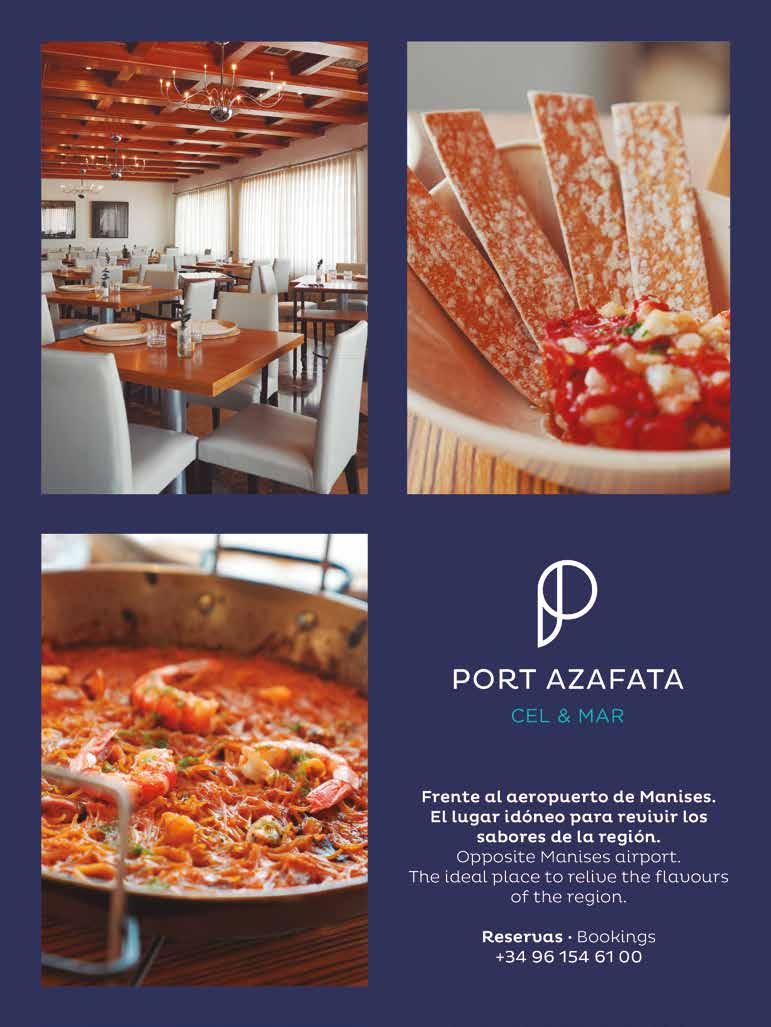



The vision of
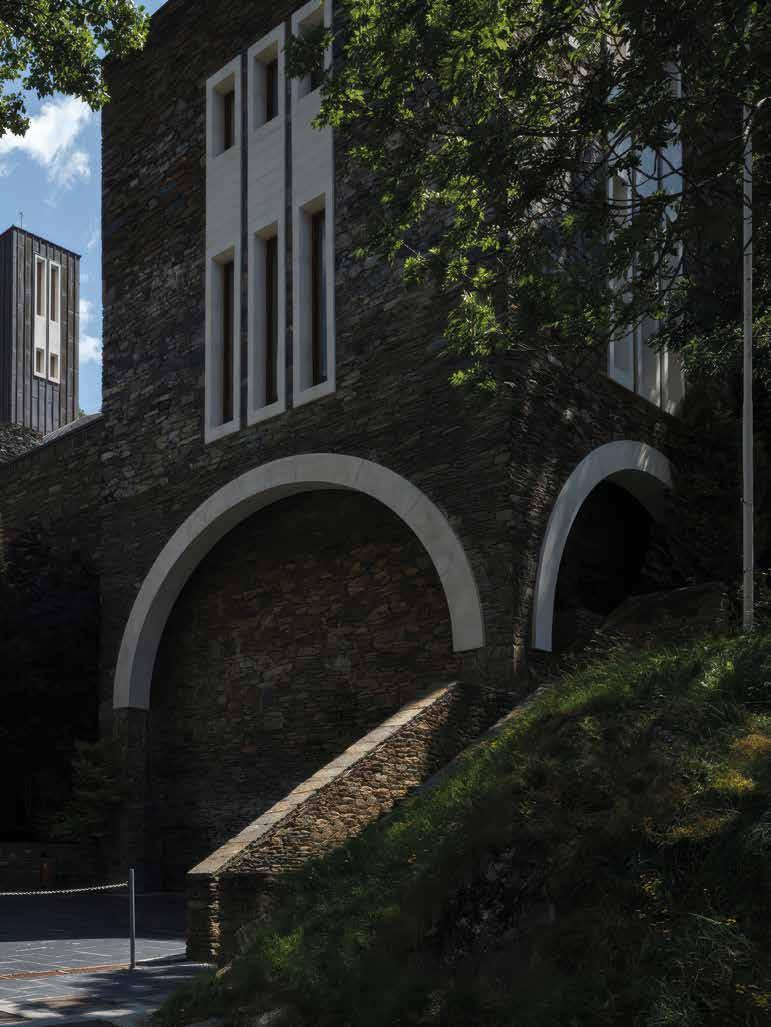
Con 468 kilómetros cuadrados, el Principado de Andorra es uno de los estados más pequeños del mundo. Para hacernos una idea de lo que esto significa, Guipúzcoa, la provincia más pequeña de España, es mucho mayor: 1.980 Km2. Aun así, en este microestado europeo, el país de los Pirineos, hay algunas cosas que lo hacen único, y en esta sección en la que hablamos de cosas de tres en tres, ahí va un trio que hace único a Andorra: una iglesia histórica que resurgió de sus cenizas convertida en un referente arquitectónico, una estación de esquí que por sus características es única y un circuito de velocidad que por su situación y condiciones bate récords. Y es que Andorra, aun siendo un territorio minúsculo en comparación con otros países, tiene muchas peculiaridades, cumpliendo así con ese dicho en catalán, lengua oficial del país “al pot petit hi ha la bona confitura”, que en castellano vendría a ser “en el bote pequeño está la buena mermelada”
Covering an area of 468 sq km, the Principality of Andorra is one of the smallest states in the world. To get an idea of what this means, the smallest province in Spain, Gipuzkoa, is much larger: 1,980 sq km. Even so, this European microstate—the Pyrenees country—boasts some features that make it unique. In this section we usually talk about things in threes, so here’s a trio of places that make Andorra stand out: a historic church that rose from its ashes and became an architectural landmark, a ski resort with distinct characteristics, and a speed track that breaks records due to its location and conditions. The thing is, Andorra, despite being a tiny territory compared to other countries, has many peculiarities, thus being true to the Catalan saying—the official language of the country— “al pot petit hi ha la bona confitura”, which would translate as “the best jam comes in small jars”.
La iglesia que renació de sus cenizas
Si usted conoce a alguna Meritxell, probablemente sea andorrana, tenga antepasados del país o está estrechamente relacionada con él. Y es que la virgen de Meritxell es la patrona de Andorra desde 1873 por decisión unánime del Consell General de les Valls, el antiguo parlamento local.
La antigua imagen de la patrona estuvo durante décadas en un santuario levantado en el siglo XVI, que sufrió un terrible incendio en la noche del 8 al 9 de septiembre de 1972. Fue una jornada de las que se recuerdan en el país. Fue también una oportunidad para invitar a uno de los arquitectos de mayor proyección por entonces, Ricardo Bofill
Levi, a que junto a los profesionales de su taller diseñasen una nueva basílica-santuario a pocos metros de la incendiada. Los trabajos se remataron en 1978.
Hoy a nuestra señora de Meritxell, celebrada cada año el día 8 de septiembre y cuya figura se volvió a diseñar, pues la original quedó gravemente dañada en el incendio, se la venera en un espacio que es uno de los iconos arquitectónicos del país. Moderno y sorprendente, aunque sin perder el referente estético de su localización, en plena montaña. Desde 2014 el edificio es considerado como basílica menor, categoría otorgada por el papa Francisco.
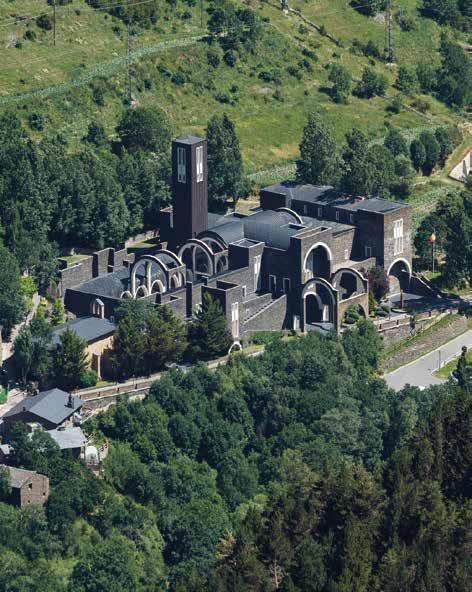
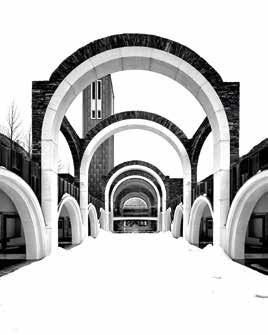
The church that rose from its ashes
If you know a Meritxell, she is likely from Andorra, has ancestors from the country, or has close links with it. The Virgin of Meritxell has been the patron saint of Andorra since 1873 by unanimous decision of the Consell General de les Valls, the old local parliament.
The old statue of the patron saint was kept for decades in a 16th-century sanctuary which was destroyed by a fire on the night of 8 September 1972. It was one of those days that stays in the memory of the country. It was also an opportunity to invite one of the most promising architects at that time, Ricardo Bofill Levi, to design with his studio team a new basilica-sanctuary a few metres away from the ravaged one. The work was completed in 1978.
Today, Our Lady of Meritxell, feted every 8 September and whose statue was redesigned because the original was seriously damaged in the fire, is venerated in one of the country’s architectural icons. The space is modern and surprising, without losing the aesthetic inspiration of its location in the middle of the mountains. Since 2014, the building has been considered a minor basilica, a denomination granted by Pope Francis.

El circuito permanente a mayor altura del mundo
Situado a 2.400 metros sobre el nivel del mar, el circuito de Andorra es el trazado de velocidad de mayor altura del mundo. Supera incluso al celebre autódromo Hermanos Rodríguez de México. Además de su espectacular ubicación tiene dos pieles: una en invierno, nevada y otra, como circuito de velocidad de asfalto convencional, con lo que puede usarse todo el año, tanto para competiciones convencionales como especializadas.
Evidentemente este trazado es conocido sobre todo por sus carreras sobre hielo y nieve, generalmente de diciembre a marzo. Es sede de varios campeonatos de coches, motos y otros vehículos y lugar de presentación de nuevos modelos en un lugar realmente fotogénico donde, además se pueden realizar pruebas con total seguridad.
El trazado tiene 945 metros y además de pilotos profesionales, muchos conductores se han lanzado a sus curvas no solo a probar la sensación de conducir sobre hielo, sino que es un referente en cursos de conducción invernal.
The world’s highest permanent race circuit
Located at 2,400 m above sea level, this Andorran racecourse is the highest altitude speed track in the world, even beating the famous Autódromo Hermanos Rodríguez in Mexico. In addition to its spectacular location, this winter ice and snow racetrack doubles as a conventional asphalt race circuit, so it can be enjoyed all year round, both during conventional and special competitions.
Its layout is obviously known mainly for its ice and snow races, which usually take place from December to March. It holds several motorsport championships (car, motorcycle, and other vehicles). It is also a place for launching new models against a truly photogenic backdrop, and tests can be carried out here with the highest level of safety.
Its 945-metre-long layout is enjoyed not only by professional drivers, but also by many amateur drivers that put their ice driving skills to the test in this track that is also a winter driving courses benchmark.


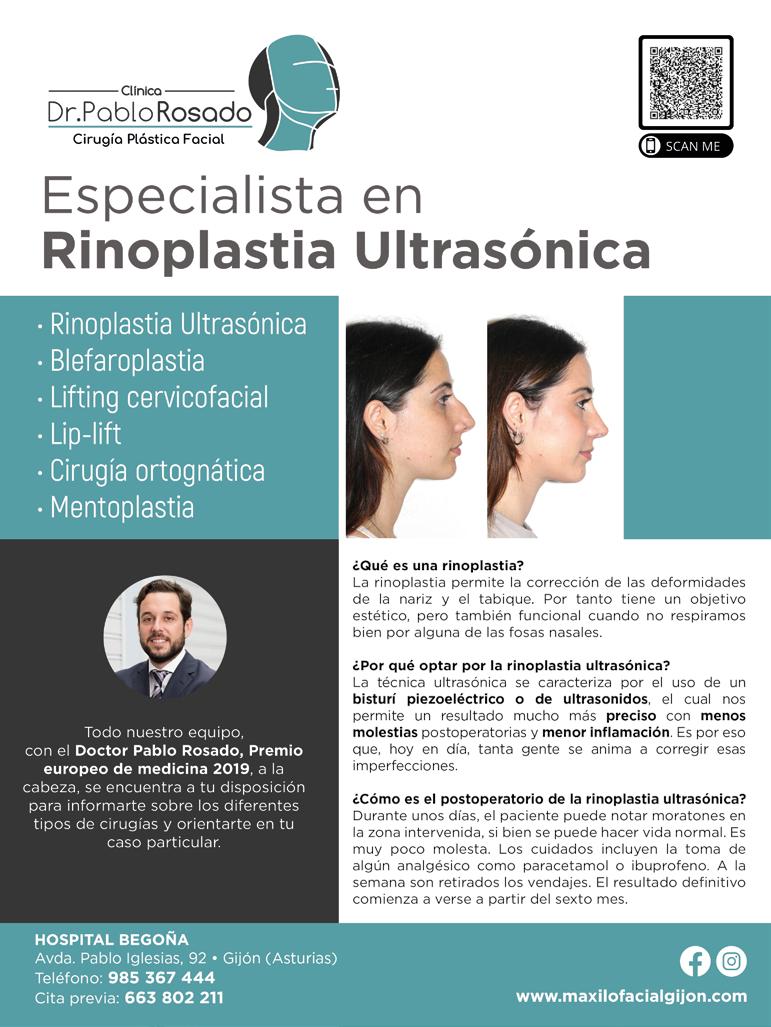
La estación de esquí mínima
Viajamos al mes de diciembre de 1968. El emprendedor local Josep Farré (su familia era más conocida como “los Canaro”) tiene ideas de futuro para terrenos de su propiedad junto a la carretera que lleva hacia Pas de la Casa y la frontera francesa. Tras convertir una borda para guardar ganado en un restaurante y un parador con cinco habitaciones, idea una pista para principiantes en el esquí, incluyendo un telesquí. El proyecto, una vez en marcha es todo un éxito, que va acompañado luego de dos grandes novedades, hoy habituales, aunque en su momento revolucionarias: la primera piscina climatizada del país, en 1972 y el primer cañón para la fabricación de nieve artificial que se instaló en el Pirineo, en 1976.
Pasado medio siglo, ski Canaro es una instalación entrañable y un sitio ideal para aprender a esquiar. Con solo dos pistas para esquí y una tercera para trineos, es la estación de esquí más pequeña de Andorra y probablemente de Europa. El Parador sí que es completamente diferente a sus primeros tiempos. Pertenece a la misma familia, que ya amplió su capacidad, aunque ahora está gestionado por la familia Serra.
El Serras Andorra es hoy uno de los mejores hoteles del país. Tiene categoría de cinco estrellas, y entre sus instalaciones dispone de un lujoso spa, una notable oferta de restauración, incluyendo una sala especializada en quesos y fondues y, además, todos los huéspedes tienen incluido el uso de la pequeña estación de esquí al pie de su hotel donde aprender o perfeccionar su nivel de esquí o un servicio incluido de transporte a las pistas de Grandvalira, referente del deporte blanco en Andorra.
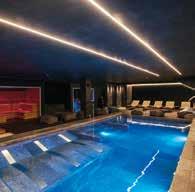
The minimal ski resort
Let’s travel back to December 1968. Local entrepreneur Josep Farré (his family was known as Los Canaro) has ideas for the future of the land he owns next to the road leading to Pas de la Casa and the French border. After converting a cattle barn into a restaurant and a parador with five rooms, he devises a ski slope for beginners with a ski lift. The project, once launched, becomes a success and is followed by two great innovations that are now commonplace but revolutionary at the time: the first heated pool in the country, in 1972, and the first artificial snowmaking cannon that was installed in the Pyrenees, in 1976.
Half a century later, Ski Canaro is an endearing facility and the best place to learn to ski. With only two ski slopes and a third for sledging, it is the smallest ski resort in Andorra and probably in Europe. The parador has undergone a thorough renovation. It belongs to the same family, which already increased its capacity, although it’s now managed by the Serra family.
The Serras Andorra is one of the best hotels in the country. This five-star accommodation boasts a luxurious spa and remarkable eating options, including a cheese and fondue corner. Guests may also enjoy the small ski resort at the foot of their hotel where they can learn or improve their skiing skills or catch the free shuttle service to the slopes of Grandvalira, a winter sports landmark in Andorra.


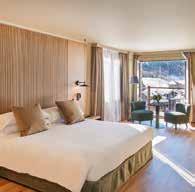
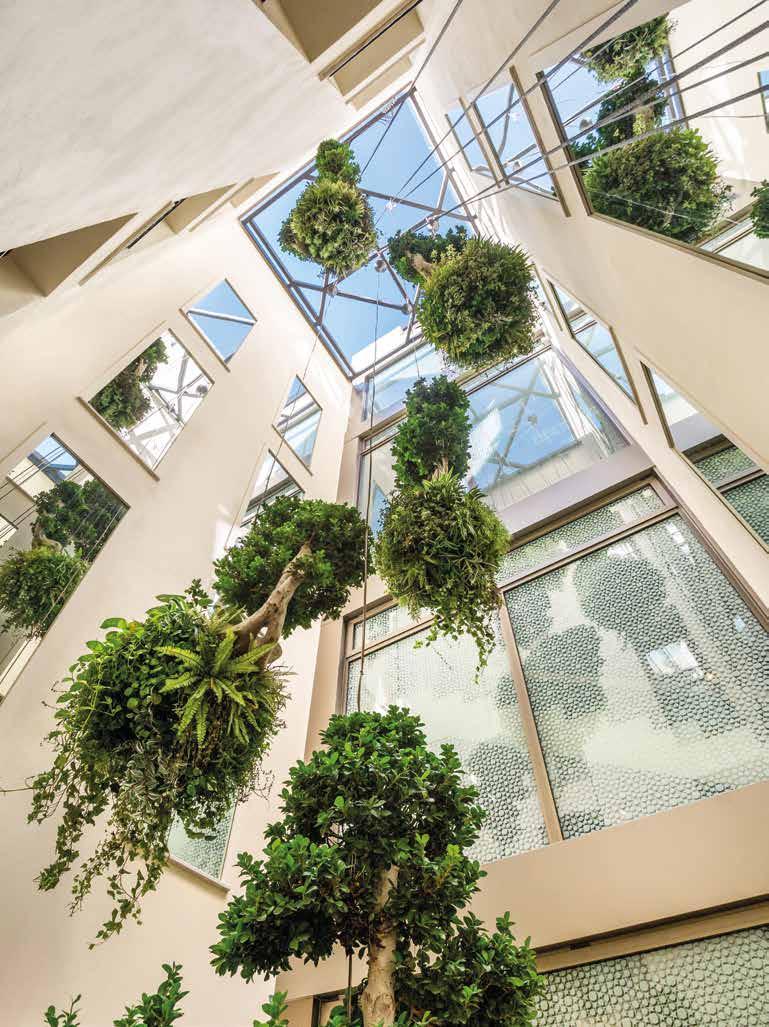
Llorenç Vilallonga fue un celebre psiquiatra mallorquín, que destacó en otros campos como el periodismo, la escritura y las novelas. Llegó a ser premio Josep Plá en 1973 y la ciudad de Palma le recuerda con una plaza en la ciudad. En el numero 4 de esta plaza, muy cerca de la catedral, frente al Mediterráneo y junto al Parque del Mar está el hotel El Llorenç Parc de La Mar. Un parque importante en la capital de la isla diseñado, por cierto, por el mismo arquitecto que planeó la terminal del principal aeropuerto de la isla: Pere Nicolau.
Llorenç Vilallonga was a celebrated Mallorcan psychiatrist who also excelled as a journalist, writer and novelist. He was awarded the Josep Pla Award in 1973 and the city of Palma paid homage to him by naming a square after him. At No. 4 in that square, very close to the cathedral, facing the Mediterranean, and next to the Parc de la Mar park, we find the El Llorenç Parc de la Mar hotel. The park is an important feature in the island’s capital which happens to have been designed by the same architect who planned the terminal of the island’s main airport: Pere Nicolau.
Cuando alguien llega a la isla, piensa directamente en el mar que ha sobrevolado o por el que ha navegado hasta llegar al destino, y este hotel cumple con el deseo de disfrutar del mar desde sus instalaciones. Como referencia para hacernos a la idea de su tamaño, este establecimiento considerado solo para adultos tiene 33 habitaciones muy confortables de las que es difícil salir. No obstante, si las abandona no se sentirá defraudado por un Rooftop diseñado centímetro a centímetro con unas vistas maravillosas sobre el Mediterráneo, con hamacas, camas balinesas, piscina y, en verano servicio de restauración coordinado por Santi Taura y su equipo.
El lector curioso se preguntará quien es Santi Taura. Se lo contamos: Taura es uno de los personajes de los que se siente más orgullosa la propiedad del hotel, pues es al que en 2019 dio las riendas de su restaurante: Dins. Su buen hacer llevó al hotel a tener un restaurante con estrella Michelin y dos Soles Repsol, ofreciendo cocina mallor-

quina actualizada, no olvidando nuca las raíces de la isla. Esa autenticidad y el respeto por la tradición es la que ha prestigiado la restauración de este hotel frente al mar.
Como hotel mediterráneo que quiere sorprender y mimar a los huéspedes tiene cierta estética arabizante, aunque lo que es netamente árabe es el Ç Wellnes Studio, que es una versión moderna de los baños ára-
When visitors arrive on the island, the first thing they think of is the sea they have flown over or sailed through to get to their destination. This hotel makes the wish to enjoy the sea from its facilities come true. To get an idea of its size, this adults-only accommodation has 33 very comfortable rooms that you won’t want to leave. However, if you do leave them, you won’t be disappointed by the rooftop terrace. Carefully designed and boasting wonderful views over the Mediterranean, it comes with hammocks, Balinese beds, a swimming pool and, in the summer, a catering service led by Santi Taura and his team.
The inquisitive reader will wonder who Santi Taura is. We will tell you: Taura is one of the most prideworthy members of the hotel, as he was given the reins of its restaurant, Dins, in 2019. Thanks to his good work, the hotel has a Michelin-star restaurant with two Repsol Suns offering updated Mallorcan cuisine without neglecting the island’s origins. Such authenticity and respect for tradition is what brings prestige to the food offering at this seafront hotel.
As a Mediterranean hotel that wants to surprise and pamper its guests, it has some Moorish influences, particularly at the ‘Ç Wellness Studio’, which is a modern version of the Arab baths and another gem at El Llorenç. It features an inviting 14-metre heated pool where you can swim or relax, as in the rest of the facilities.
The hotel, like its rooms, was designed to make you want to stay thanks to the relaxed atmosphere and its amenities. However, its location in the La Calatrava neighbourhood—one of the hearts of the island’s capital—makes it impossible not to venture out and explore its surroundings. This is a very interesting spot where you can explore the island’s roots with the perk of being able to rest, after the walk, in one of the most exquisite hotels in the city.
bes y otra de las joyas del Llorenç, que incluye una tentadora piscina climatizada de 14 metros donde nadar o relajarse, como en el resto de las instalaciones.
Aunque el hotel, como sus habitaciones, están diseñados para no salir del establecimiento por el ambiente relajado y su comodidad, su ubicación, en el barrio de La Calatrava, uno de los cogollitos de la capital insular, es imposible no salir a explorar los alrededores, muy interesantes y donde se pueden ver las raíces de la isla, con la ventaja de volver a descansar, tras el paseo, a uno de los hoteles mas deliciosos de la ciudad.
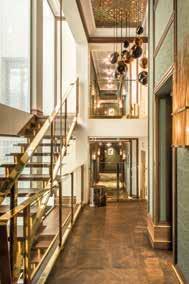
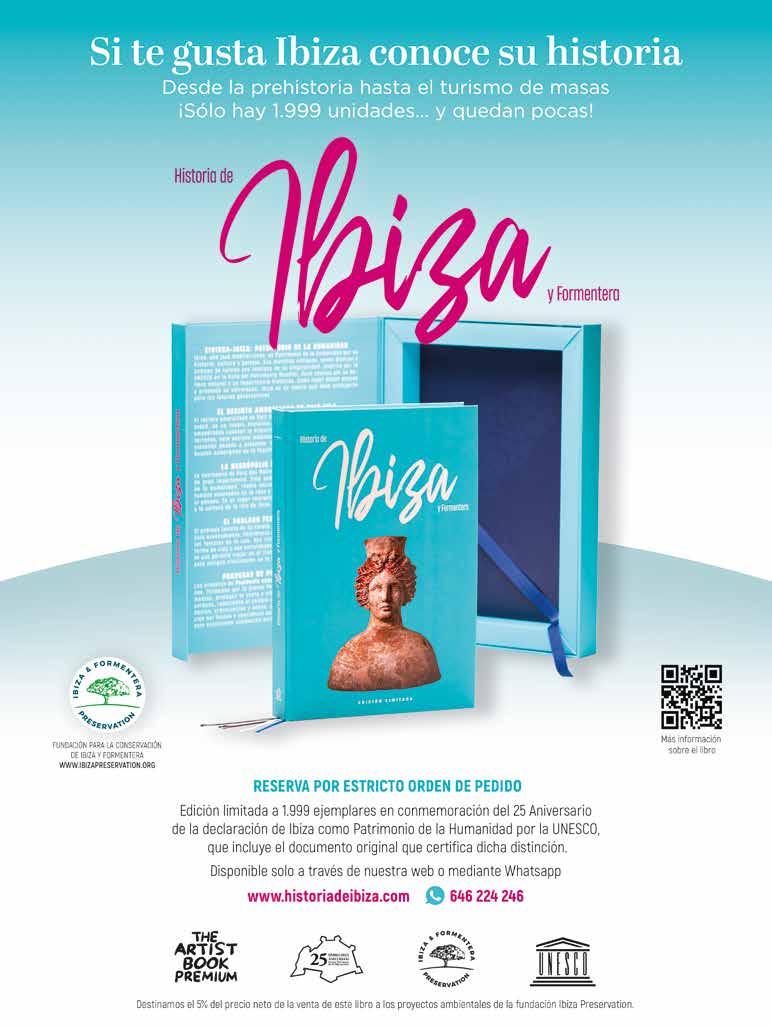

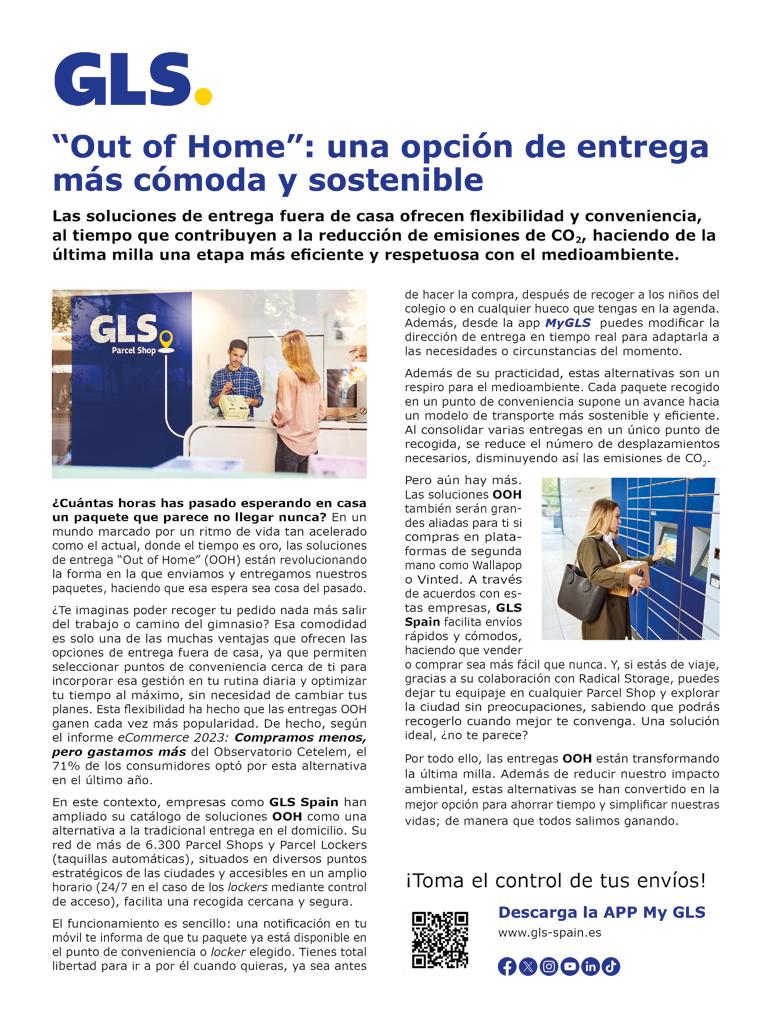
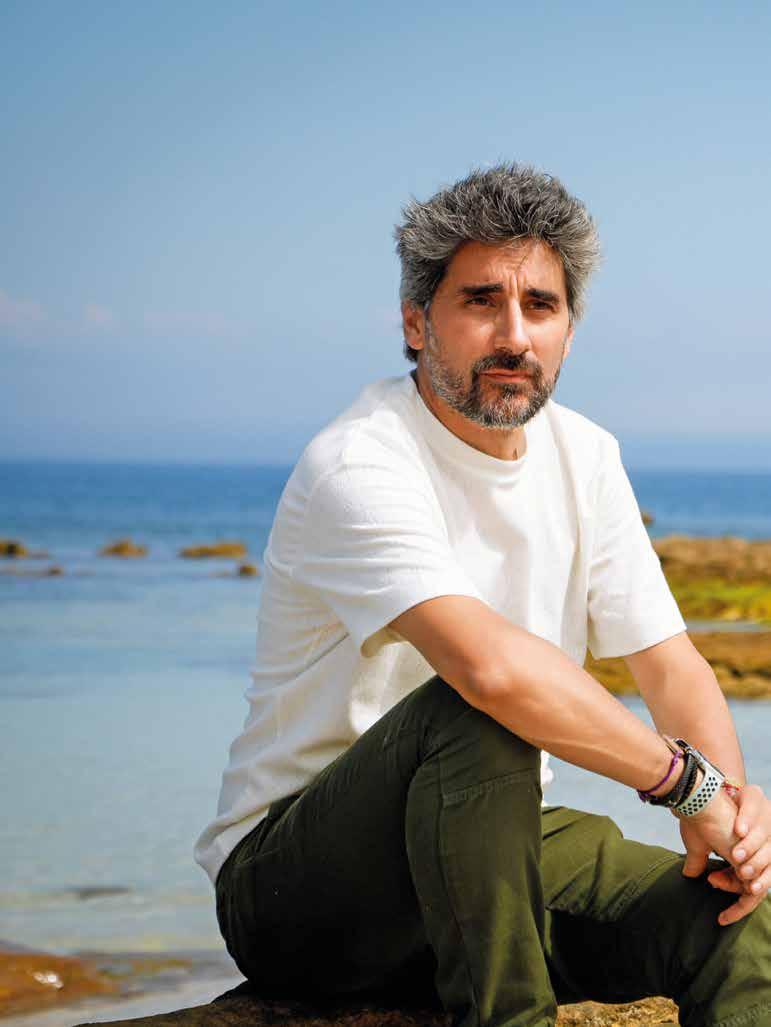
We are just a couple of showers and three or four hot meals away from barbarism
LA ÚLTIMA NOVELA DE LOUREIRO, CUANDO LA TORMENTA PASE, ES UN THRILLER AMBIENTADO EN LA ISLA DE ONS QUE FUNCIONA COMO UNA OLLA A PRESIÓN. NO SE PUEDE, NI SE QUIERE, ABANDONAR LA LECTURA DE ESTA TRAMA BARNIZADA DE VIEJOS RENCORES, VIOLENCIA RURAL Y LA CLAUSTROFOBIA DE UNA ATMOSFERA OPRESIVA. EL PREMIO FERNANDO LARA HA RECONOCIDO EL IMPECABLE USO DE LAS CLAVES DE LA NOVELA NEGRA EN ESTA HISTORIA TAN ADICTIVA COMO IMPREVISIBLE.
LOUREIRO’S LATEST NOVEL, CUANDO LA TORMENTA PASE, IS A THRILLER SET ON ONS ISLAND THAT WORKS LIKE A PRESSURE COOKER. WE CANNOT (NOR WILL WE) STOP READING THIS STORY CENTRED AROUND OLD GRUDGES AND RURAL VIOLENCE, AND SET IN A CLAUSTROPHOBIC, OPPRESSIVE ATMOSPHERE. THE FEDERICO LARA NOVEL AWARD HAS RECOGNISED THE IMPECCABLE USE OF CRIME NOVEL CODES IN THIS STORY AS ADDICTIVE AS IT IS UNPREDICTABLE.

Un lugar como la Isla de Ons pide a gritos una historia como Cuando la tormenta pase. ¿Inquieta pensar que la frontera entre paraíso e infierno sea tan difusa?
Me fascina la realidad que nos rodea. Soy muy observador –quizá es una herencia de mi pasado como abogado– y es verdad que muchas veces la auténtica esencia de la gente y de los lugares está oculta a plena vista, camuflada bajo una red muy fina de urbanismo y cortesía, que puede saltar por los aires a la mínima. Un mundo lleno de tensiones que está bullendo ahí, esperando su oportunidad para explotar. ¿Cuál fue el detonante para sentarse a escribir esta novela?
Me interesaban los rencores rurales, lo diferentes que son a las rencillas en las grandes ciudades y lo distinta que es la manera de gestionarlos. En una gran ciudad, si alguien te cae mal lo puedes solucionar con no volver a ver a esa persona, pero en un entorno pequeño, como un pueblo, el motivo de tu resentimiento es algo que te cruzas todos los días, de forma inevitable. Ese roce continuo reaviva los rescoldos del rencor, hasta que un día, de repente, algo pasa. Es entonces cuando nombres como Fago o Puerto Hurraco, por ejemplo, saltan a las noticias. Quería explorar ese universo de un lugar pequeño a punto de explotar
A place like Ons Island is asking for a story like Cuando la tormenta pase. Is it troubling to think that the border between heaven and hell is so blurred?
I am fascinated by the reality that surrounds us. I am very observant—it might be a remnant of my past as a lawyer—and it’s true that very often the authentic essence of people and places is hidden in plain sight, camouflaged under a very fine web of civility and politeness, which can blow up in a split second. There’s a world full of tensions bubbling beneath the surface, waiting for its chance to explode.
What was the trigger to sit down and write this novel?
I was interested in grudges in rural areas, on how different they are to the grievances in the big cities and how different is the way to manage them. In a big city, if you don’t get along with someone, you can fix it by not seeing that person again. In a small place, like a town, the source of your resentment is someone that you inevitably come across every day. That continuous friction rekindles the embers of resentment, until one day something suddenly happens.
que, además y en este caso, es una isla gallega incomunicada con tierra firme, en pleno invierno.
¿Cómo es la digestión de un premio como el Fernando Lara, que ha recibido por este libro? ¡Es muy complicado! El Fernando Lara es uno de los premios literarios en español más prestigiosos del mundo. Nombres como Francisco Umbral, Terenci Moix, Sánchez Dragó, Zoe Valdés, Ian Gibson…lo han ganado antes que yo. Que, de repente, mi nombre sea el último en sumarse a esa lista impone muchísimo respeto y una gran responsabilidad. Estoy enormemente agradecido y muy feliz, claro, pero sabiendo que a partir de ahora la presión de lo que se espera de mí es mucho mayor.
En su novela se da rienda a una violencia macerada por el tiempo entre dos familias. Parece que, en este país, las venganzas rurales tienen denominación de origen ¿A qué cree que se debe? No son muy diferentes a las del resto del mundo, en realidad. El viejo dicho de «pueblo pequeño, infierno grande» se aplica a casi todos los lugares del planeta, como he podido comprobar en los diferentes países por los que he pasado en los últimos meses presentando este libro. Lectores de orígenes y vivencias muy distintas me decían que «lo que se cuenta aquí me recuerda a….» y en esos puntos suspensivos ponían el nombre de la referencia local de su país. Las tragedias humanas, grandes o pequeñas, son universales.
El odio, desde la noche de los tiempos, siempre ha generado grandes tragedias… y grandes historias. ¿La brutalidad acecha tras el barniz de la civilización? Yo sostengo que estamos a tan solo un par de duchas, y tres o cuatro comidas calientes, de la barbarie. La civilización es ese código de conducta que nos permite convivir en armonía sin matarnos, que te obliga a pararte en un semáforo en rojo y a no robar a tu vecino. Pero, como demuestra la realidad, en un caso
That’s when names like Fago or Puerto Hurraco, for example, make the news. I wanted to explore this small universe about to blow up that, on top of that, is a Galician island isolated from the mainland in the middle of winter.
How did you assimilate a prize like the Fernando Lara, which you received for this book?
It was hard! The Fernando Lara Novel Award is one of the most prestigious Spanish literary awards in the world. Authors like Francisco Umbral, Terenci Moix, Sánchez Dragó, Zoe Valdés, or Ian Gibson, have won it before me. Having my name suddenly added to that list is intimidating and comes with a great deal of responsibility. I’m extremely grateful and very happy, of course, but I also know that from now on the pressure of what is expected of me is much greater.
In your novel you give rein to a simmering violence between two families. It seems that, in our country, rural revenge has its own designation of origin, why do you think this happens?
We are not that different from the rest of the world. The old saying “small town, big hell” applies to almost every place on the planet. I have noticed this in the different countries I have spent time in recent months while launching this book. Readers from all walks of life kept telling me: “your story reminds me of […]” and then they would add the name of a local place in their country. Human tragedies, big or small, are universal.
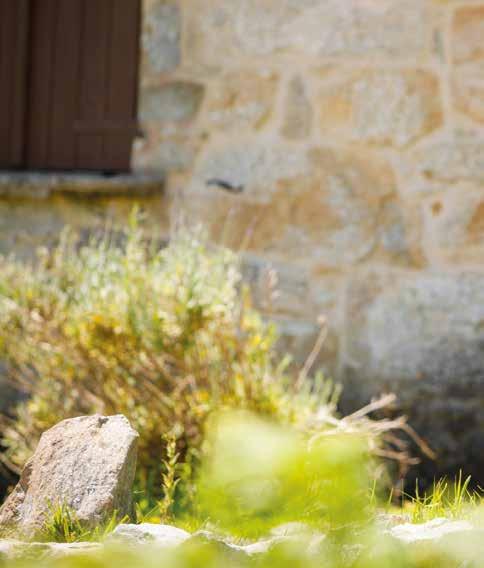
«El libro ha dado el salto a la pantalla y se ha convertido en la película más vista en España, Estados Unidos y otros noventa países de todo el mundo»
de necesidad –ya sea una guerra, una catástrofe natural o un desastre– de repente todo eso salta por los aires si lo que está en juego es que tus hijos coman o que encuentres un lugar caliente y seco para dormir. Entonces, por desgracia, la verdadera naturaleza competitiva y egoísta del ser humano sale a la luz. Sí, por supuesto que hay excepciones a esta regla, pero son eso, excepciones. En ese sentido soy bastante cínico y realista. Y, sí, de ese caldo de cultivo es de donde salen, en muchas ocasiones, las mejores historias, las que nos fascina, estremecen y cautivan. Somos así de complejos.
Un personaje como Roberto Lobeira, con esa curiosidad periodística y su pulsión por hacer lo correcto, en ese entorno… es echar gasolina a un incendio.
Es el peor tipo de persona posible para esa situación. Lobeira llega a una isla en la que dos familias, que se odian desde hace tanto que ya no recuerdan el motivo original de sus cuitas, están a punto de matarse. El sentido común más elemental debería decirle que se aparte lo más lejos posible de ese inminente choque de trenes, pero su curiosidad como periodista, su necesidad de responder a todas las preguntas que se le plantean y, sobre todo, su brújula moral, le acaban implicando en un juego peligroso y letal.
En su historia las decisiones tomadas tienen un precio. ¿Se puede tener la conciencia limpia cuando no hay una opción buena?
Es una pregunta muy difícil. Supongo que, si no hay opciones buenas y tienes que tomar una decisión, debes adoptar aquella que, siendo mala, al menos te permita dormir por la noche, cuando las voces resuenan en tu cabeza.

Since the dawn of time, hatred has always created great tragedies, as well as great stories. Is brutality lurking behind the varnish of civilization?
I argue that we are just a couple of showers and three or four hot meals away from barbarism. Civilization is that code of conduct that allows us to live in harmony without killing each other, that forces us to stop at a red light and not steal from our neighbours. But, as reality shows, in a moment of need—whether it’s a war, a natural catastrophe or a disaster—all of a sudden that blows up into the air if what’s at stake is for your kids to eat or find a hot, dry place to sleep. Then, unfortunately, the true competitive and selfish nature of human beings comes to light. Of course, there are exceptions to this rule, but that’s what they are: exceptions. In that regard, I am quite cynical and hard-headed. And, yes, that breeding ground is where many of the best stories come from, the ones that fascinate, shake and captivate us. We are that complex.
In that environment, a character like Roberto Lobeira, with his journalist inquisitiveness and his drive to do what’s right, is like adding fuel to the fire. It’s the worst possible type of person for that situation. Lobeira arrives on an island where two families, who have hated each other for so long that they no longer remember the root of their grievance, are about to kill each other. The most basic common sense should tell him to move as far as possible from that imminent train wreck, but his curiosity as a journalist, his need to answer all the questions he is asked and, above all, his moral compass, end up dragging him into a dangerous and lethal game.
«The book has been adapted to the screen and has become the most watched film in Spain, the United States and ninety other countries around the world»
En Apocalipsis Z también ponía a sus personajes en serios aprietos. ¿Le gusta explorar cómo se comportan los humanos llevados al límite? ¿Qué encuentra en esa zona?
Claro que me gusta. Creo que es en esas situaciones cuando los personajes dan todo lo que llevan dentro y, además, son el tipo de historias que nos fascinan porque, de manera inconsciente, nos preguntamos qué es lo que haríamos nosotros de vernos en un brete así.
Por otra parte, como narrador de historias, debe ser una gozada ver que se adaptan a la pantalla como ha sucedido con Apocalipsis Z.
Es un placer y un privilegio. Conseguir que un libro de un salto a la pequeña o gran pantalla es algo extraordinariamente difícil, que se consigue en contadas ocasiones y más si, como es el caso, va de la mano de una gran plataforma como Prime Video. Ahora que ya se ha estrenado, estoy feliz y emocionado, porque se ha convertido en la película más vista en España, Estados Unidos y otros noventa países de todo el mundo. Que una película española logre algo como eso ya es motivo más que de sobra para sentirse contento, pero…¡pronto habrá muchas más cosas!
In your story, decisions come at a price. Can you have a clean conscience when there are no good options?
It’s a very difficult question. I suppose, if there are no good options and you must make a decision, then you must make the one that, even if bad, at least helps you sleep at night, when the voices resonate in your head.

In Apocalipsis Z you also put your characters in serious trouble. Do you like exploring how humans behave when pushed to the limit? What do you find in that context?
I do like it. I think it’s in those situations when the characters show who they are. These are also the kind of stories that fascinate us because, unconsciously, we wonder what we would do if we were in such a predicament.
On the other hand, as a storyteller, it must be great to see that your stories adapt well to the screen as has been the case with Apocalipsis Z.
It’s a pleasure and a privilege. Getting a book adapted to the small or big screen is something extraordinarily difficult. This rarely happens especially, as is the case, hand in hand with a great platform like Prime Video. Now that it has been released, I am happy and excited, because it has become the most watched film in Spain, the United States and ninety other countries around the world. A Spanish film achieving something like that is already reason enough to feel happy, but there will be many more things coming soon!
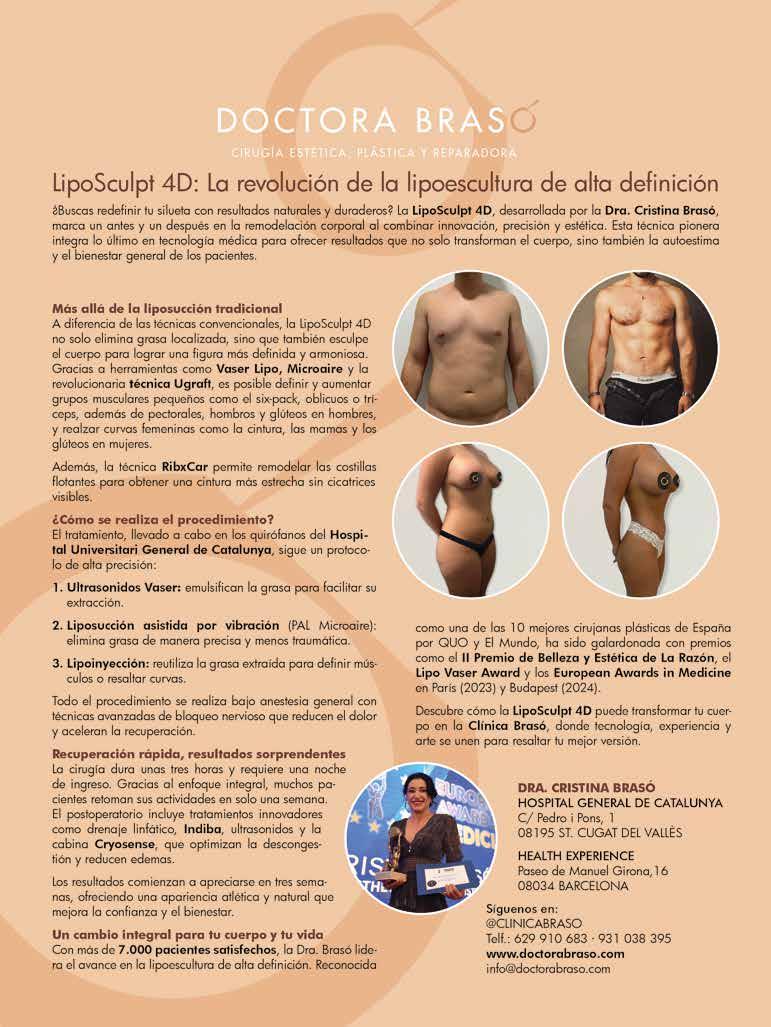


AÑOS DE LEYENDA DE QUIENES AMAN LA NOCHE MADRILEÑA
90 years of legend of those who love Madrid nightlife

La Gran Vía late con corazón propio, pero, sin duda, una de sus principales arterias está compuesta de un lugar con una historia fascinante y una reputación legendaria. Museo Chicote ha sido, es y será testigo de las noches madrileñas más recordadas.
The Gran Vía beats with its own heart, but, without a doubt, one of its main arteries is made up of a place with a fascinating history and a legendary reputation. Museo Chicote has been, is and will be witness to the most memorable Madrid nights.
TEXTO: Diego Álvarez / FOTOS: Museo Chicote
Adorar Madrid como el más ferviente gato no es complicado, pero son lugares como Museo Chicote los que hacen que visitarla lo convierta en una experiencia con nombre propio. Inaugurado en 1931 como Bar Chicote, por Pedro Chicote, ha sido testigo de las más sonadas fiestas de la capital, confidente de los rostros más conocidos de todos sus años de historia y escenario de innumerables anécdotas.
Considerada la primera coctelería de España, Museo Chicote ha sabido mantener el encanto de su historia, adaptándose a la evolución de la ciudad y los años, hasta convertirse en un punto de inspiración para muchos artistas y amantes de la buena música, además de, como no, de los mejores cócteles. Glamour, modernidad y encanto son las cualidades de este rincón que sigue latiendo con fuerza.
«No conocerás Madrid si no has estado en Chicote»
Una frase que se ha repetido a lo largo de sus más de 90 años de historia en la capital. Es un templo del cóctel y no solo en Madrid. Son tantos los famosos que se han dejado llevar por la atracción que su interior emana que en sus inicios no era extraño encontrarse con Bette Davis, Frank Sinatra, Rita Hayworth, Grace Kelly y hasta Lola Flores. Pero también las figuras más reconocidas de la actualidad como Javier Bardem, Alejandro Sanz, Alaska y Mario Vaquerizo o Iker Casillas.
Sus sofás, sus sillas de metal cromado tan de los 50 o ese halo tan glamuroso que sigue atrayendo a todas las generaciones han sido protagonistas de múltiples películas y series televisivas como Los abrazos rotos de Pedro Almodóvar, la serie Velvet o Arde Madrid de Paco León. El encanto de lo auténtico nunca fue, es y será tan perfecto.
Actualmente el local te atrapa a través de un estimulante juego de luces que cambia según el momento del día y una cabina donde el dj pincha sus temas musicales. Pero, no, Museo Chicote jamás abandonará la esencia que durante tantos años atrajo a los más ilustres personajes del cine, el teatro, la música y la literatura y que seguirá atrayendo a todo aquel que busque un lugar auténtico.
El legado del glamur y anécdotas de ensueño
No solo ha sido lugar de encuentro para las celebridades del «papel couché», sino también fuente de inspiración para múltiples artistas. Se dice que Agustín Lara, compositor mexicano, encontró entre estas paredes a la musa, escribiendo en aquí sus letras e incluso dedicándole alguna estrofa a Chicote. «Agasajo postinero con la crema de la intelectualidad local», decía el intérprete del fundador de la coctelería. Hasta Ernest Hemingway, declarado un fanático de la ciudad de Madrid, escribió allí sus crónicas de la Guerra Civil española.
Las divas más internacionales que por aquí pasaron es otro de los atractivos de Museo Chicote. Sofía Loren, una de las estrellas vivas más reconocidas de todas las épocas, también dejó su huella en el mítico local de la Gran Vía. Cuentan que fue el propio Chicote quien se negó a venderle una botella de su colección a la estrella, expandiéndose como la pólvora la noticia que se coló en toda la prensa internacional. Bien era conocido por todos, el celo que el maestro coctelero tenía por su colección. Loren, en compañía del actor Cary Grant, se encaprichó de una botella que representaba su belleza fielmente en el cristal y que el barman se negó a venderle.
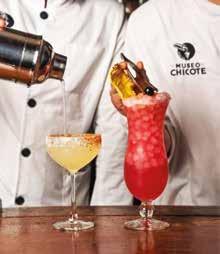
To adore Madrid like the most fervent cat is not complicated, but it is places like Museo Chicote that make visiting it an experience with its own name. Opened in 1931 as Bar Chicote, by Pedro Chicote, it has witnessed the most famous parties in the capital, confidant of the most famous faces of all its years of history and scene of countless anecdotes.
Considered the first cocktail bar in Spain, Museo Chicote has managed to maintain the charm of its history, adapting to the evolution of the city and the years, to become a point of inspiration for many artists and lovers of good music, as well as, of course, the best cocktails. Glamour, modernity and charm are the qualities of this corner that continues to beat strongly.


«You won't know Madrid if you haven't been to Chicote»
A phrase that has been repeated throughout its more than 90 years of history in the capital. It is a cocktail temple and not only in Madrid. So many celebrities have been carried away by the attraction that emanates from its interior that in its beginnings it was not unusual to meet Bette Davis, Frank Sinatra, Rita Hayworth, Grace Kelly and even Lola Flores. But also the most recognized figures of today such as Javier Bardem, Alejandro Sanz, Alaska and Mario Vaquerizo or Iker Casillas.
Its sofas, its chrome metal chairs so 50s or that glamorous halo that continues to attract all generations have been the protagonists of multiple films and television series such as Los abrazos rotos by Pedro Almodóvar, the series Velvet or Arde Madrid by Paco León. The charm of the authentic was never, is and will never be so perfect.
Today, the establishment captivates you with a stimulating play of lights that changes depending on the time of day and a booth where the DJ plays his music. But, no, Museo Chicote will never abandon the essence that for so many years attracted the most illustrious figures of cinema, theatre, music and literature and that will continue to attract anyone looking for an authentic place.
The legacy of glamour and dream anecdotes
It has not only been a meeting place for the celebrities of the "coffee press", but also a source of inspiration for many artists. It is said that Agustín Lara, a Mexican composer, found his muse within these walls, writing his lyrics here and even dedicating a verse to Chicote. "A postinero treat with the cream of the local intellectuality," said the interpreter of the founder of the cocktail bar. Even Ernest Hemingway, a declared fanatic of the city of Madrid, wrote his chronicles of the Spanish Civil War there.
The most international divas who passed through here are another of the attractions of Museo Chicote. Sofia Loren, one of the most famous living stars of all
time, also left her mark on the legendary Gran Vía bar. They say that it was Chicote himself who refused to sell a bottle from his collection to the star, and the news spread like wildfire and made its way into the international press. Everyone knew the master cocktail maker's zeal for his collection. Loren, accompanied by actor Cary Grant, fell in love with a bottle that faithfully represented her beauty in the glass and that the bartender refused to sell to her.
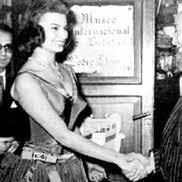


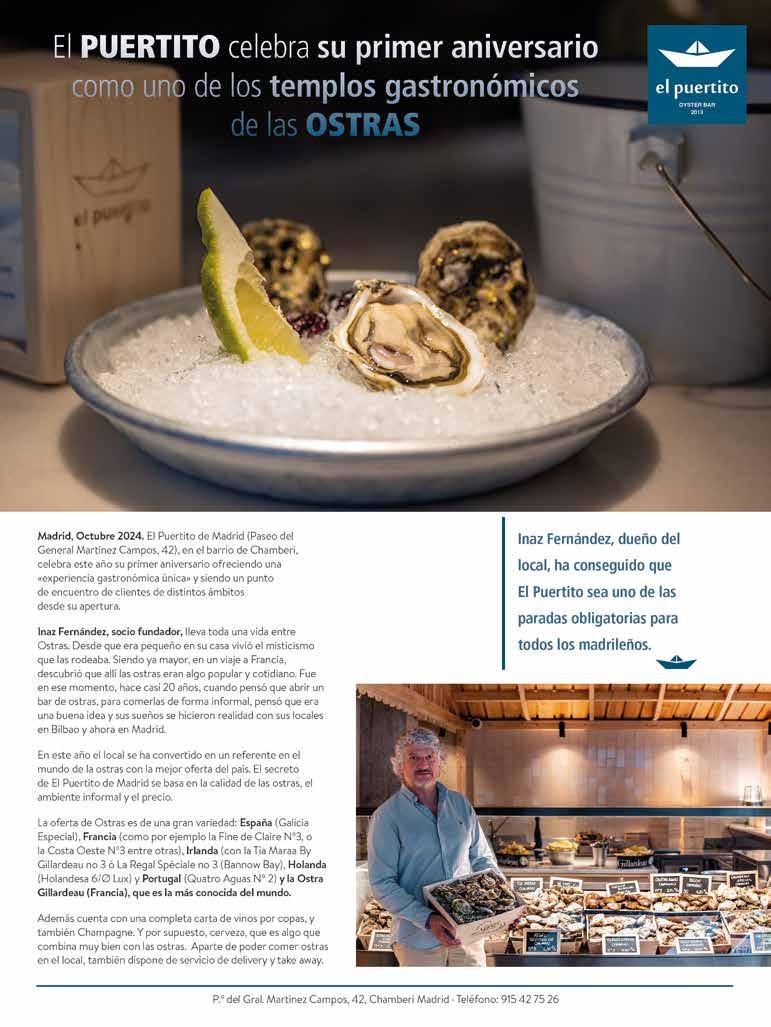
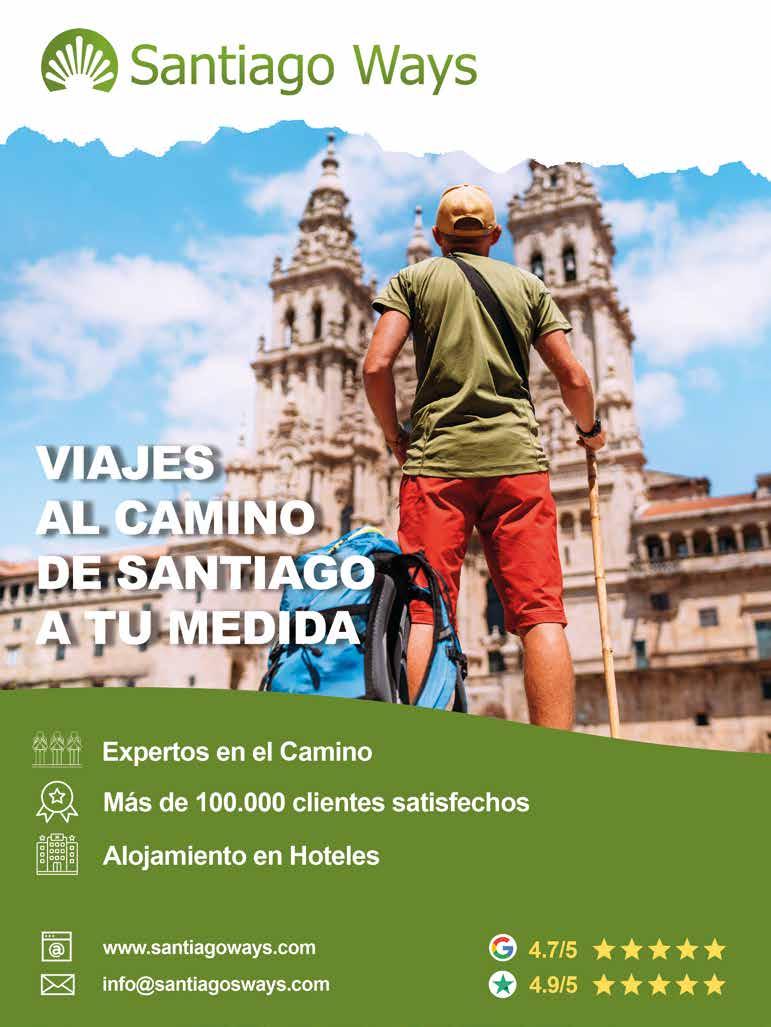

THE SCOURGE OF 16TH-CENTURY SPAIN
En pleno conflicto entre las Coronas de Inglaterra y España, a finales del siglo XVI, Francis Drake cosechó fama y fortuna con sus incursiones. Apoyado por la monarca inglesa, Isabel I, causó estragos en el Imperio español y, como Magallanes, incluso llegó a circunnavegar el planeta.
Héroe para unos y villano para otros, Francis Drake era considerado por los ingleses un vicealmirante ejemplar. Isabel I lo nombró sir en el barco que capitaneó durante años: el Golden Hind. Sin embargo, el nombre del Dragón de los Mares, como lo conocían los españoles, despierta aciagos recuerdos en las poblaciones costeras que otrora fueron víctimas de sus saqueos.
Los inicios de este famoso corsario presagiaban una gran carrera como marinero y comerciante y pronto empezó a dedicarse, junto con John Hawkins, al comercio de esclavos y al pillaje. A principios de 1568, en San Juan de Ulúa, una flota escolta española les tendió una trampa para recuperar las riquezas que los ingleses habían robado. La derrota marcó la vida de Drake. Desde ese momento se dedicó a atacar y saquear puertos y navíos de la Corona española. La venganza personal se tornó en algo más comercial cuando la monarca inglesa empezó a patrocinar sus expediciones e incursiones sin reconocerlo de forma oficial. Era una práctica común pese a haber firmado una tregua temporal con el rey español, Felipe II, ya que Inglaterra quería romper con la hegemonía de España hasta el momento en el comercio entre en Nuevo Mundo y el Viejo Continente.
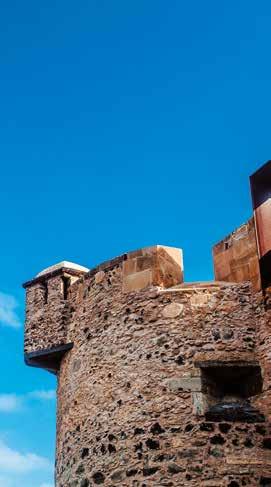


El éxito en sus expediciones le brindó la oportunidad de completar la circunnavegación, entre el 13 de diciembre de 1577 y el 26 de septiembre de 1580. Partió de Plymouth, a bordo del Pelican, con otros cuatro barcos y 164 hombres. A la flota se sumó un buque portugués, por contar su capitán con vasta experiencia en aguas del continente sudamericano, pero por distintas adversidades y un motín el Pelican terminó la travesía en solitario. El amotinado fue ahorcado en la Patagonia, en el mismo lugar donde Magallanes hiciera lo propio cincuenta años antes.
El Pelican pasó a ser el Golden Hind cuando alcanzaron aguas más pacíficas. Y aquí comienzan las verdaderas fechorías del corsario inglés, ya que los galeones españoles del Pacífico no estaban preparados para ataques piratas, más interesados en el océano Atlántico. Las pérdidas fueron enormes porque consiguió hacerse con las cartas de rutas que los galeones españoles seguían para cruzar el Pacífico. Su mayor captura fue el galeón Nuestra Señora de la Concepción, cargado con 13 cofres de chapa, 36 kilos de oro, miles de piedras preciosas y 26 toneladas de plata. Continuaron navegando y llegaron a las Indias Orientales. Allá siguieron saqueando y, tras un pequeño susto, el resto del camino de vuelta trascurrió sin incidentes. Los 104 supervivientes que arribaron eran ricos de por vida.
At the height of the ongoing conflict between the English and Spanish crowns at the end of the 16th century, Francis Drake earned fame and fortune with his incursions. Supported by the English monarch, Queen Elizabeth I, he wreaked havoc on the Spanish Empire and even circumnavigated the globe like Magellan.
Considered a hero by some and a villain by others, Francis Drake was regarded as an exemplary vice admiral by the English. Elizabeth I knighted him aboard the ship he captained for years: the Golden Hind. However, the sobriquet Dragon of the Seas, given to him by the Spanish, brings back terrible memories in the coastal towns that were once plundered by him.
The beginnings of this famous privateer predicted a great career as a sailor and merchant. He soon began to devote himself, along with John Hawkins, to the slave trade and to pillaging. In early 1568, a Spanish escort fleet set them a trap in San Juan de Ulúa to reclaim the wealth that the English had stolen. This defeat left a scar on Drake’s life.
From that moment on, he applied himself to attacking and plundering ports and ships belonging to the Spanish crown. His personal vendetta became more commercial once the English monarch began sponsoring his expeditions and forays without officially recognising it. It was common practice despite having signed a temporary truce with King Philip II of Spain, as England wanted to end the Spanish hegemony in the trade routes between the New World and the Old World at that time.
Thanks to his successful expeditions he was able to circumnavigate the globe between 13 December 1577 and 26 September 1580. He set sail from Plymouth aboard the Pelican with four other ships and 164 men. A Portuguese merchant ship also joined his fleet because its captain had broad experience sailing South American waters. However, after many setbacks and a mutiny, the Pelican completed the voyage alone. The mutineer was hanged in Patagonia, in the very place where Magellan did the same fifty years earlier.
The Pelican became the Golden Hind when they reached more peaceful waters. This is when the English privateer’s real misdeeds started because the Spanish galleons in the Pacific were not prepared for pirate attacks, as they were more focused on the Atlantic Ocean. The Spanish ships suffered huge losses because he managed to get hold of the route charts that they used to cross the Pacific. His biggest prize was capturing the Nuestra Señora de la Concepción galleon, which was loaded with 13 chests of coins, 80 pounds of gold, thousands of gemstones and 26 tons of silver. After this, they contin-
Durante la contienda, que se extendió entre 1585 y 1604, el inglés continuó atacando puertos y asentamientos españoles a ambos lados del Atlántico, Cartagena de Indias, Vigo y Pontevedra, entre otros. Causó estragos en Vigo en más de una ocasión, ya que fondeaba en las islas Cíes, que se convirtieron en su base de operaciones. Muchas islas de la costa gallega fueron abandonadas por temor a más ataques.
Cádiz también sufrió la firma del pirata inglés en 1587. Ahí se preparaba la Armada Invencible para atacar y capturar la isla de Gran Bretaña cuando el corsario saqueó la ciudad. Consiguió retrasar el ataque español durante más de un año al destruir alrededor de una treintena de naves de una flota que no estaba preparada para la batalla.
La última expedición de Drake fue a las Indias. Partió en septiembre de 1595 e hizo escala en Las Palmas por falta de provisiones. Creyó que conseguiría una victoria fácil, pero nada más lejos de la realidad. Los españoles, en su mayoría civiles, defendieron la ciudad y repelieron el ataque, haciendo que los ingleses sufrieran grandes pérdidas y obligándolos a retirarse. Pocos meses después, el temible Francis Drake murió por disentería en las costas de Panamá. Se llevó a la tumba el odio visceral que sentía por los españoles, que lo acompañó hasta su último aliento.
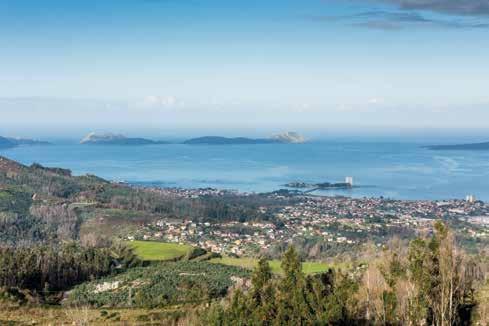
ued sailing and arrived in the East Indies. Once there, they carried on looting, and, after a small scare, the rest of the journey back home passed off without incident. The 104 surviving crew members were set for life.
During the war, which took place between 1585 and 1604, the Englishman continued to attack Spanish ports and settlements on both sides of the Atlantic: Cartagena de Indias, Vigo and Pontevedra, among others. He wreaked havoc in Vigo on more than one occasion, as he was anchored in the Cíes Islands, which became his base of operations. Many islands on the Galician coast were abandoned for fear of further attacks.
Cádiz also suffered the signature attack by the English pirate in
1587. The Invincible Armada was preparing to attack and capture the island of Great Britain there when the privateer plundered the city. He managed to delay the Spanish attack for more than a year by destroying around thirty ships from a fleet that was not prepared for battle.
Drake’s last expedition was to the Indies. He set off in September 1595 and stopped over in Las Palmas because he was running low on provisions. He believed it would be an easy victory, but nothing was further from reality. The Spanish, mostly civilians, defended the city and repelled the attack, causing the English to suffer heavy losses and forcing them to retreat. A few months later, the fearsome Francis Drake died of dysentery off the coast of Panama. He took to the grave the visceral hatred he felt for the Spaniards, which accompanied him until his last breath.



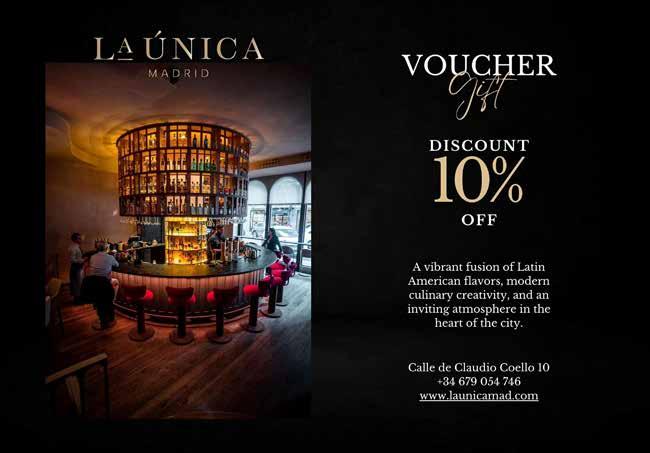

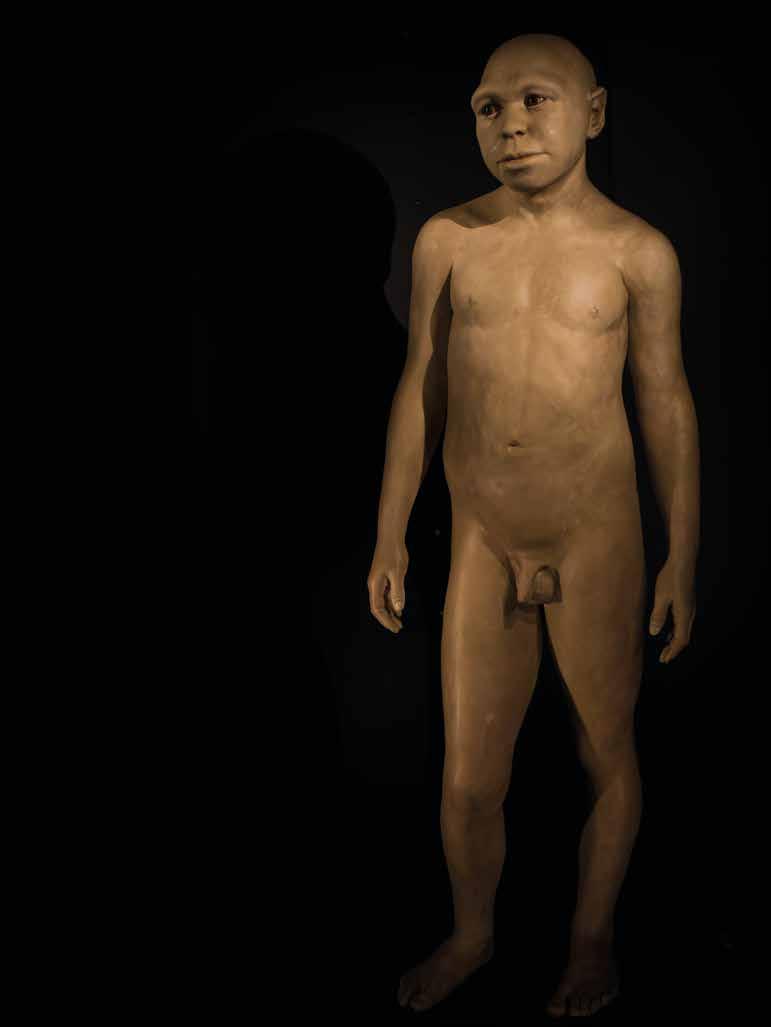

BIRTHDAY IN THE CRADLE OF HUMANKIND
TEXTO: Luis Tejedor / FOTOS: Susana Santamaría / Fundación Atapuerca
UNA CARAMBOLA DEL DESTINO HA QUERIDO QUE EN 2024 SE CUMPLAN LOS CINCUENTA AÑOS DEL DESCUBRIMIENTO DE LUCY EN ETIOPÍA Y LOS TREINTA DE HOMO ANTECESSOR EN LA SIERRA DE ATAPUERCA. AMBOS HALLAZGOS HAN CAMBIADO LA HISTORIA DE LA EVOLUCIÓN HUMANA. HOY SE SABE QUE LUCY NO FUE REALMENTE EL PRIMER HOMÍNIDO. ES MÁS, NUESTROS ANCESTROS LLEVAN CAMPANDO POR EL PLANETA DESDE HACE MÁS DE SIETE MILLONES DE AÑOS. Y POCOS PODÍAN IMAGINAR QUE UN HOMÍNIDO DE LA PENÍNSULA IBÉRICA TUVIERA EL HONOR DE FORMAR PARTE DEL ORIGEN DE LA HUMANIDAD.
Cuando se descubrió un amasijo de huesos con más de tres millones de años, sonaba en una casete la canción de los Beatles, «Lucy in the sky with diamonds». En ese instante, el nombre brotó como una inspiración. Y desde aquel 24 de noviembre de 1974, el increíble cuerpecito de Australopithecus afarensis, encontrado en la región etíope de Afar, se convirtió en nuestra pequeña Lucy, la «madre de la humanidad».
Algo similar sucedió en una pequeña localidad burgalesa hace treinta años. El sobrecogedor yacimiento de Atapuerca, reconocido por la UNESCO como Patrimonio de la Humanidad, atraviesa una antigua trinchera de ferrocarril del siglo XIX. Apelotonadas en racimos, las encinas se asoman al pasillo ferroviario y el monte bajo desprende un juvenil aroma a espliego y tomillo. El paisaje es magnífico.
BY A STROKE OF SERENDIPITY, THE YEAR 2024 MARKS 50 YEARS SINCE THE DISCOVERY OF LUCY IN ETHIOPIA AND 30 YEARS SINCE HOMO ANTECESSOR WAS FOUND IN THE SIERRA DE ATAPUERCA. BOTH DISCOVERIES HAVE REWRITTEN THE HISTORY OF HUMAN EVOLUTION. WE NOW KNOW THAT LUCY WAS NOT REALLY THE FIRST HOMINID. WHAT’S MORE, OUR ANCESTORS HAVE BEEN AROUND THE PLANET FOR MORE THAN SEVEN MILLION YEARS. FEW COULD HAVE IMAGINED THAT A HOMINID FROM THE IBERIAN PENINSULA HAD THE HONOUR OF BEING PART OF THE ORIGIN OF HUMANKIND.
When a jumble of bones dating back three million years was discovered, the Beatles song “Lucy in the sky with diamonds” was playing on a tape recorder. At that very moment, the name came up as a revelation. On that day, 24 November 1974, the astounding Australopithecus afarensis skeleton that was found in the Afar region of Ethiopia became our little Lucy, the “mother of humanity”.
Something similar happened in a small town in Burgos thirty years ago. The breathtaking site of Atapuerca, recognised by UNESCO as a World Heritage Site, sits in an old railway rock cutting from the 19th century. A clump of holm oaks overlooks the railway corridor, and the undergrowth gives off the fresh fragrance of lavender and thyme. The landscape is magnificent.
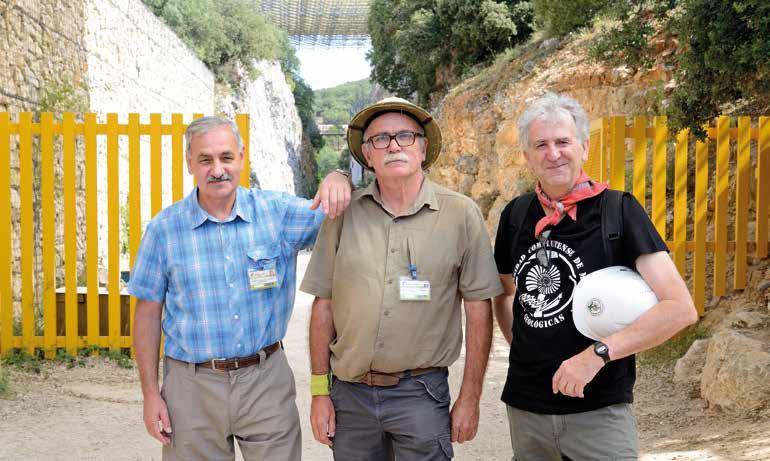
El 8 de julio de 1994 lucía un sol temprano. En la trinchera de Atapuerca se oían los golpes secos del martillo sobre los cinceles. Un equipo de científicos arrancaba a la roca sus vivencias cuando un grito rompió el silencio. Acababan de encontrar un diente; pero no un diente más del sedimento; era un diente nunca visto con anterioridad. Enseguida se dieron cuenta de que estaban ante algo muy grande.
El insólito hallazgo, descubierto en uno de los yacimientos del complejo de Atapuerca: la Gran Dolina, permitió introducir una nueva especie en el árbol de la humanidad. Cambió también la edad en la que se estimó la primera colonización del continente europeo, situándola en unos ochocientos mil años —unos doscientos mil antes a lo que se pensaba–. Y sobre todo, concedió un puesto estelar al yacimiento burgalés, al convertirlo en la cuna de una nueva especie: Homo antecessor, bautizada

El sobrecogedor yacimiento de Atapuerca está reconocido por la UNESCO como Patrimonio de la Humanidad
The breathtaking site of Atapuerca has been recognised as a World Heritage Site by UNESCO
On 8 July 1994 the sun rose early. In the site of Atapuerca, the banging of the hammers on the chisels was continuous.
A team of scientists were extracting the stories from the rock when a voice pierced the silence. Someone had found a tooth. This wasn’t, however, any old tooth in the sediment. It had never been seen before. They soon realised that they were on to something huge.
The unprecedented discovery made in one of the excavation sites of Atapuerca, the Gran Dolina cave, introduced a new species into the human family tree. It also changed the estimated date of the earliest human presence in the European continent, establishing it at about 800,000 years ago— around 200,000 years earlier than previously thought. Most importantly, it granted the Bur-
Museo de la Evolución Humana. Paseo Sierra de Atapuerca, 2 Burgos. No requiere reserva previa
Visita a los Yacimientos de la Sierra de Atapuerca y el Centro de Arqueología Experimental (CAREX). Es necesario reserva previa.
Teléfono de información y reservas: (+34) 947 421 000.
Correo electrónico: reservas@museoevolucionhumana.com y reservasatapuerca@fundacionatapuerca.es.
Más información: www.museoevolucionhumana.com www.fundacionatapuerca.es

Museum of Human Evolution.
Paseo Sierra de Atapuerca, 2. Burgos. No prior booking required.
Visit to the Sierra de Atapuerca sites and the Experimental Archaeology Centre (CAREX)
Prior booking required.
Information and bookings: (+34) 947 421 000.
Email: reservas@museoevolucionhumana.com reservasatapuerca@fundacionatapuerca. es.
More information: www.museoevolucionhumana.com www.fundacionatapuerca.es
por el paleoantropólogo José María Bermúdez de Castro, quien, junto con Eudald Carbonell, Juan Luis Arsuaga y el equipo de campo, lograron sacar a la luz un eslabón clave en el engranaje evolutivo de nuestra especie.
No tardó en llegar la bendición de la biblia de la ciencia. El manuscrito que proponía por qué los fósiles de la Gran Dolina debían ser catalogados como una nueva especie se envió a la revista Science. El artículo fue aceptado y publicado el 30 de mayo de 1997. La repercusión fue mundial y suscitó encendidos debates.
En 2020, el estudio de las proteínas más antiguas de fósiles humanos no hizo más que confirmar la hipótesis. En 2021 fue corroborado también por la revista Nature. En la actualidad, Homo antecessor de Atapuerca, nombre que en latín significa «hombre pionero, explorador», es ya un miembro de honor del linaje humano.
El descubrimiento de Homo antecessor permitió introducir una nueva especie en la filogenia de la humanidad

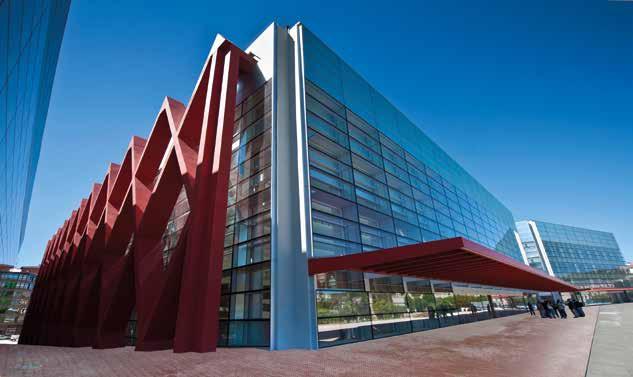
The discovery of Homo antecessor introduced a new species into the phylogeny of humankind
gos site a privileged position, turning it into the birthplace of a new species: Homo antecessor. It was named by palaeoanthropologist José María Bermúdez de Castro who, together with Eudald Carbonell, Juan Luis Arsuaga and the field team, managed to bring to light a key link in the evolution chain of our species.
Soon came the blessing from the bible of science. A paper explaining why the Gran Dolina fossils ought to be catalogued as a new species was submitted to the journal Science. It was accepted and published on 30 May 1997. The impact was global and sparked heated debates.
In 2020, an analysis on ancient protein from human fossils only confirmed the hypothesis. It was also supported by the journal Nature in 2021. Today, Homo antecessor of Atapuerca, which means pioneer man or explorer in Latin, is already an honorary member of the human lineage.
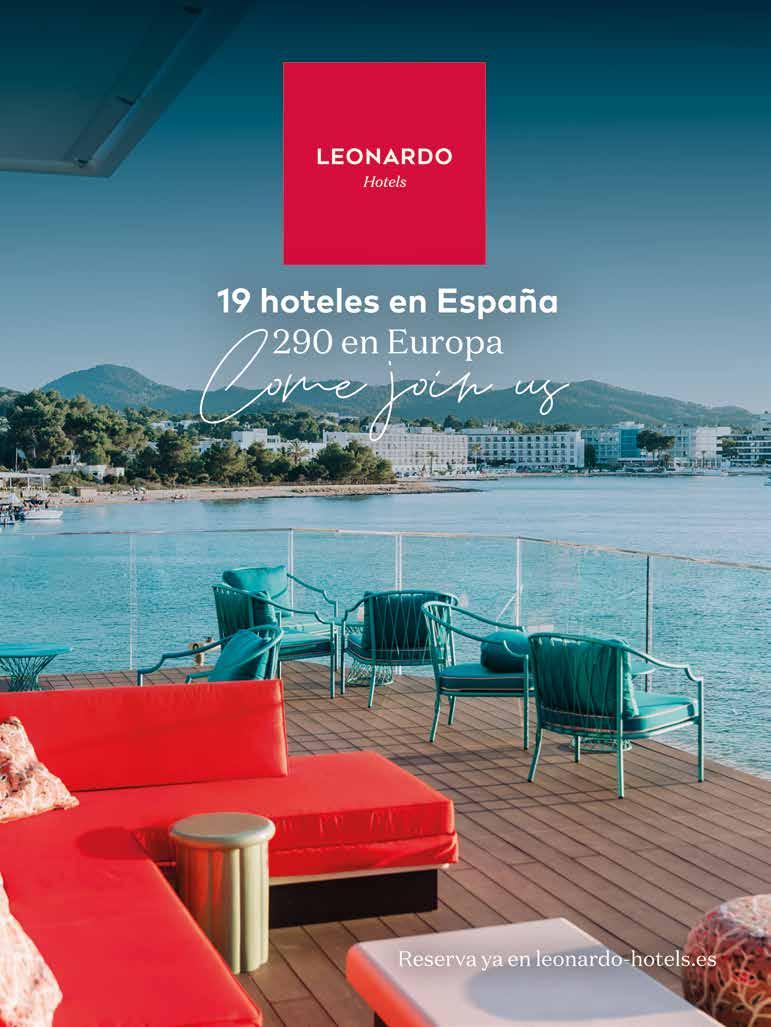


SERIE LIMITADA PARA CONMEMORAR
EL 40º ANIVERSARIO DE PORSCHE IBÉRICA
LIMITED SERIES TO COMMEMORATE THE 40TH ANNIVERSARY OF PORSCHE IBÉRICA
Recientemente fue presentado el 911 Cuarenta Edition en el evento del 40º aniversario de Porsche Ibérica. La creación de esta serie especial del 911 reunió en Zuffenhausen a expertos del mercado de Porsche Ibérica, Style Porsche y el equipo Sonderwunsch. El modelo incorpora una combinación única de colores y acabados exteriores e interiores, así como logotipos exclusivos inspirados en la historia y cultura ibéricas.
En 1984, Porsche dejó de estar re-
It has been presented, the 911 Cuarenta Edition was unveiled during the event celebrating the 40th anniversary of Porsche Ibérica. The creation of this special 911 series brought together experts from the Porsche Ibérica market, Style Porsche, and the Sonderwunsch team in Zuffenhausen. The model features a unique combination of exterior and interior colors and finishes, along with exclusive logos inspired by Iberian history and culture.
In 1984, Porsche ceased being represented in Spain by an importer and established its subsidiary, initially named Porsche España, S.A. This


cialmente llamada Porsche España, S.A. Este hito no solo refleja la fuerte conexión de la marca con sus seguidores en la península ibérica, sino que supone el punto de partida de un nuevo capítulo en la historia de la compañía en este territorio.
Para conmemorar estas cuatro décadas y como tributo a los clientes que han sido parte esencial en ellas, Porsche presenta una edición exclusiva y altamente personalizada del icónico 911. Limitada a solo 40 unidades, esta serie especial destaca por su cuidado y elegante diseño, así como por la exclusividad, que definen el lujo contemporáneo de Porsche. Con colores, materiales y acabados meticulosamente seleccionados, cada vehículo de esta colección es una obra de arte en movimiento que Porsche Ibérica ha configurado para hacer realidad los sueños de ese pequeño grupo de futuros propietarios.

«La llegada a España y Portugal de Porsche como filial, tomando el relevo del importador que había
en aquel momento, supuso un punto de inflexión para la marca», comenta Tomás Villén, Director General de Porsche Ibérica. «Nos sentimos muy orgullosos del trabajo realizado durante estos cuarenta años y qué mejor forma de celebrarlo que tener una versión exclusiva para nuestro mercado del icono de la compañía, el nueveonce. En Porsche Ibérica nos quedaremos con una de las 40 unidades, que utilizaremos y conservaremos como una joya para exhibir nuestro legado», enfatiza.

milestone not only reflects the brand’s strong connection with its followers in the Iberian Peninsula but also marked the beginning of a new chapter in the company’s history in the region.
To commemorate these four decades and as a tribute to the customers who have been an essential part of this journey, Porsche is introducing an exclusive, highly customized edition of the iconic 911. Limited to just 40 units, this special series stands out for its refined and elegant design, as well as the exclusivity that defines Porsche’s contemporary luxury. With meticulously selected colors, materials, and finishes, each vehicle in this collection is a masterpiece in motion, crafted by Porsche Ibérica to fulfill the dreams of a select group of future owners.

“The establishment of Porsche as a subsidiary in Spain and Portugal, taking over from the importer at the time, was a turning point for the brand,” remarked Tomás Villén, General Director of Porsche Ibérica. “We are extremely proud of the work accomplished over these forty years, and what better way to celebrate than with an exclusive version of the company’s icon, the 911. At Porsche Ibérica, we will keep one of the 40 units, which we will use and preserve as a gem to showcase our legacy,” he emphasized.
BACKGROUND AND DEVELOPMENT OF THE 911 CUARENTA EDITION
“The idea behind the Cuarenta Edition was to create a 911 that a Spanish or Portuguese customer might have ordered 40 years ago, which would still be fashionable and desirable today,” explains Alexander Fabig, Vice President of Individualization and Classic Cars at Porsche. “In this Sonderwunsch project, collaboration with our Spanish and Portuguese colleagues was highly creative. We
«La idea que teníamos para el Cuarenta Edition era crear un 911 como el que hubiera pedido un cliente español o portugués hace 40 años y que todavía estuviera de moda y fuera deseable hoy», explica Alexander Fabig, Vicepresidente de Individualización y Clásicos de Porsche. «En este proyecto de Sonderwunsch, la colaboración con nuestros colegas españoles y portugueses fue muy creativa. Aprendimos mucho sobre la cultura y tradición de estos países,
así como de anécdotas del primer periodo de Porsche Ibérica en los años 80», añade el ejecutivo.
Además de otras acciones que se van a realizar a lo largo de este año, Porsche Ibérica quería crear una versión especial basada en el icónico 911 que recordara su fase fundacional. Porsche Ibérica recurrió al programa Sonderwunsch para iniciar el proceso de creación junto con los especialistas de este departamento, que lleva la individualización, la atención al detalle y la artesanía a un nivel superior. El resultado es la integración de elementos de diseño individuales
que van mucho más allá del catálogo existente para el 911.
Un equipo viajó a la sede de Porsche en Zuffenhausen para crear juntos los detalles de esta serie limitada. Todo el proceso se llevó a cabo antes del lanzamiento de la nueva evolución del 911. La versión base elegida fue el nuevo Carrera GTS Coupé. El estilo deportivo atemporal y la sofisticación técnica del 911 GTS se perfeccionaron con detalles seleccionados del programa Sonderwunsch para crear un concepto hecho a medida para los clientes españoles y portugueses.

learned a lot about the culture and traditions of these countries, as well as anecdotes from the early days of Porsche Ibérica in the 1980s,” adds the executive.
In addition to other initiatives planned for this year, Porsche Ibérica wanted to create a special version of the iconic 911 to pay homage to its founding phase. Porsche Ibérica turned to the Sonderwunsch program to initiate the creation process alongside the specialists from this department, which takes individualization, attention to detail, and craftsmanship to the next level. The result is the integration of
unique design elements that go far beyond the existing catalog for the 911.
A team traveled to Porsche’s headquarters in Zuffenhausen to collaboratively design the details of this limited series. The entire process was completed before the launch of the new evolution of the 911. The base model chosen was the new Carrera GTS Coupé. The timeless sporty style and technical sophistication of the 911 GTS were enhanced with carefully selected details from the Sonderwunsch program to create a tailor-made concept for Spanish and Portuguese customers.


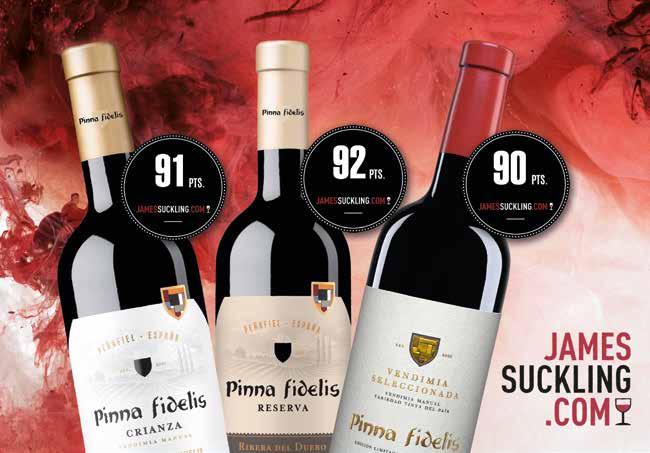



THANK YOU VOLUNTEERS!
El pasado 15 de diciembre, Air Nostrum cumplió treinta años desde que levantó el vuelo por primera vez. Desde entonces, nuestra pasión por volar continúa intacta. El 15 de diciembre de 1994, despegó del aeropuerto de Valencia con destino a Bilbao el vuelo YW 251, con dieciséis pasajeros a bordo. Fue la primera de las casi dos millones y medio de operaciones que hemos logrado poner en el aire. Tres décadas después de aquel día, estamos muy orgullosos de que más de ciento siete millones de pasajeros hayan depositado su confianza en nosotros.
Sin embargo, esta efeméride ha quedado oscurecida por la catástrofe acontecida en la provincia de Valencia y Albacete con la Dana del 29 de octubre. Las instalaciones de la compañía no se salvaron de los daños de las inundaciones, aunque la repercusión en nuestra operativa fue prácticamente inapreciable para los pasajeros de nuestros aviones. No obstante, el compromiso social y sentimiento de pertenencia nos hizo dejar de lado todas las celebraciones que habíamos preparado, para centrarnos en ayudar a los afectados –algunos de nuestros compañeros también se vieron perjudicados– y rendir un sentido homenaje a las víctimas y a las decenas de miles de personas que se han volcado como voluntarios en ayudar a los más de 200.000 afectados por la catástrofe.
Air Nostrum ha panelado uno de sus aviones –el CRJ1000 EC-MLO– como homenaje a los voluntarios. También la compañía ha querido dedicar su vídeo navideño a recordar a las víctimas y a agradecer a la gente y a todos los que trabajan –Ejército, Bomberos, Cuerpos y Fuerzas de Seguridad del Estado, etc.– su encomiable empeño en las labores de ayuda para volver a la normalidad lo antes posible. ¡Gracias voluntarios!
Tanto el avión como el vídeo fueron presentados el pasado 13 de diciembre a los empleados de Air Nostrum en el encuentro navideño que todos los años realizamos en el hangar de la compañía del aeropuerto de Valencia. Un taller que se inundó de barro el pasado 29 de octubre y que, gracias al trabajo de la plantilla, que voluntariamente ofreció su ayuda, ahora vuelve a estar impoluto y listo para llevar adelante el mantenimiento de la flota de 46 aviones de Air Nostrum y la del resto de compañías que confían en ANEM para hacer la puesta a punto de sus aeronaves.
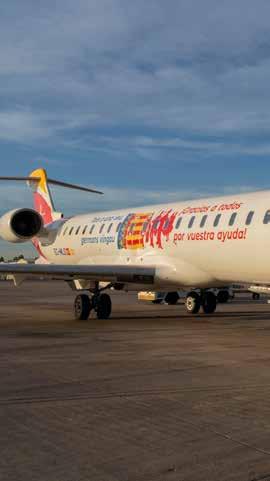
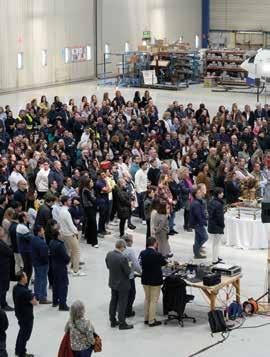


On 15 December 2024, Air Nostrum marked thirty years since it first took flight. From that moment on, our passion for flying has remained unchanged.
On 15 December 1994, flight YW251 took off from Valencia airport and landed in Bilbao with sixteen passengers on board. It was the first of almost two and a half million flights that we have operated. Three decades later, we are incredibly proud that more than 107 million passengers have placed their trust in us.
However, this occasion has been overshadowed by the catastrophic weather events that took place in the province of Valencia and Albacete on 29 October. Our airline’s facilities were not spared from flood damage, although the impact on our operation was virtually
unnoticeable for our passengers. However, our social commitment and sense of belonging made us put aside all the celebrations we had arranged and focus on helping those affected —some of our colleagues also suffered damages—and on paying a heartfelt tribute to the victims and to the tens of thousands of people who have volunteered to help the more than 200,000 disaster victims.
Air Nostrum has added new vinyl graphics to the livery of one of its aircraft (CRJ1000 EC-MLO) as a tribute to volunteers. Our airline also wanted to dedicate its Christmas video to remembering the victims and thanking the people and all those who are working— armed forces, firefighters, law enforcement officers, etc. —for their commendable effort in helping everyone to return to normal as soon as possible. Thank you volunteers!
Both the aircraft and the video were presented last 13 December to Air Nostrum employees at the annual Christmas get-together in the airline’s hangar at Valencia airport. Our workshop was flooded with mud on 29 October and, thanks to the work of the staff who voluntarily offered their help, it is now clean again and ready to carry out the maintenance of Air Nostrum’s 46-aircraft fleet and that of the rest of the companies that entrust ANEM with the servicing of their aircraft.

Moeve and Air Nostrum, pioneers in the use of sustainable fuel (SAF) at Melilla airport
AIR NOSTRUM CONTINÚA IMPULSANDO SU COMPROMISO CON LA DESCARBONIZACIÓN DEL SECTOR AÉREO, Y JUNTO A MOEVE HA PROMOVIDO UNA ACCIÓN DE USO DE COMBUSTIBLE SOSTENIBLE DE AVIACIÓN (SAF POR SUS SIGLAS EN INGLÉS) EN EL AEROPUERTO DE MELILLA. LA ENERGÉTICA Y LA AEROLÍNEA SE CONVIERTEN ASÍ EN LAS PRIMERAS COMPAÑÍAS EN IMPULSAR ESTE BIOCOMBUSTIBLE EN LA CIUDAD AUTÓNOMA.
Moeve ha suministrado un 30 % de SAF a todos los vuelos que parten desde este aeropuerto, todos ellos operados por Air Nostrum. De esta forma, los aviones que despegaron durante octubre y noviembre en el aeropuerto melillense han cargado en sus depósitos hasta quince veces más de la cantidad establecida por la normativa europea ‘ReFuelEU Aviation’ para 2025 (situada en al menos un 2 %). Por su parte, Exolum, operador de almacenamiento en el Aeropuerto de Melilla, ha garantizado la gestión del suministro, un componente
logístico esencial para asegurar que los combustibles sostenibles lleguen a las aerolíneas.
El SAF, producido por Moeve en su Parque Energético La Rábida (Huelva) a partir de aceites usados de cocina, es un biocombustible de segunda generación que puede reducir las emisiones de CO2 en hasta un 90 % durante todo su ciclo de vida, en comparación con el queroseno tradicional.
Marta Cencillo, responsable de Aviación Sostenible de Moeve, considera que «es un orgullo para nosotros ser la primera compañía en suministrar SAF en Melilla. Este nuevo hito refuerza nuestro com-
promiso con la descarbonización del sector aéreo, especialmente en territorios de difícil acceso desde la península como Melilla, donde las conexiones aéreas juegan un papel esencial. Este impulso es fundamental para que el SAF llegue a los distintos aeropuertos españoles. Como uno de los principales fabricantes y suministradores de este biocombustible en España, ya lo suministramos de forma permanente en los principales aeropuertos del país».
Por su parte, M.ª José Sanz Miguel, directora de Calidad, Medio Ambiente y Emergencias de Air Nostrum, ha resaltado que, en la compañía, «apostamos firmemente por el SAF como palanca de descarbonización del sector aeronáutico. Tanto es así que nuestro compromiso para 2030 es consumir el 10 % de este combustible sostenible, porcentaje que casi dobla el exigido por el mandato europeo de
‘ReFuelEU Aviation’. Y para seguir avanzando en el desarrollo de este compromiso, hemos elegido Melilla para llevar a cabo esta iniciativa ambiental, como muestra también de nuestra responsabilidad con los melillenses. Los aviones que han repostado en octubre y noviembre en el aeropuerto de Melilla cargan un 30 % de combustible de procedencia sostenible certificada, lo que reduce significativamente la huella de carbono de los mismos gracias al ahorro de emisiones que permite el SAF.
Air Nostrum, en su plan de la transición ecológica apuesta por el SAF como palanca de descarbonización, comprometiéndose a utilizar un 10 % de SAF en 2030, lo que casi dobla las exigencias del mandato europeo. Junto al aumento progresivo del consumo de SAF, el ahorro de combustible mediante algoritmos big data, inteligencia artificial y machine learning mejoran la eficiencia de las operaciones.
AIR NOSTRUM KEEPS ON DELIVERING IN ITS COMMITMENT TO DECARBONISING THE AIRLINE INDUSTRY. TOGETHER WITH MOEVE, IT HAS SUPPORTED A SUSTAINABLE AVIATION FUEL (SAF) ACTION AT MELILLA AIRPORT. THE ENERGY PROVIDER AND THE AIRLINE ARE THUS BECOMING THE FIRST COMPANIES TO PROMOTE THIS BIOFUEL IN THE AUTONOMOUS CITY.
Moeve has supplied 30 % of SAF to all flights departing from this airport, all operated by Air Nostrum. In this way, all the aircraft that took off from Melilla airport during October and November filled up their tanks with fifteen times more SAF than the target for 2025 set by the ReFuelEU Aviation European regulation (at least 2 %). In turn, Exolum, a fuel storage operator at Melilla airport, has ensured supply management, a key logistics step to ensure that sustainable fuels reach airlines.
The SAF, produced from used cooking oils by Moeve in its La Rábida facilities in Huelva, is a second-generation biofuel that can reduce CO2 emissions by up to 90 % throughout its life cycle compared to traditional jet fuel.
Spain. As one of the main SAF producers and suppliers in Spain, we already supply it permanently at the main airports of the country.”
Air Nostrum is promoting sustainability in Melilla by refuelling aircraft with 60,000 litres of SAF in the last quarter of 2024
According to Marta Cencillo, Head of Sustainable Aviation at Moeve, “it is a source of pride for us to be the first company to supply SAF in Melilla. This new milestone reinforces our commitment to the decarbonisation of the aviation industry, especially in regions like Melilla that are difficult to access from the peninsula, where flight connections play an essential role. This momentum is essential for getting SAF to airports across
Mª José Sanz Miguel, Director of the Quality, Environment and Emergencies department at Air Nostrum, stressed that they “firmly believe in SAF as a lever for decarbonising the aviation sector. So much so that our commitment for 2030 is to use 10 % of SAF, almost doubling the requirement set by the European ReFuelEU Aviation mandate. To advance with this commitment, we have chosen Melilla to implement this environmental initiative, also as a way of demonstrating our responsibility towards the people of Melilla. The aircraft that refuelled in October and November at Melilla airport carry 30% certified sustainable fuel, which significantly reduces their carbon footprint thanks to the emission savings enabled by SAF.”
Air Nostrum, under its green transition plan, is committed to use SAF as a decarbonisation lever, committing to use 10 % of this biofuel by 2030, almost doubling the requirements of the EU mandate. Along with the progressive increase in SAF consumption, fuel savings through big data algorithms, artificial intelligence and machine learning can improve the efficiency of operations.


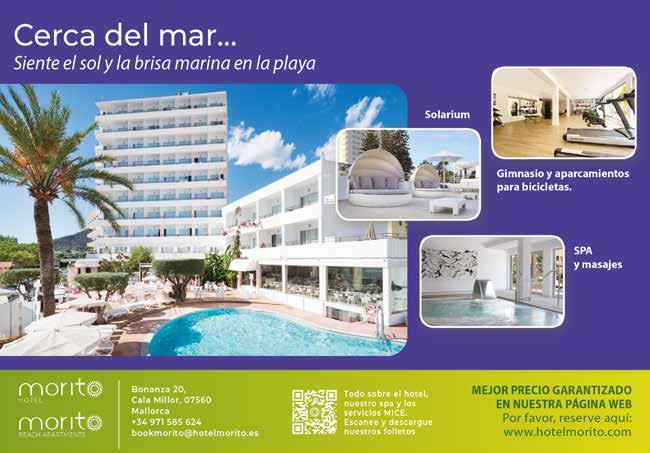
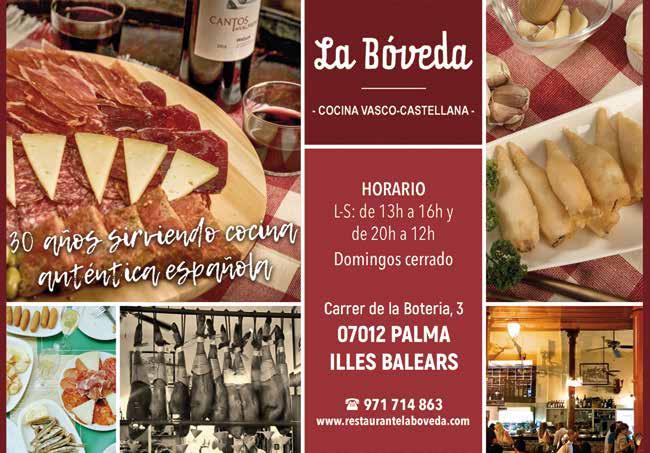
Air Nostrum opera cerca de 200 vuelos diarios con origen o destino a cerca de 50 aeropuertos en 7 países de Europa y el norte de África
Air Nostrum operates nearly 200 daily flights originating in or destined for nearly 50 airports in 7 countries in Europe and the north of Africa.
A CORUÑA
SANTIAGO DE COMPOSTELA
VIGO
OPORTO
NANTES
GRAN CANARIA
LISBOA
BADAJOZ
ASTURIAS
LEÓN
SANTANDER
BILBAO
BURDEOS
VALLADOLID LA RIOJA PAMPLONA
MADRID

VALENCIA
CASTELLÓN
SEVILLA
JEREZ
MÁLAGA
TÁNGER
GRANADA
ALMERÍA

ALICANTE IBIZA
LLEIDA


TOULOUSE
ANDORRA-LA SEU
BARCELONA





rutas nacionales / national routes
rutas internacionales / international routes
DÜSSELDORF
ESTRASBURGO FRANKFURT







GINEBRA LYON





CRJ 1000
Longitud / Overall lenght: 39,1 m
Envergadura / Wingspan: 26,1 m
Núm. de asientos / No. of seats: 100 Alcance / Range: 2.761 km



CRJ 200
Longitud / Overall lenght: 27 m
Envergadura / Wingspan: 21 m
Núm. de asientos / No. of seats: 50 Alcance / Range: 3 054 km




ATR 72-600
Longitud / Overall lenght: 27 m
Envergadura / Wingspan: 27 m
Núm. de asientos / No of seats: 72 Alcance / Range: 1 665 km



+info sobre reservas y destinos: Serviberia: 900.111.500 | www.iberia.com

CALVIN KLEIN
CK FREE
Eau de toilette. 50ml

Eau de toilette. 50 ml
CALVIN KLEIN
SHEER BEAUTY
Eau de toilette. 50ml

YVES SAINT LAURENT
YSL LIBRE
Eau de parfum. 30 ml


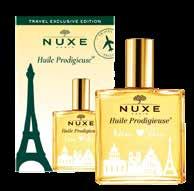
WHEREVER

Set de cuidado facial 5 en 1
Skin care travel set 5 in 1
ELIZABETH ARDEN
Trío de cápsulas de ceramida
Ceramide capsules trial 3x7caps
ELIZABETH ARDEN
Crema hidratante refinadora
Visible difference refining moisture cream complex. 100 ml



40,00€
CASIO
Reloj vintage
Vintage watch

LINDT
Bombones de chocolate con leche
Milk chocolate bonbons
6,00€*




5,00€*
Llavero solidario
Solidarity keyring*

8,00€*
Avión de peluche solidario
Solidarity soft toy plane*
* El total recaudado se destinará íntegramente a proyectos solidarios de Aviación Sin Fronteras. All proceeds will be donated to charity projects of Aviation Without Borders.
MÉTODOS DE PAGO
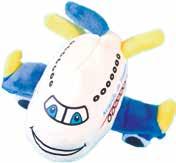
Solo se aceptarán pagos en euros (€) y el máximo permitido por tarjeta y/o cliente será de 150€. Para descargar su recibo, por favor, diríjase a la siguiente página web: www.airnostrumreceipts.com. Para cualquier información sobre su compra o devoluciones de productos, por favor contáctenos por correo electrónico a airnostrumshop@newrest.eu con una copia de su recibo. Tenga en cuenta que no podemos proporcionar devoluciones a bordo. Los productos de venta a bordo están disponibles solo en algunos vuelos. Por favor, pregunte a la tripulación de cabina qué productos están disponibles para la compra. Los productos de la carta pueden variar o ser sustituidos por otros, para más información consulte a la tripulación. Si ocasionalmente un producto de los que aparecen en la carta no se encontrara disponible a bordo, la tripulación le sugerirá un producto alternativo. Rogamos disculpe si puntualmente su elección no pudiera ser atendida. Las fotografías de esta carta muestran sugerencias de presentación.
METHODS OF PAYMENT
Only payments in Euros will be accepted and the limit per card and/or customer is €150. To download your receipt, please visit the following website: www.airnostrumreceipts.com. For any information about your purchase or product returns, please contact us via email at airnostrumshop@newrest.eu with a copy of your receipt. Please note that we cannot provide returns onboard. Shop on board products are only available on some flights. Please ask the cabin crew what products are available for purchase. The products in the on-board magazine may vary or be replaced by others. For more information, please check with the crew. If occasionally a product that appears in the magazine is not available on board, the crew will suggest an alternative product. We apologise if, on occasion, we are not able to provide you with your chosen product. The photographs in this brochure are serving suggestions.


muy rápido”
“Time flies when you’re flying”

Pérez es Tripulante de Cabina de Pasajeros (TCP), una de las azafatas más longevas de Air Nostrum, con veintidós años en la compañía. Tiene base en Madrid, pero se mueve por toda España y Europa. Rompe con el estereotipo de que la TCP es una persona joven y sin compromisos familiares que vive la vida al momento. En Air Nostrum, ha forjado una familia con tres hijos a los que puede ver crecer, haciendo muchos esfuerzos y sacrificios. Pero, para ella, «volar es algo que engancha» y ya lleva casi cinco lustros en la compañía porque «el tiempo, volando, pasa muy rápido».
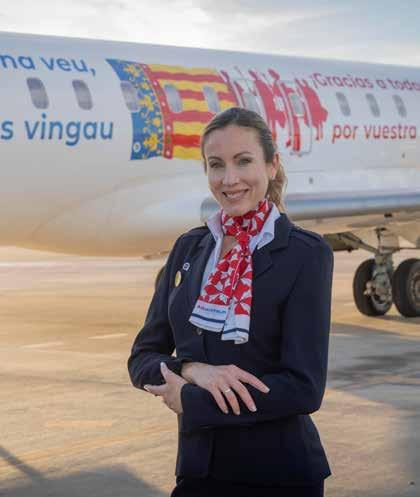
¿Ser TCP es una vocación o una profesión?
Sinceramente, en mi caso, comenzó como una aventura y, con el tiempo, se ha convertido en una profesión. Desde niña, me atraía todo lo relacionado con el mundo de la aviación y sí, jugué a las azafatas más de una vez.
¿Qué hace una TCP, además de lo que ya ve todo el mundo, cuando sube a un avión?
Pues… un montón de cosas. Tenemos que comprobar que está todo bien, el material de emergencia, la venta a bordo y el catering para business. También hacemos un briefing entre la tripulación para
Ana Pérez is one of Air Nostrum’s most seasoned cabin crew members after twenty-two years working at the airline. Based in Madrid, she travels across Spain and Europe. She is breaking down the stereotype that flight attendants are young people with no family commitments who live life in the moment. While at Air Nostrum, she is watching her three children grow up, making huge efforts and sacrifices. In her words, “you get hooked on flying”. She has been in the company for almost a quarter of a century because “time flies when you’re flying”.
Is being a cabin crew member a vocation or a profession?
I must admit that in my case it all started as an adventure and became my profession over time. I found everything related to the world of aviation fascinating as a child and yes, I played flight attendant more than once.
What does the cabin crew do when getting on the plane, besides what everyone already sees?
Well, we do lots of things. We must check that everything is in order: the emergency equipment, the inflight shop, the catering for business class, etc. We also do a crew briefing to go over emergency and standard operating procedures and the documentation. We basically check that everything is in place to board passengers and ensure the safest flight.
What is your relationship with the passengers like? What principles is it based on?
I like being friendly and empathetic with passengers. I always put myself in their place and try to understand them. Each passenger gets on the plane feeling differently and travels for various reasons. They don’t always arrive in a good mood, but we try to make them leave with a smile or feeling better at least; I want them to enjoy the experience
repasar procedimientos de emergencia, de la operativa normal y la documentación. En conclusión, revisar que esté todo en orden para embarcar y hacer el vuelo con la máxima seguridad.
¿Cómo es su relación con el pasajero? ¿En qué principios se basa?
Me gusta tener un trato cercano y empatía con los pasajeros. Siempre me pongo en su lugar e intento comprenderles. Cada pasajero sube al avión de una manera y viaja por diferentes motivos. No siempre llega de buen humor, pero intentamos que se vaya con una sonrisa o, al menos, con mejor cara; que tenga una buena experiencia y quiera repetir. Se basa en eso, en tratarle como se merece, con respeto y gratitud, ya que es el cliente por y para el que trabajamos todos, por eso es lo más importante. En conclusión, nos enfocamos en el principio de la excelencia, que es uno de los pilares de esta compañía.
Cuéntenos un poco su trayectoria profesional…
Cuando acabé de estudiar la licenciatura de Historia del Arte trabajé de azafata de imagen y de promoción, también de modelo de fotografía. Por otro lado, estuve de prácticas en una galería de arte y en una casa de subastas, pero ninguno de esos trabajos me entusiasmó. Saqué el Curso de Aptitud pedagógica para enseñar Geografía e Historia en Secundaria y, después, me puse a buscar trabajo. Un día, en un periódico, vi un anuncio de Air Nostrum buscando tripulantes de cabina de pasajeros (TCP), me presenté y hasta ahora.
so that they want to fly again. So, it’s based on that, on treating them as they deserve, with respect and gratitude, because we are working for them, that’s why they are the most important part. We focus on the principle of excellence, which is one of the airline’s pillars.
Tell us a little about your professional career.
After getting an Art History degree, I worked as an event and brand hostess, as well as a photography model. I also did an internship at an art gallery and an auction house, but none of those jobs excited me. I took the teaching certificate course to teach Geography and History in secondary schools and started looking for work. One day, I saw a newspaper ad from Air Nostrum looking for cabin crew. I applied and have been working here ever since.
When did you start working at Air Nostrum?
The exact date was 21 January 2003. It was a long time ago, even though it feels like yesterday. In fact, I think the saying “time flies” comes from this: when you’re flying, time flies very fast indeed.
You’re breaking down many stereotypes. You have been in the company for twenty-two years. That’s a long time, considering that it’s always said that this is a profession for young people. I thought that too when I started. I didn’t expect to last more than two years but I’m still here surprisingly. I was offered a permanent contract after two years. I was very excited because that’s the moment when you are more adapted, when you already know your colleagues and, if you fit in, you feel comfortable.

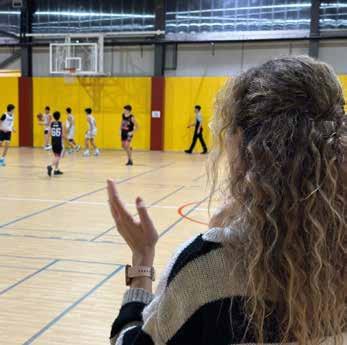
It’s a very unusual job and many of us are hooked on it. In some airlines, our colleagues continue flying until retirement. Things have changed. Now, job stability is difficult to find in any industry. Seniority can contribute a lot to this profession.
How is a day in Ana Pérez’s life?
Well! The answer could be very long depending on the day we choose, because each day is different. There’s no routine in this line of work—the time and place where the working day ends can be very different. But I’ll focus on a standard flight day. I wake up early to take my youngest son to school. I then do some house chores and get ready to arrive at the airport at about 3pm. I may have four scheduled jumps (flights) and finish at around 11pm. Sometimes I have three jumps, the last one being longer, and I end up spending the night elsewhere. On these occasions my working day is quite different: I wake up in a hotel, someone picks me up to take me to the airport, I make another three jumps, and then I return home.
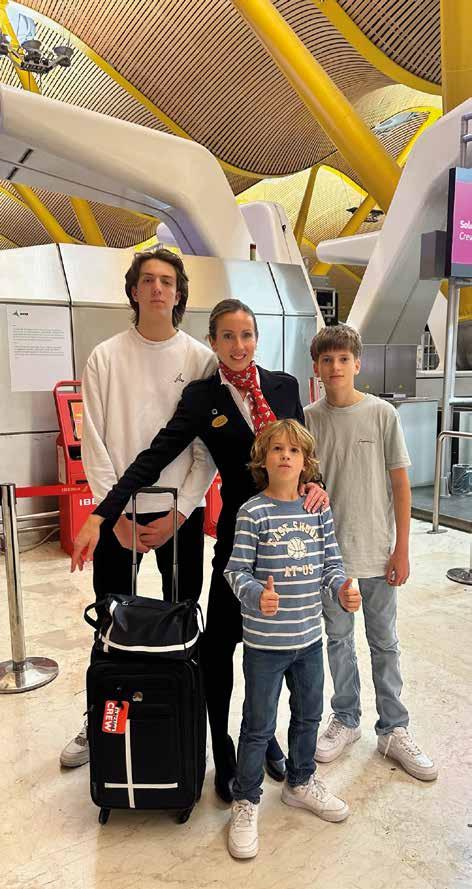
¿Cuándo comenzó a trabajar en Air Nostrum?
La fecha exacta fue el 21 de enero de 2003, hace ya mucho tiempo, aunque no tenga esa sensación. De hecho, creo que la frase «el tiempo pasa volando» viene de ahí, de que el tiempo, volando, pasa muy rápido…
Usted rompe muchos estereotipos. Lleva veintiún años en la compañía. Mucho tiempo, teniendo en cuenta que siempre se dice que esta es una profesión para personas jóvenes… Yo también pensaba eso cuando entré. No contaba con llegar a los dos años y, sorprendentemente, aquí sigo. Me hicieron fija a los dos años. La verdad es que me hizo mucha ilusión, es el momento en el que estás más adaptada, en el que ya conoces a los compañeros y, si encajas, te encuentras a gusto. Es un trabajo muy particular y a muchos nos engancha. En algunas compañías, siguen volando hasta la edad de jubilación. Las cosas cambian. Ahora, la estabilidad laboral es difícil en cualquier sector. Y la madurez puede aportar mucho en esta profesión.
¿Cómo es un día en la vida de Ana Pérez?
¡Uuf! La respuesta podría ser muy larga y depender del día que elija, pues cada día es distinto. La rutina en este trabajo no existe. Es decir, el horario y el lugar donde acabe puede ser muy diferente. Pero me voy a centrar en un día de vuelo estándar. Me levanto pronto, para llevar a mi hijo pequeño al cole; luego, hago tareas domésticas y me preparo para llegar sobre las 15:00 horas al aeropuerto. Puedo tener programados cuatro saltos –vuelos–, y acabar sobre las 23.00 horas. Otras veces son tres saltos, siendo más largo el último, y acabo fuera. En estas ocasiones el día es bastante distinto: te levantas en un hotel, te recogen para llegar el aeropuerto, haces otros tres saltos y regresas a casa.


Is it easier to find a good work-life balance in regional aviation given that you don’t make long trips or spend a lot of time abroad? It might be. I guess that especially jet lag can make work-life balance much more complicated, although we also spend many nights away from home.
How many nights have you slept away from home? My goodness! If I did the math, it would take me forever. So many! Thankfully I love hotels!
You also have three children; how do you manage to find the balance? Yes, that’s right, I have three lovely children! It’s thanks to reduced working hours for childcare. Air Nostrum allows us to put together up to fifteen days a month to help find the balance. And of course, thanks to the support of my husband, my parents and a person who helps us at home. It can be doable.
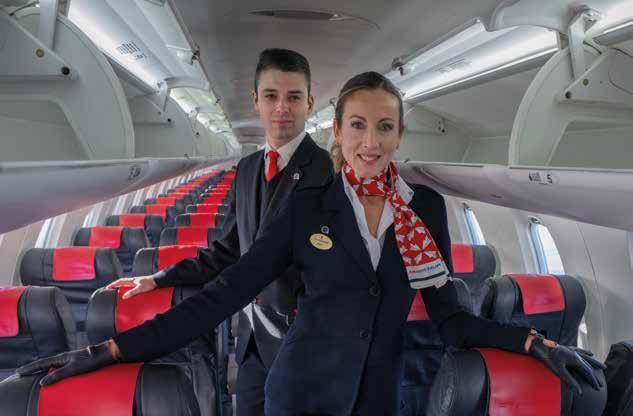
¿En aviación regional es más sencillo conciliar al no tener que hacer grandes viajes y mucho tiempo fuera de casa?
Quizá sí, supongo que, sobre todo por el jet lag, debe ser más complicada la conciliación, aunque aquí también pasamos muchas noches fuera de casa.
¿Cuántas noches ha dormido usted fuera de su casa?
¡Madre mía! Si hiciera la cuenta no acabaría nunca. ¡Muchísimas! ¡Menos mal que me encantan los hoteles!
Además, es madre de tres hijos, ¿cómo consigue la conciliación?
Sí, eso es… ¡mis tres soles! Pues gracias a la reducción de jornada por cuidado de hijos. En Air Nostrum te permiten juntar hasta quince días al mes para facilitar la conciliación. Y por supuesto, gracias al apoyo de mi marido, de mis padres y de una persona que nos ayuda en casa, se hace bastante llevadero…
¿Siente que ha perdido parte de la vida familiar?
Algunas veces sí… Sobre todo, al trabajar en festivos, te pierdas muchas celebraciones familiares, partidos de baloncesto de mis hijos, que a veces surgen y no puedes ir.
¿Le da tiempo a tener otras aficiones?
Sí, afortunadamente. Me parece muy importante buscar un hueco para desconectar de todas las obligaciones. Me encanta la música, ir a conciertos y hacer deporte, como pilates y baile.

Do you feel you have missed part of your family life?
Sometimes I do, especially when working on holidays. I miss many family celebrations and some of my children’s basketball games that come up and I have to skip.
Does it give you time to have other hobbies?
Yes, fortunately. I think it’s very important to find a space to disconnect from work. I love music, going to concerts, and doing sports such as Pilates and dancing.

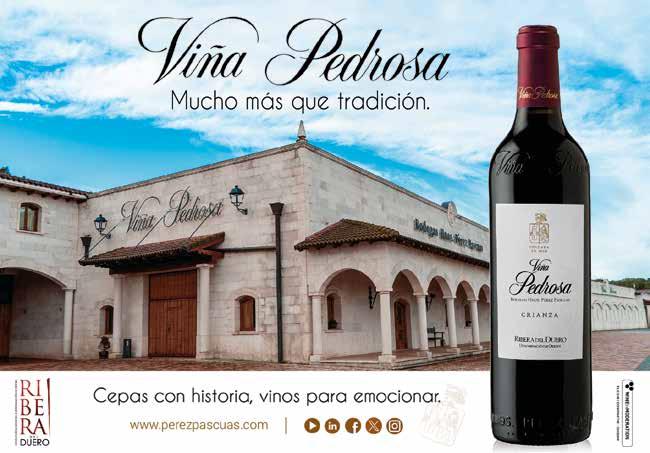

Toñy Ramos
Directora SER Melilla Director at SER Melilla
Navegamos sobre las nubes desafiando la gravedad en este viaje para un no se sabe qué, o una solución medicinal, viaje para decir adiós a alguien que no volverá, viaje para un reencuentro o para escapar de uno mismo. Viaje para un beso.
Cada vez que viajamos cargamos en nuestra maleta cosas que creemos imprescindibles sin tener en cuenta que lo importante es lo que te traes a la vuelta.
Hay que dejar hueco para esa mejilla que se llenó de lágrimas en el adiós, o que se sonrojó con el beso. Hueco para la sensación del abrazo en el reencuentro, para que el paso del tiempo no la borre.
Un viaje empieza cuando comienzas a planificarlo, y después el viaje no lo haces tú, el viaje te hace a ti, porque en tu recorrido te llenarás con otras costumbres, con otros amaneceres que irán dando forma a una nueva persona.
Cada tarjeta de embarque o cada sello en nuestro pasaporte habla de nuestra historia, porque en cada sitio habremos dejado un trozo de nosotros en ese lugar que dio paz a nuestra alma, o en el lugar que caminamos como individuos anó-
nimos entre la multitud. Cada viaje nos da y nos quita.
En el control de fronteras, el policía pasa una hoja, y otra, de tu pasaporte, tú, mantienes los dedos cruzados rezando que todo el papeleo esté correcto, mientras él está leyendo tus pasos por el mundo, y suspiras cuando suena el «po-po» que te abre la puerta a una nueva aventura.
Un viaje, ya sea corto o largo, forma parte de un gran complot, de un hilo que une y enlaza a cada una de las personas que lo hacen posible. A esos que veas o no, están unidos a ti y que también te unen al resto de pasajeros, porque, aunque las máquinas nos hayan quitado el sonido del tampón en el pasaporte o un holograma de azafata sea el que nos salude, hay algo que no puede ser sustituido por la nueva tecnología: la sensación de amor y de pérdida en todas sus dimensiones y formas. Y esas sensaciones son las que nos conectan a todos los que ahora estamos en este avión, como seres humanos que somos. Viajar nos hace más fuertes, más sabios, más persona.
Gracias a todos los que en estas fechas hacen posible esos rencuentros de vida.
We sail over the clouds defying gravity on this journey with an indefinite purpose— to find healing, to say goodbye to a person who’ll never come back, to reunite with others, to escape from ourselves, or to kiss someone.
Every time we travel, we carry in our suitcase things that we believe essential, not realising that what matters most is what we bring back from our trip.
We have to leave room for that face with tears rolling down the cheek during the goodbyes or which blushed after a kiss, and for the feeling of the homecoming hug, so that they don’t fade away with time.
A trip begins when you start planning it, but you don’t take the trip, the trip takes you. During your journey, you will embrace other customs and watch other sunrises that will transform you into a new person.
Every boarding pass and every stamp on our passport speaks of our story, because in every place we will have left a piece of us in a corner that soothed our soul, or on the streets we walked as strangers among the crowd. Every trip is a give and take.
At border control, as the police officer flickers through your passport, you keep your fingers crossed praying that all the paperwork is in order while he is retracing your steps around the world and breathing a sigh of relief when the door beeps letting you through to a new adventure.
A trip, whether short or long, is part of a greater plan, of a thread that unites and joins together every person that made it possible. The people you might see or not see are connected to you. The thread also binds you to the other passengers because, even though the machines may have taken away the rubber stamp thud and a holographic flight attendant might greet us, there’s something that cannot be replaced by the new technology: the feeling of love and loss in all its forms and manifestations. Those feelings are connecting us all now on board this plane as human beings. Travelling makes us stronger, wiser, more human.
Thank you to all those who make our life reunions possible at this time of the year.

